A guide to the Pelion Greece
The picturesque Pelion region of Greece combines charming mountain villages with the gorgeous beaches and small fishing ports by the coast. The gateway city for this beautiful region is Volos, and the peninsula curves around the sheltered Pagasetic Gulf on one side, with the Aegean sea on the other. Learn about all the things to do in Pelion Greece and the diversity of landscapes that can be found within a small region. Pelion is a place for all seasons, known as much for its autumn walks and winter snow as for the beaches and summertime fun that attract mainly Greek holidaymakers.
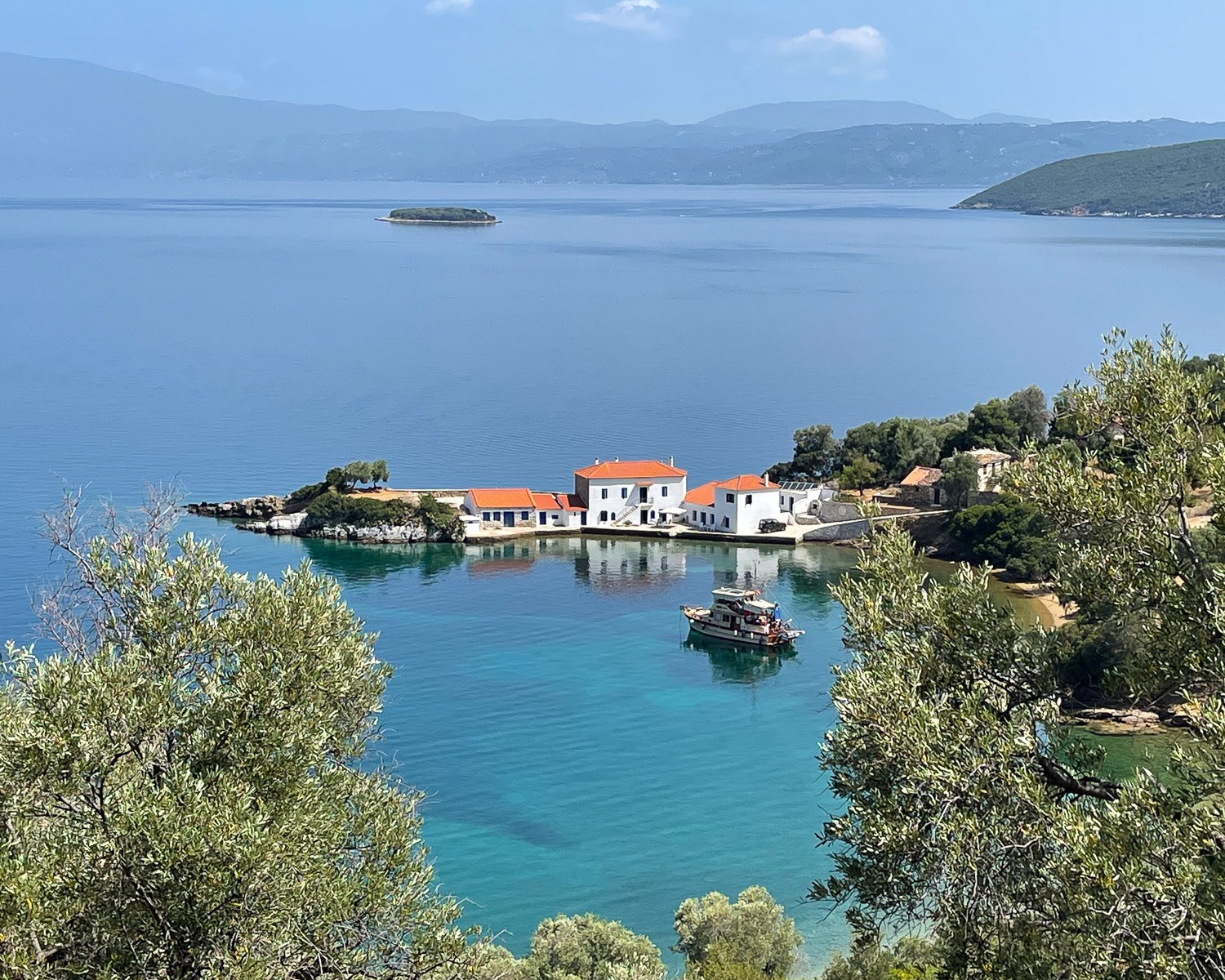
This article may contain affiliate links that provide commission on purchases you make at no extra cost to you. As an Amazon Associate I earn from qualifying purchases.
Where is the Pelion region?
The Pelion is in central Greece, part of the province of Thessaly that is known for its bountiful farms and produce. It’s easy to reach the Pelion by rail, bus or road in around 4 hours from both Athens and Thessaloniki which have international airports, or via the smaller local airport at Volos that brings in some summer charter flights.The peninsula is bounded by the sea and located close to the Sporades island group, so it’s often visited in summer by sailors who charter yachts to sail around this archipelago.
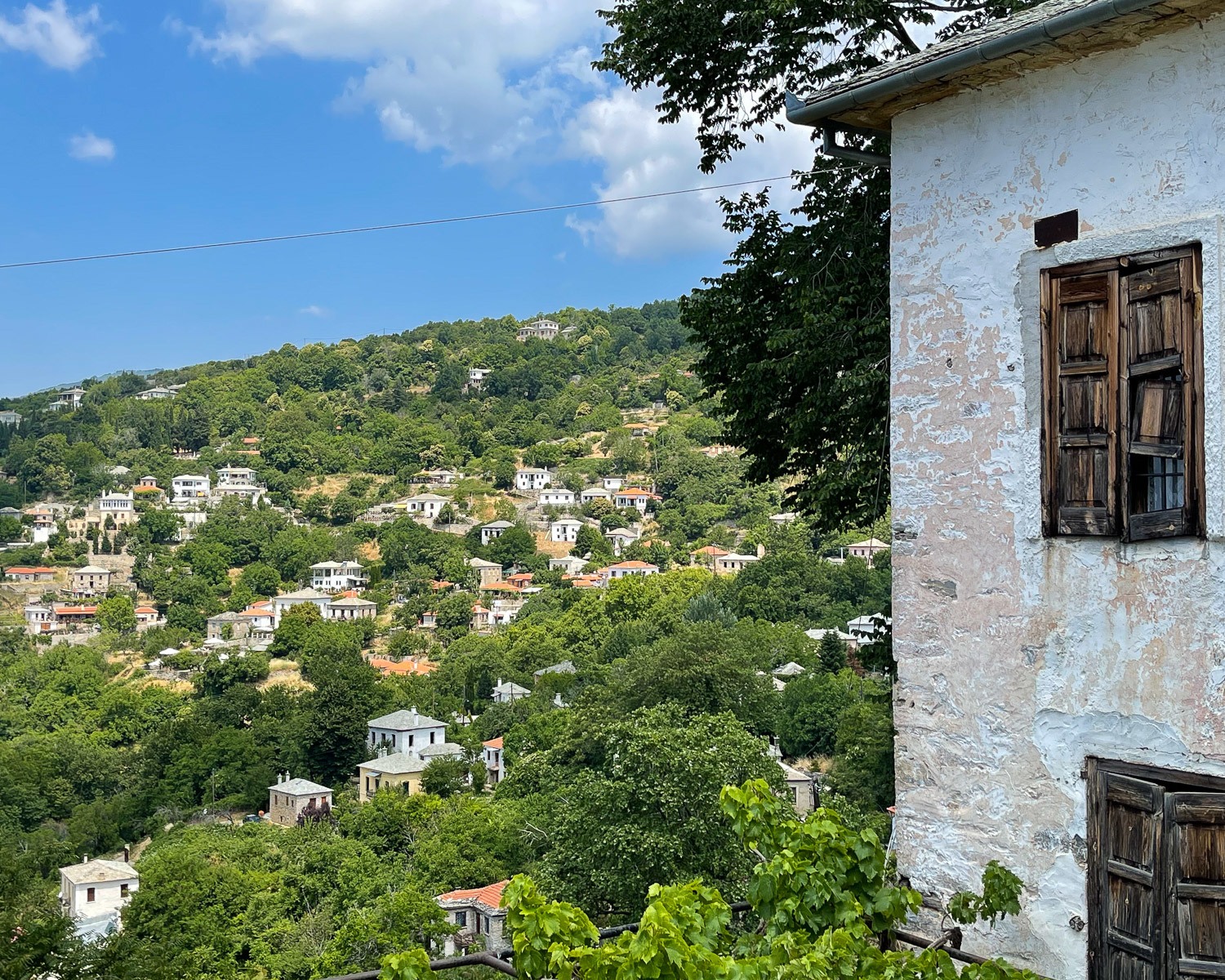
Best things to do in Pelion Greece?
The pleasure of the Pelion is that cool, shady mountain villages are just a short drive from beautiful beaches and pretty fishing ports, so you get the best of Greece in a small area. Here’s a quick overview of the best things to do in the Pelion, but read further into the article for more detail on the Pelion and its charming attractions.
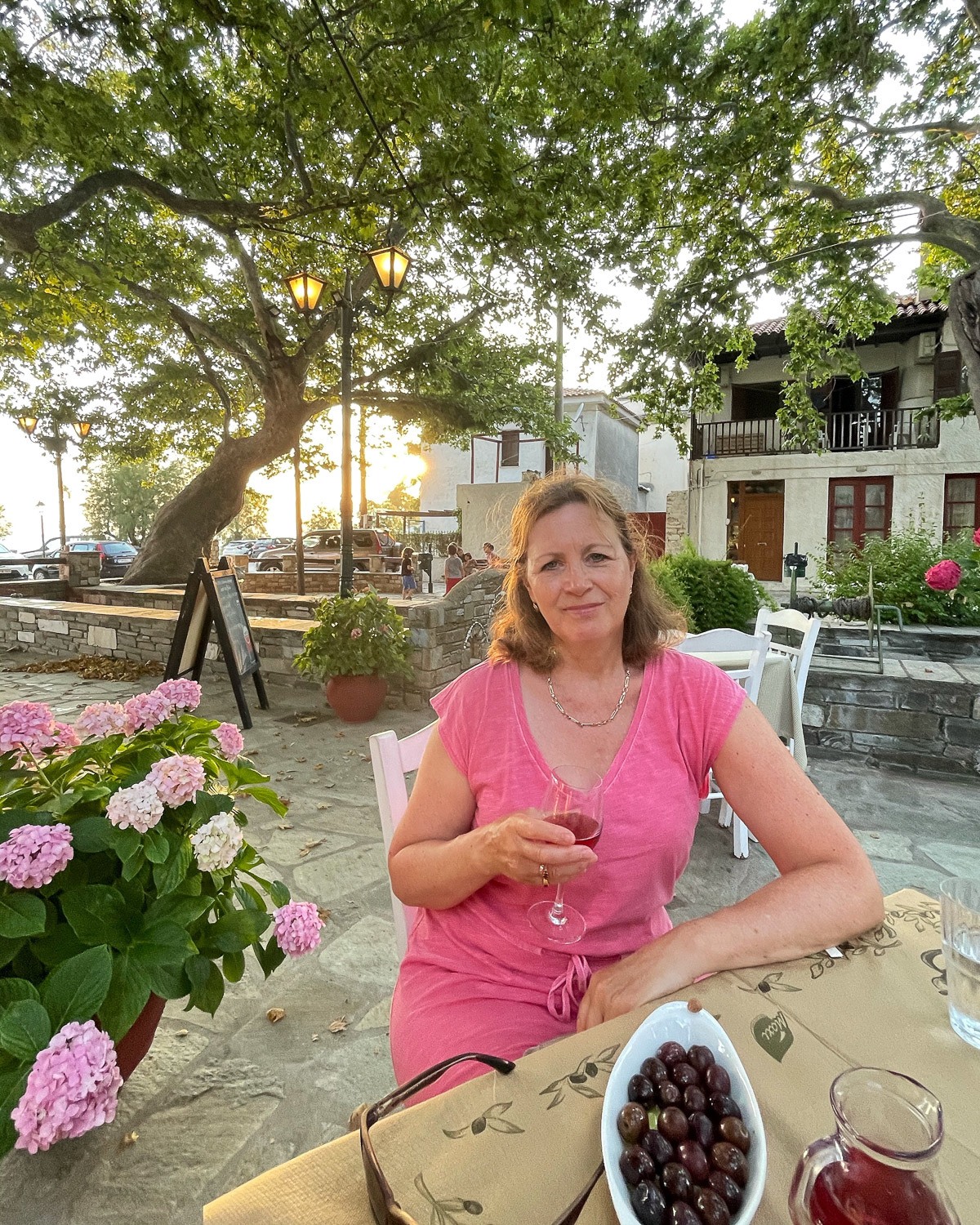
- Take the Little train of Pelion from a station just outside Volos. This heritage steam railway takes you along narrow tracks that skirt the hillside, with views over the sea until you reach the pretty mountain village of Milies.
- Visit Makrinitsa, known as the Balcony of the Pelion, the best known of the mountain villages, with shady squares and traditional stone mansions, where you can relax for an hour or two over lunch with a view over Volos. Its neighbouring village Portaria is an easy walk away and another good place for lunch.
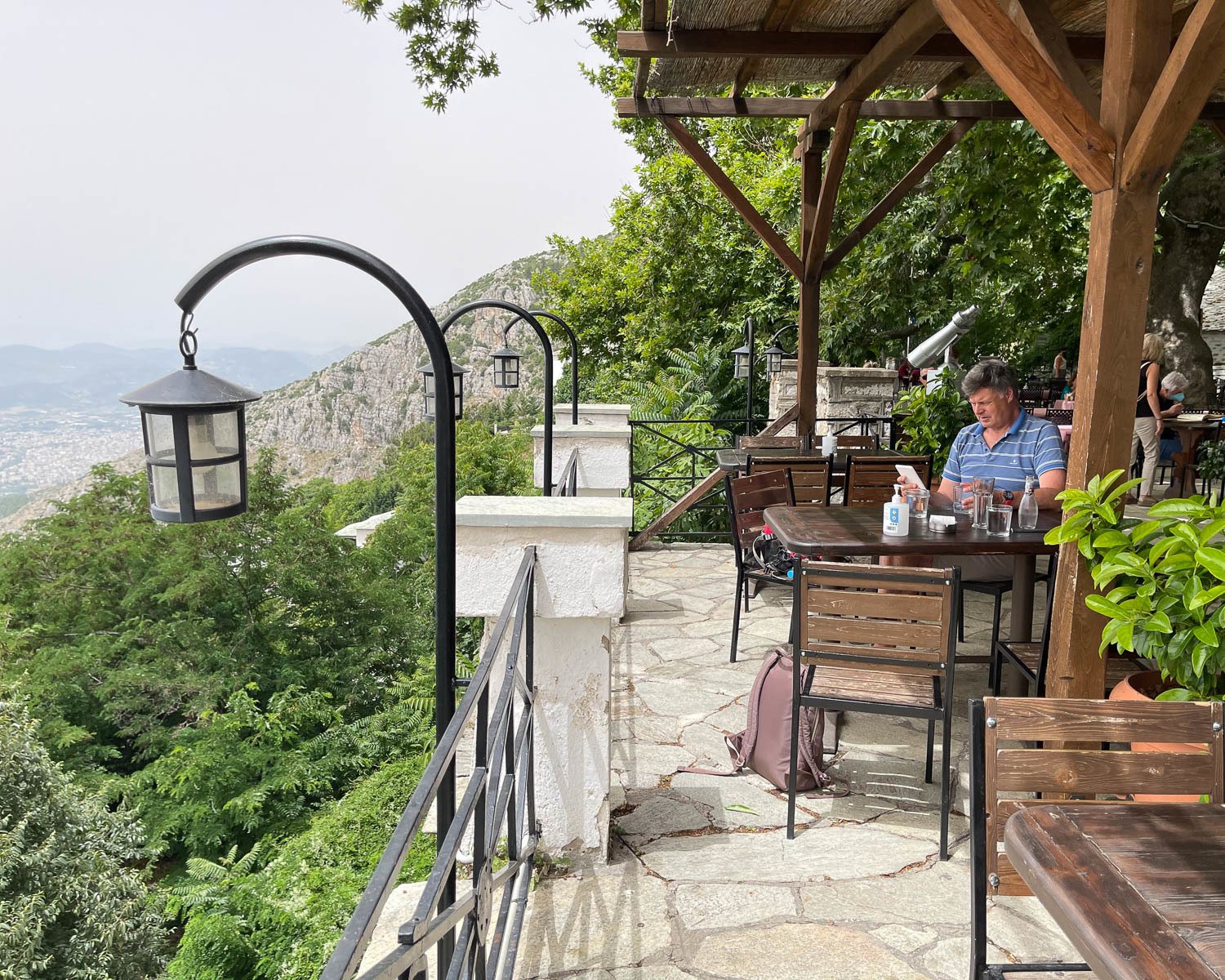
- Discover more mountain villages of the Pelion, have lunch in a shady square surrounded by hydrangeas, cool your hands in a fountain, stay in one of the small stone mansion guest houses, visit the local church to admire frescoes and icons.
- Visit some of the pretty seaside villages that line the calm waters of the Pagasetic Gulf, for swimming from their beaches or dinner in their seafood restaurants. Our favourites were Agria, which is a short drive from Volos and Afissos, which has two popular beaches at either end of the village.
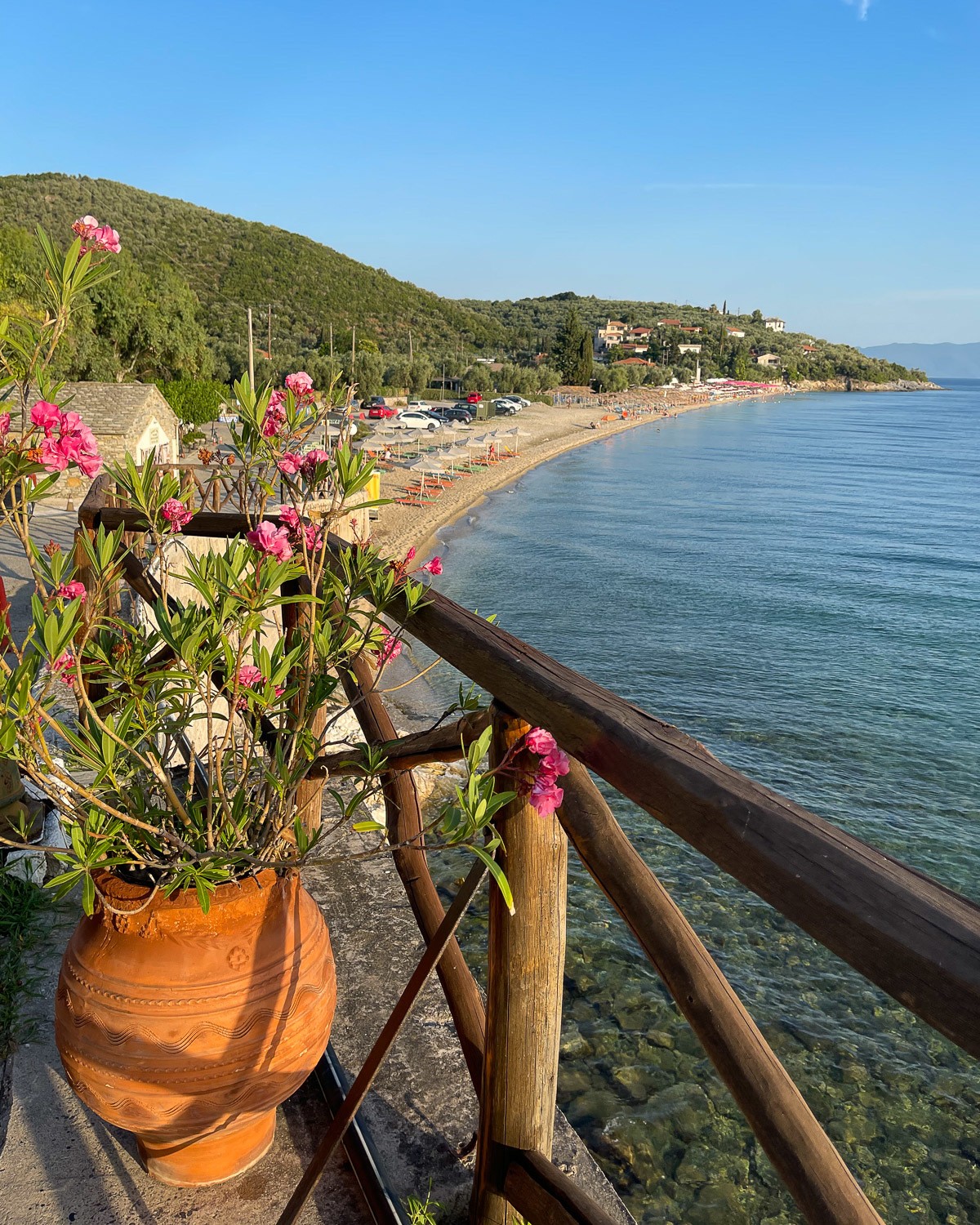
- Enjoy the gorgeous wide sandy beaches of the eastern Aegean coast, or take a boat trip to explore this coastline further. Our favourites were Agios Ioannis, Damouchari, Potistika and Limnionas.
- Discover the Mama Mia film locations at Damouchari where the small harbour was used in some of the scenes from the film – remember the ladies jumping off the jetty?
- Take a boat trip to the island of Trikeri, at the tip of the Pelion Peninsula, with its monasteries and seafood restaurants.
- Go hiking in the mountains, there are many stone paved paths connecting villages known as kalderimi, that were used in the old days to get around by donkey or on foot, before main roads were built.
- Discover the traditional food of the Pelion, the fresh seafood on the coast and the fruit preserves that are made in the mountain villages and offered as a “sweet spoon” to guests.
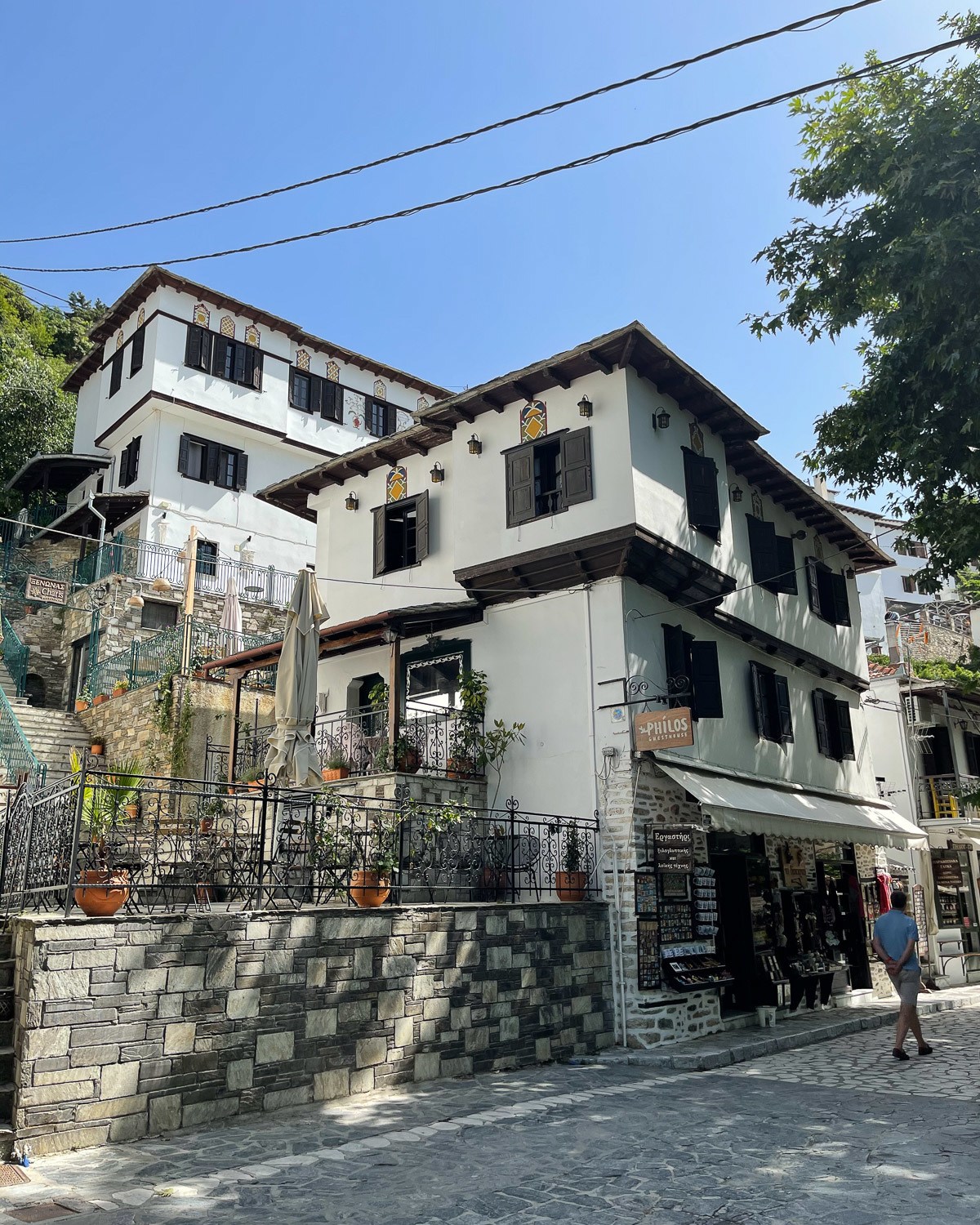
Volos – gateway city for the Pelion
When visiting the Pelion, you’ll probably arrive first in Volos, a port and university city that’s well worth exploring for a day or two. I’ve written a separate article about all the things to do in Volos, but here’s a quick overview of what you can enjoy.
- Wander around the harbour and marina that attracts sailors from all over the world. You can stroll, cycle or just while away some time in one of the shady cafes that line the seafront.
- Hire a bike and use it to explore the city which is flat and very bike friendly. You can cycle right along the harbour front to the town beaches or take a path to the popular Alykes beach, just around the bay.
- Try the Tsipouro, an aniseed flavour spirit that’s served with lots of small plates – buy a drink and the food comes for free!
- Check out some of the street art in Volos, a result of past mural festivals, with work by some of Europe’s leading urban artists.
- Explore the heritage of Volos in the old city walls, the brick museum, archaeology museum and museum of the city.
Read more in my article on all the best things to do in Volos
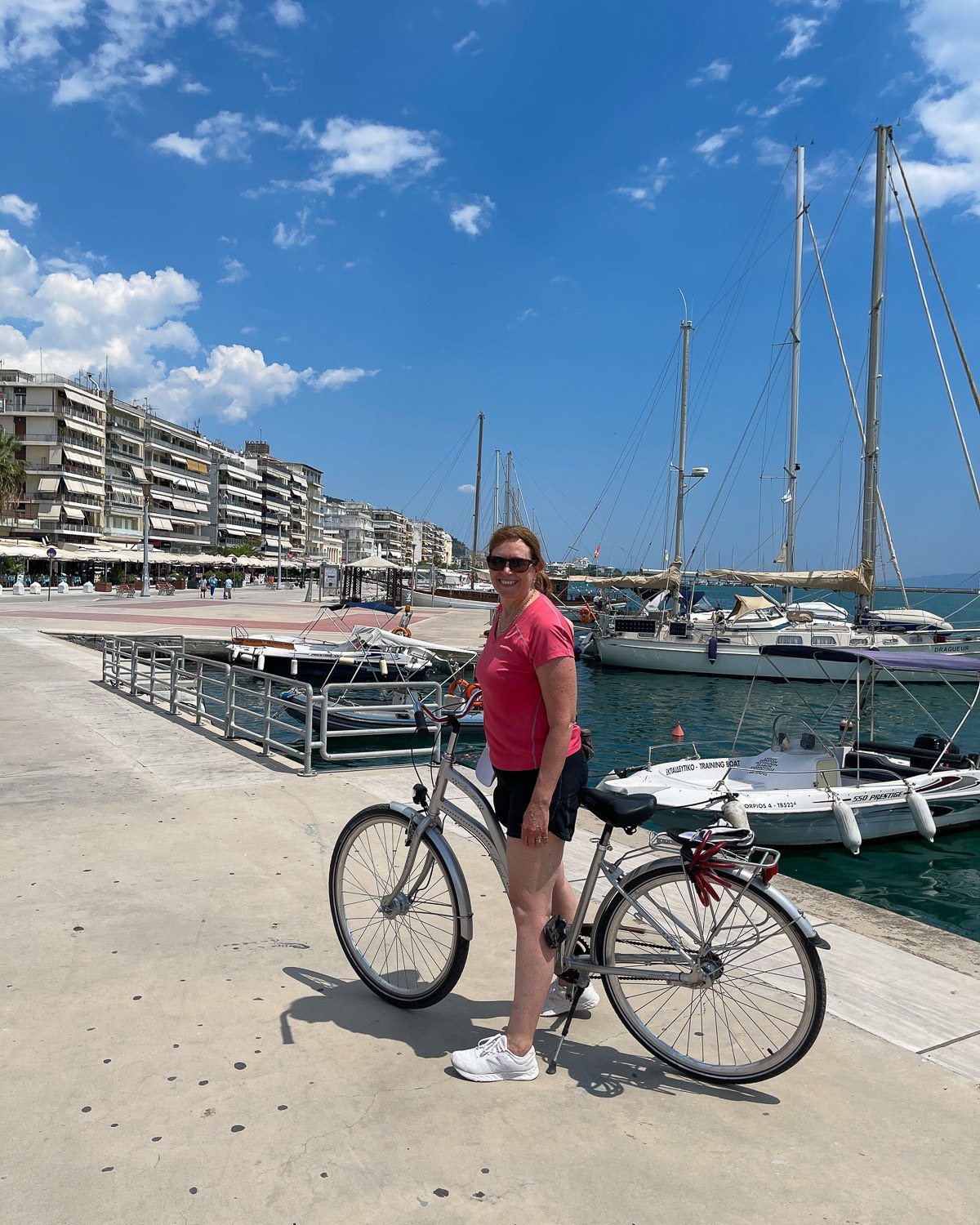
Where to stay in Volos
I’ve given more details about the best places to stay in the Pelion at the end of this article, but here’s an overview of some places we recommend.
Hotel Aegli – right on the harbour front and convenient for the bus station, train station and ferry port. This 4 star hotel is made up of two neo-classical buildings that enclose a glass covered central atrium. With 72 contemporary style rooms and suites, the hotel is an excellent choice of hotel that’s stylish but central, for a city break in Volos. Check prices and book for Hotel Aegli.
Domotel Xenia Volos – this 5 star hotel is the closest thing you’ll get to a resort style hotel within the city, located right on the seafront with views towards the Pagasetic Gulf. Enjoy the pleasant gardens, swimming pools and spa, yet you are just a short walk from the harbour front, shopping and restaurants of Volos. The hotel is a good choice to combine relaxation with sightseeing and is also ideal for families. Check prices and book for Domotel Xenia Volos.
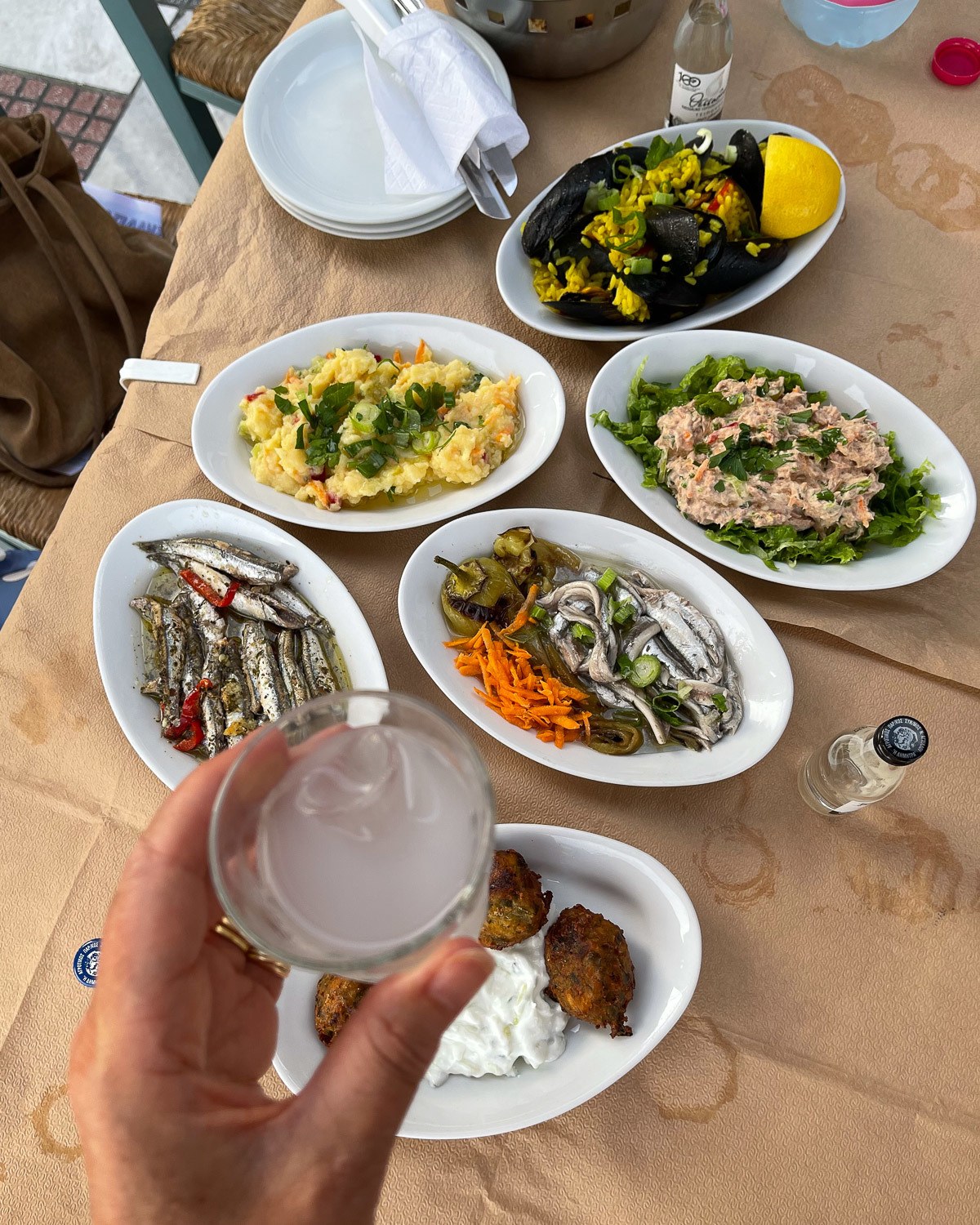
More things to do in Pelion Greece
So now you’ve got the highlights, let’s dive into a bit more details about all the things to do in this charming region of Greece.
1. Little train of Pelion
One of the most popular trips in the Pelion is the train ride on the Little Train of Pelion up to the mountain villages of Ano Gatzea and Milies. Starting at Ano Lekhonia Station (25 minute drive or local bus ride from Volos) the vintage train winds up through the gorges and forests of the Pelion with a brief stop at the small village of Ano Gatzea. On arrival at Milies station, passengers have the novelty of helping to turn the train around on its turntable, before the train continues on the return journey a few hours later.
This narrow gauge steam train is part of the route that was built in the 1890s and once ran all the way to Volos, connecting the mountain villages of the Pelion with the metropolis. The Pelion train operates on weekends and leaves at 10am, returning in the afternoon, so it makes a full day’s excursion. You can buy tickets at the station ticket office for either direction, but in high season it may be best to pre-book in advance on the Trainose website.
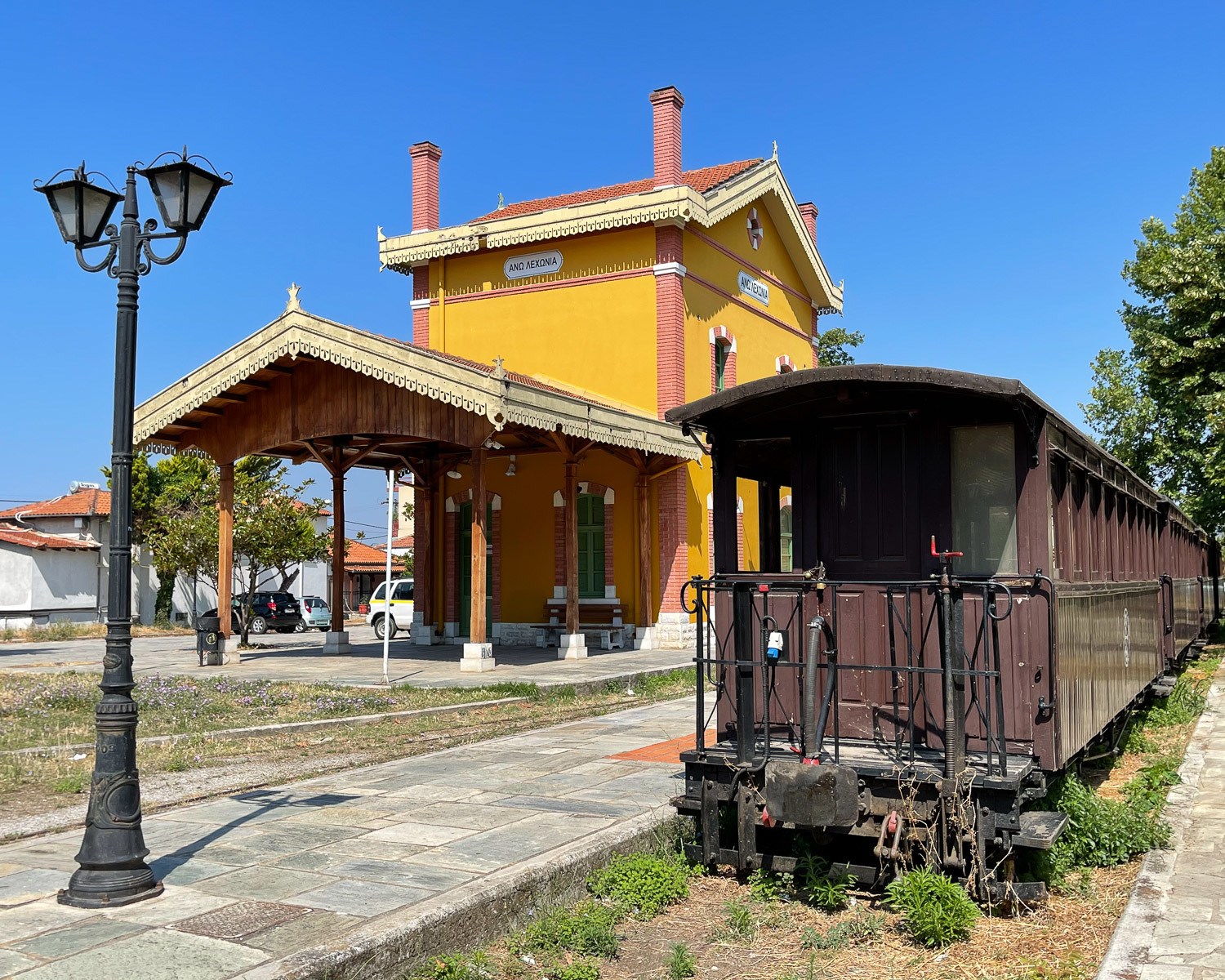
2. Walk the route of the Pelion train
Unfortunately the train was not running while we were there, so as an alternative we hiked up the hill from Kala Nera, then joined the railway track at Argireika walking along it to Milies. It was a wonderful walk with views over the countryside and sea, although very hot as we were there in June!
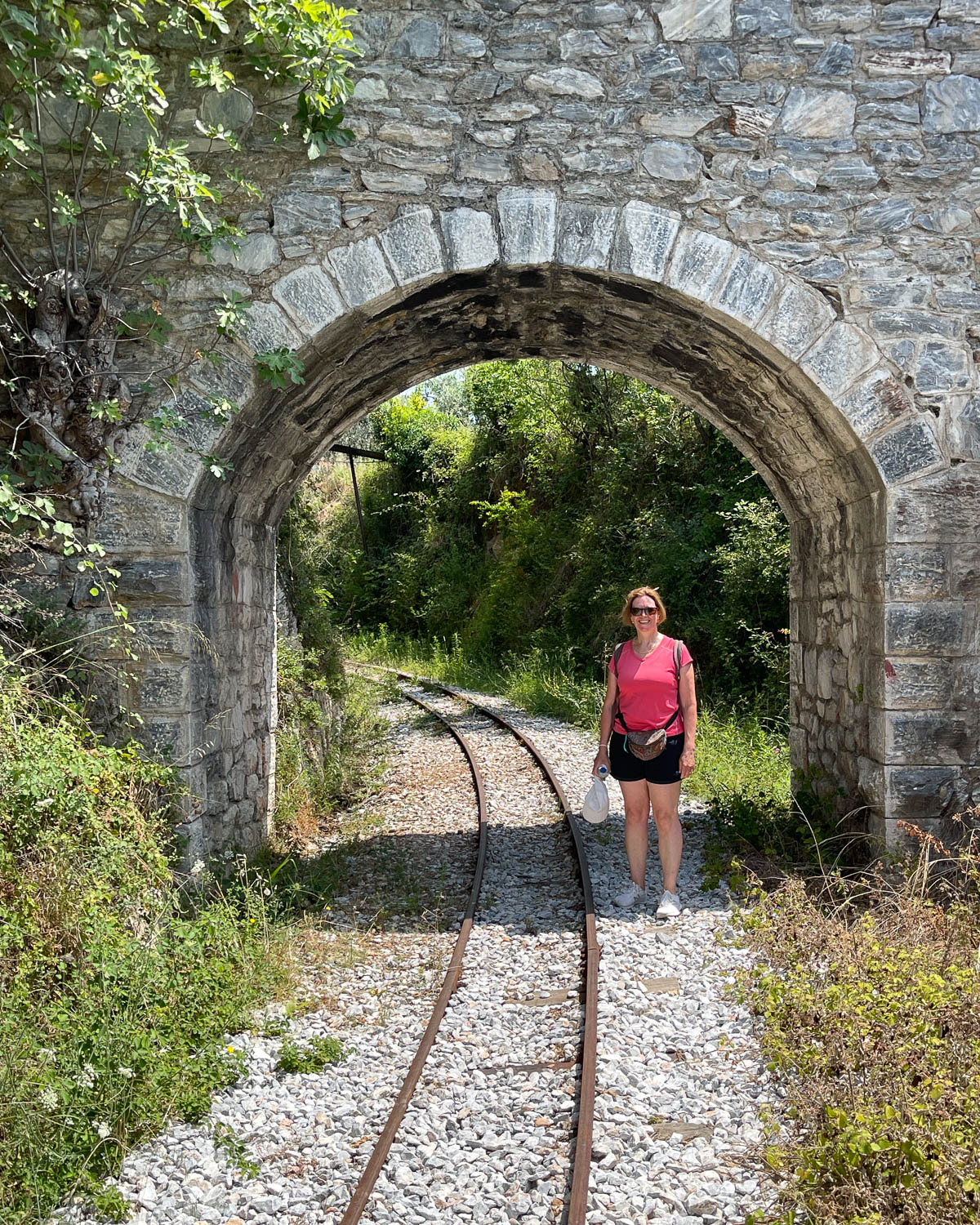
The railway crosses some steep gullies, with the stone arches of Kalorama bridge and the metal De Chirico bridge. Our walk offered the same views over the sea and surrounding countryside that you enjoy from the train, before we arrived at the large mountain village of Milies. A steep walk up cobbled paths took us to the shady square of the village centre, where we relaxed with a well earned drink at one of the cafes. If they are open, be sure to visit the beautiful church and small town museum.
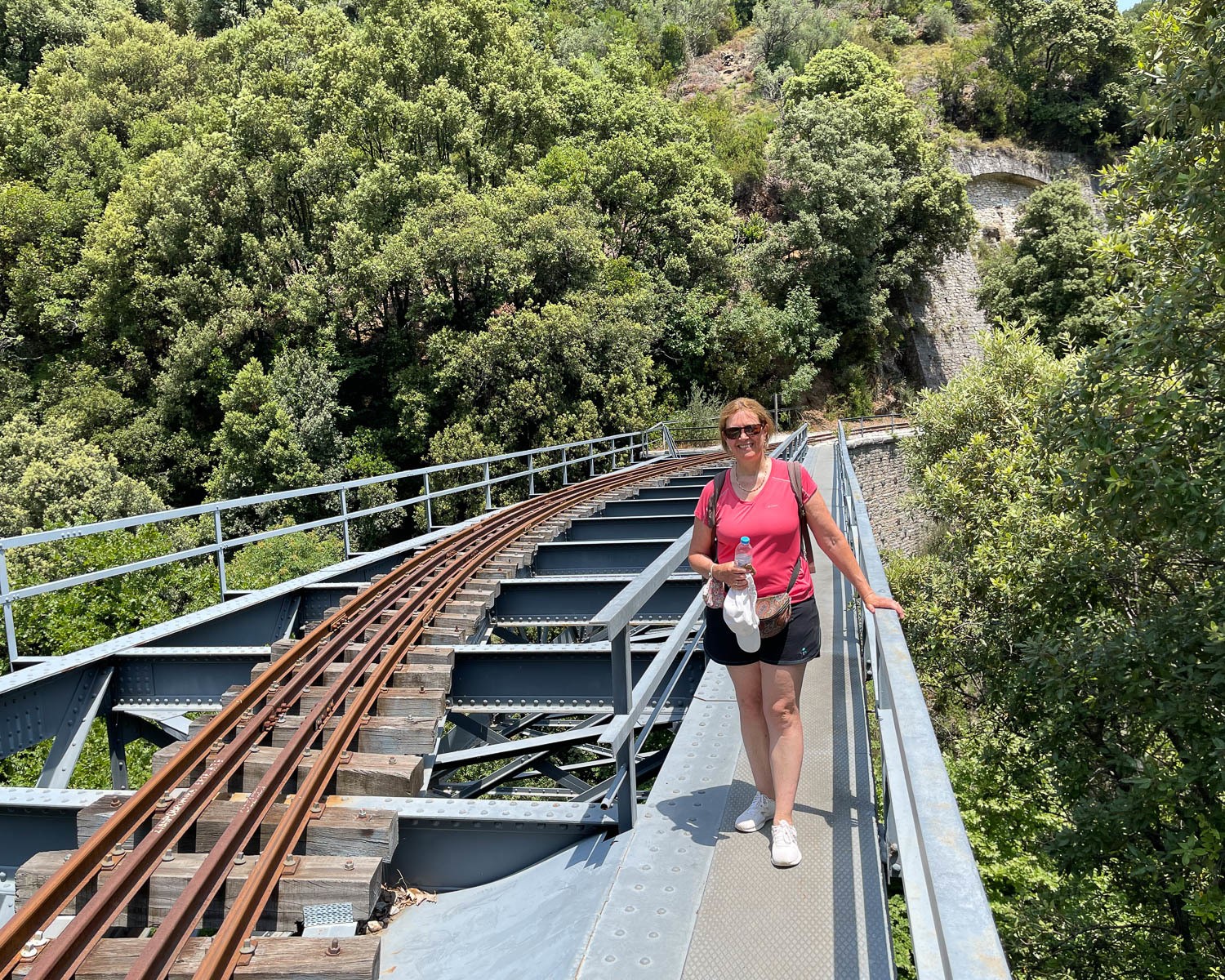
3. Makrinitsa – balcony of Mount Pelion
Another great day out from Volos is to visit the mountain village of Makrinitsa, which has a beautiful location set on the mountainside high above Volos. This large village is known as the Balcony of Pelion, with stunning views over the city and Pagasetic Gulf.
We strolled through old cobbled streets to the main square, which is surrounded by traditional mansions, with their stone tiled roofs and painted window decorations. A typical house of the Pelion has three floors, with the lower two floors made of stone with small windows to keep you cosy in winter and an upper floor made of wood with more windows that is mainly used in summer.
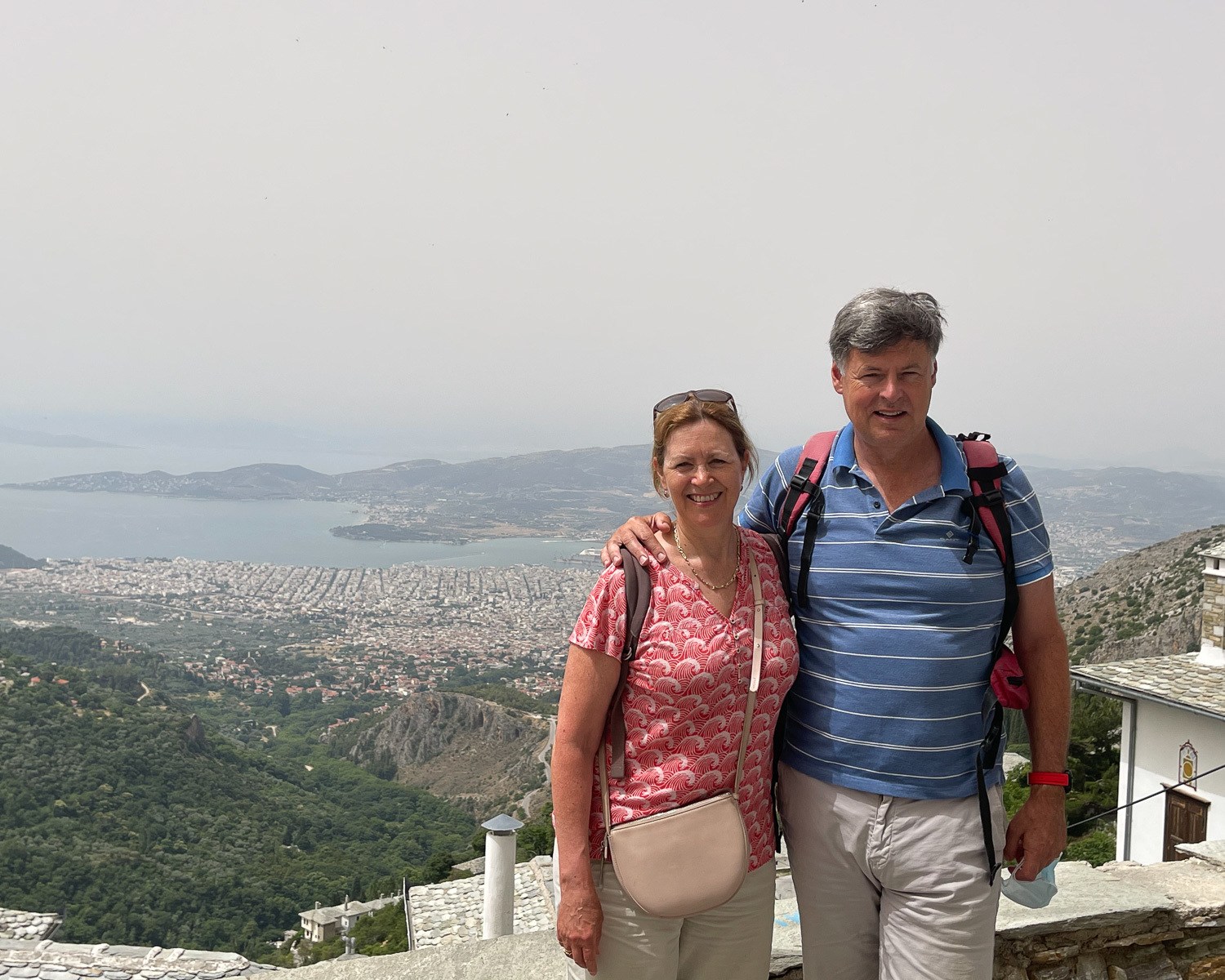
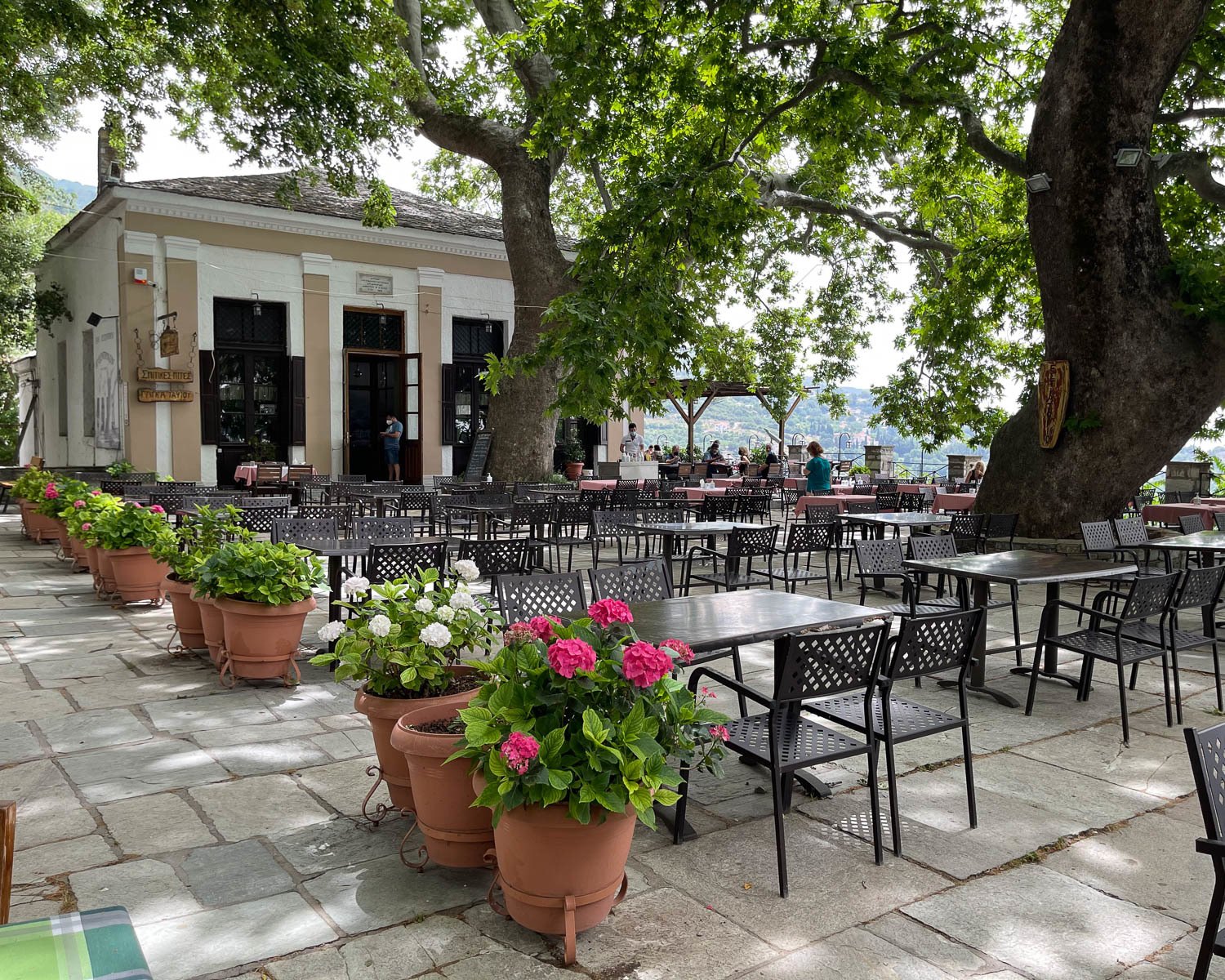
Sit under the shady plane trees in the main square for a drink or have lunch in one of the many restaurants. We also took a look around the Byzantine Museum in the main square which houses beautiful icons and religious paintings that have been collected from churches and monasteries in the area.
Although we visited many other mountain villages of the Pelion during our trip, Makrinitsa is the largest, most beautiful and most accessible from Volos, so if you only have time to visit one village, it should be here. If time permits, also visit the nearby village of Portaria, as you can easily walk along the road between the two villages.
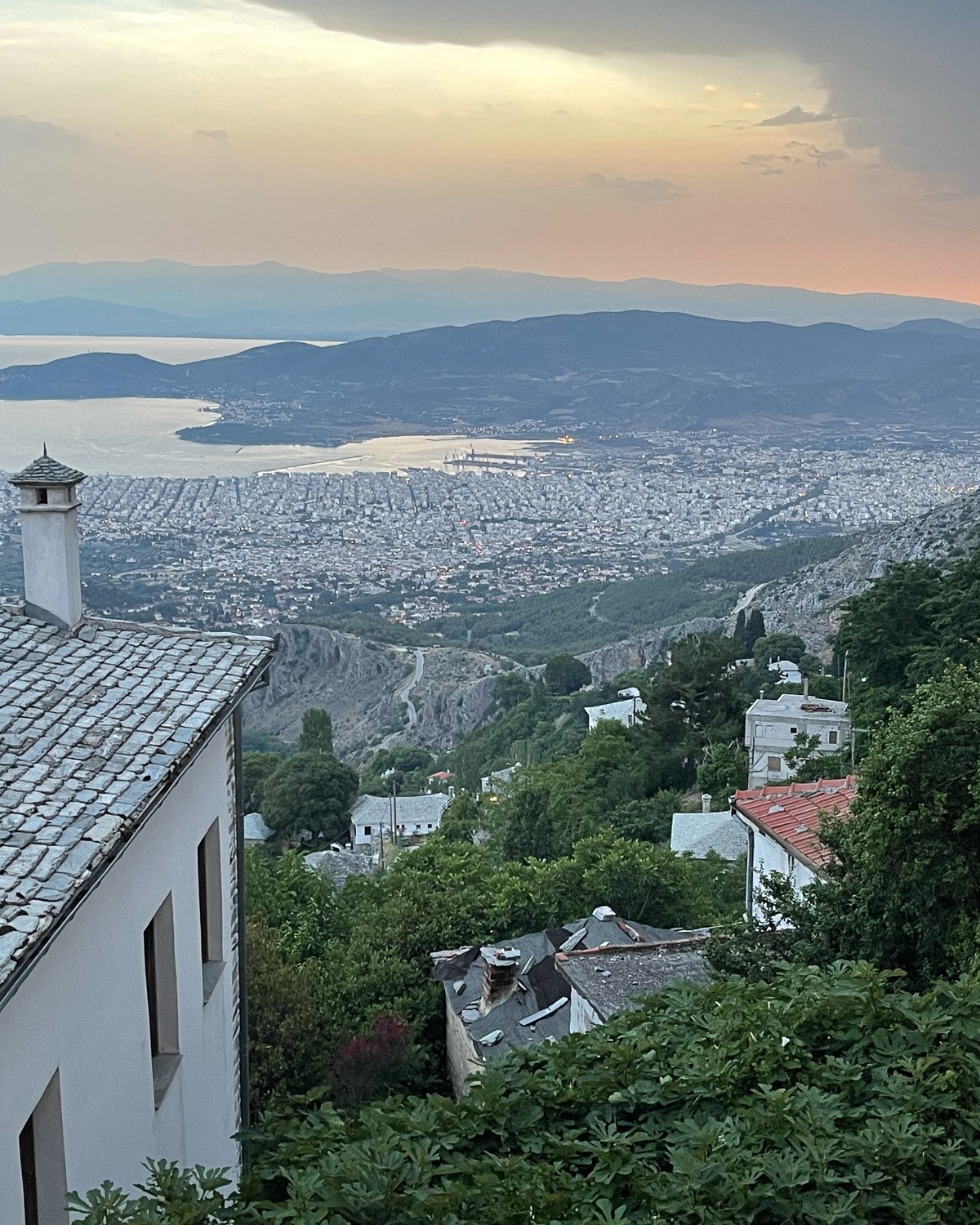
Getting there: From Volos it’s a 35 minute drive via the nearby village of Portaria or you can take the KTEA bus to Portaria – Makrinitsa which runs several times through the day. At the entrance to Makrinitsa is a parking area, but parking is limited so arrive early, take the bus, or stay a night in the village as we did at the lovely Hotel Selina Centavrus, which has its own parking garage.
4. Portaria – and the Centaur’s Path
The village of Portaria is also set on the mountainside overlooking Volos and the road to Makrinitsa passes through here. There are a few larger hotels in Porteria and car access is slightly easier, but the views are not so impressive, nor the old centre as pretty as Makrinitsa. Still, its worth a stop at the shops selling souvenirs and local specialties, and at the entrance to the town is the well known “Centaur’s Path”.
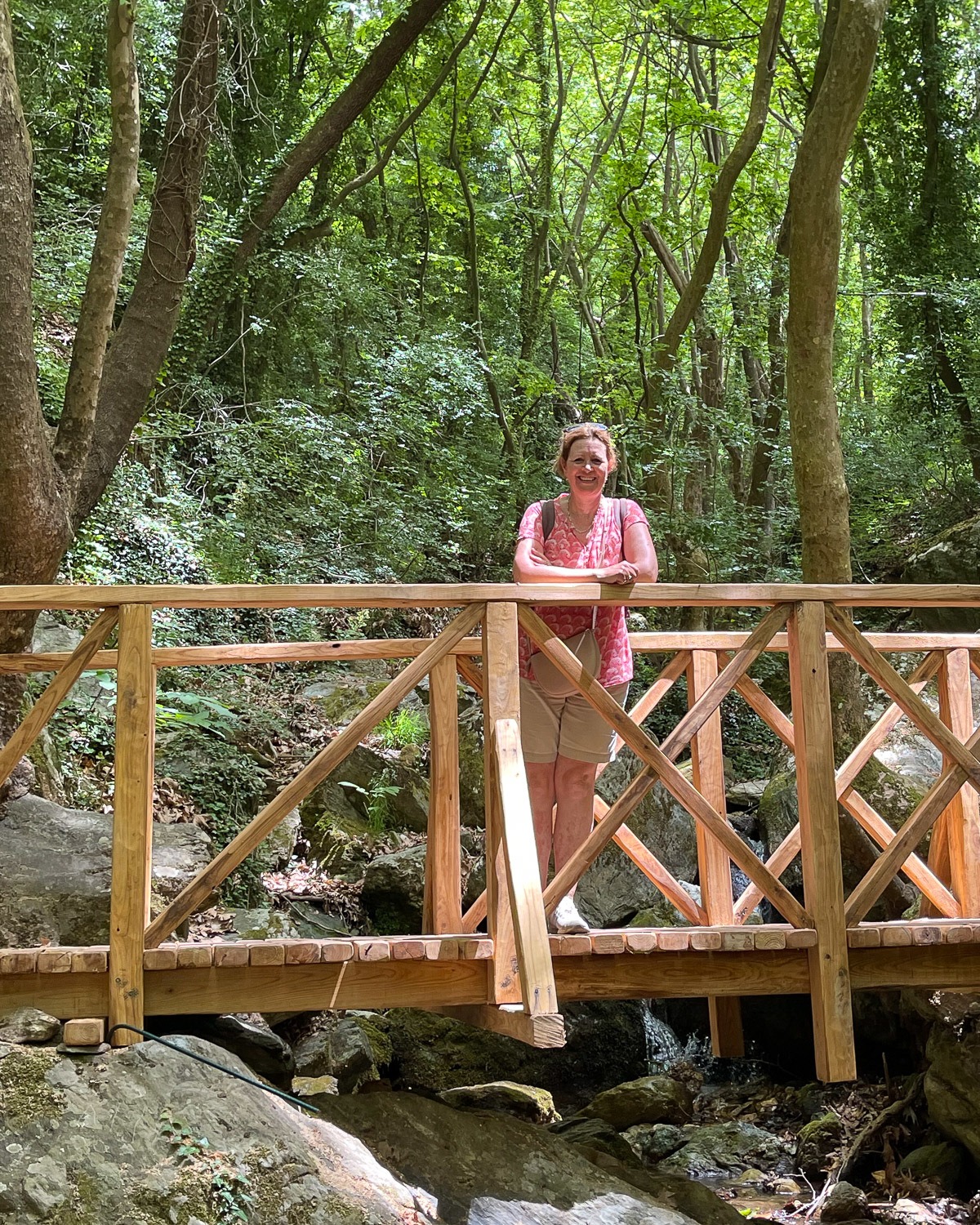
According to ancient Greek myth, the centaurs, half man, half horse, lived in the caves of Mt Pelion, hunting wild animals in the forest. The Centaur’s Path is a short, marked trail that runs up through the woodland, alongside fast flowing streams and rocks. It makes a pleasant Sunday stroll but took us less than an hour, so if you are looking for a more challenging hike I’d look at some of the other paved paths or kalderimis that run between certain villages. If you’d like to explore the high mountain paths of central Pelion by bike, try this half day e-bike tour from close to Portaria to the coast.
Close to Portaria is a ski centre that is open in winter, so this is a popular place to stay for Greeks taking a winter break. The central square also has the Kritsa Gastronomy Hotel which is known for its local cuisine, so this makes a good place to stop for lunch.

Where to stay in Makrinitsa and Portaria
Selina Centavrus Pelion in Makrinitsa – we stayed here a couple of nights and really enjoyed getting away from the city into the mountains. The hotel is made up of a collection of traditional houses, with its own parking garages. The decor here is stylish and contemporary, but with lots of reference in the wall murals and accessories to local crafts and traditions. A short walk up the steep path above the hotel takes you to the central square of Makrinitsa. Check prices and book for Selina Centavrus Pelion.
Kritsa Gastronomy Hotel in Portaria – this is a charming, small hotel in the shady square in the centre of Portaria, which is close to Makrinitsa. The rooms are traditional and comfortable, but the hotel has a strong reputation for its local cuisine and also has a car park nearby, which is a big benefit since parking can be tight in the mountain villages. Even if you don’t stay here, we can highly recommend it as a stop for lunch or dinner to taste some regional dishes. Check prices and book for Kritsa Gastronomy Hotel.
5. Pelion’s mountain villages – stone mansions and shady squares
One of the joys of the Pelion is that the mountainous spine that runs along the centre of the peninsula, shelters numerous mountain village, where you get a different but still authentically Greek experience from the beaches and seaside.
All the larger villages have a central square that’s shaded by large plane trees that are often hundreds of years old, with a taverna serving drinks and traditional Greek cuisine and usually the village church nearby.
There’s normally a small shop selling provisions and the larger villages may also have a souvenir shop or two. Apart from the best known mountain villages of Makrinitsa and Portaria that are close to Volos, here are some others villages we enjoyed visiting.

Villages to visit from the Pagasetic Gulf coast
There’s a pretty driving route starting from the southern coast at Kala Nera taking you up the hill on winding roads through a series of pretty villages such as Agios Georgios Nileias, Pinakates, Vizitsa and finally Milies, from where you can drive down via a different route to the coast.
Agios Georgios Nileias – The first of the major villages that you reach on this drive. There’s a lovely open square with a taverna where we had lunch – be sure to take a look at the taverna’s traditional interior where you could imagine sitting by the cosy wood fire in winter. Opposite the square by the road is a fine viewpoint towards the sea and next to it a small museum to the sculptor Nicolas who was born here.
Pinakates – we stopped in the small parking area along the main road that winds through the village and walked down the steps to the village square that is set below the road. Look out for the ornate marble fountain in the square.
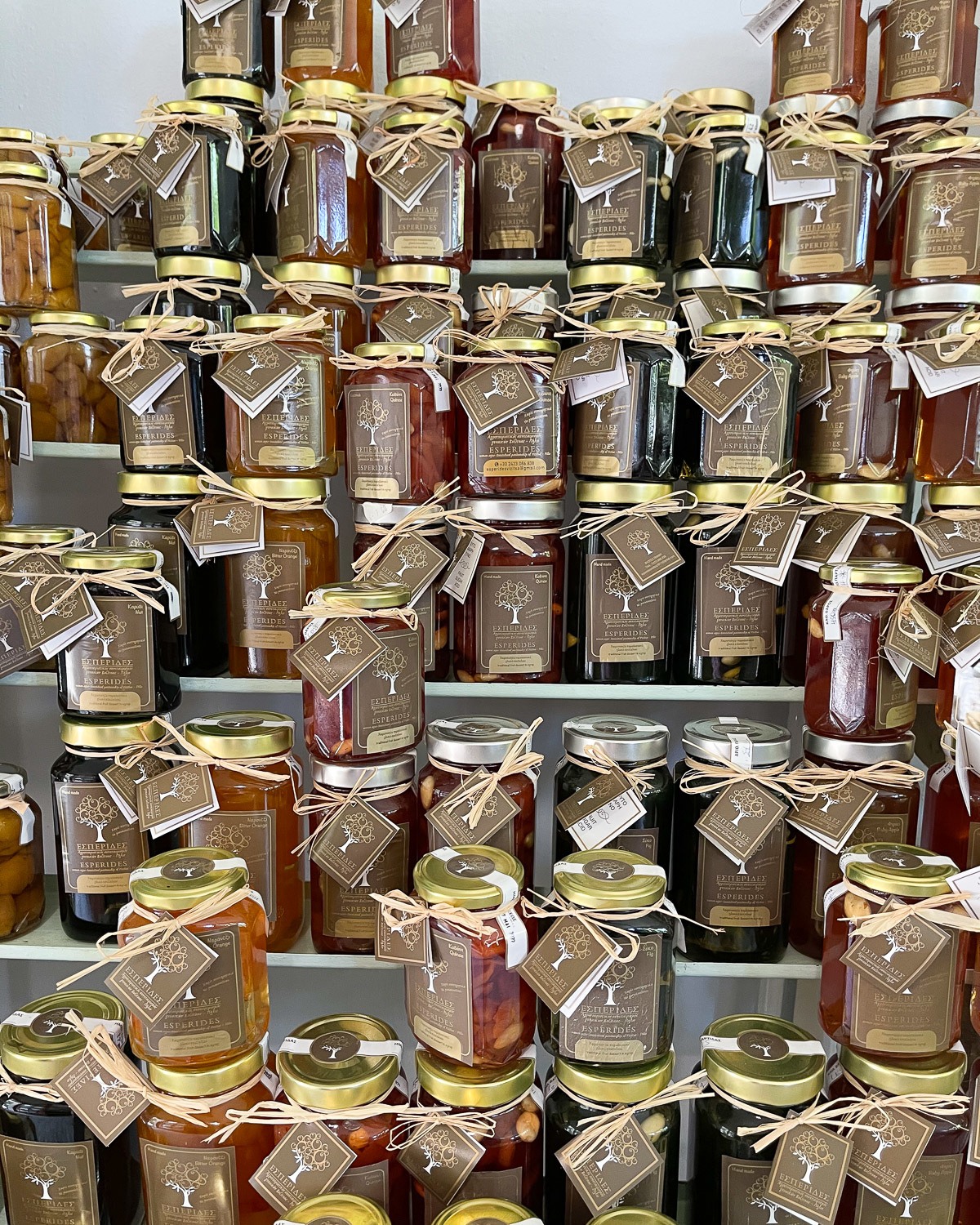
Vyzitsa – This village is well worth a stop for the Women’s cooperative that’s right by the main road. Pop in to have a chat with the local ladies who make preserves with the abundant local fruit that grows around the village and buy some of their jars of ‘sweet spoon’ as an edible souvenir.
Milies – The village where the Little Train of Pelion stops, but you can visit it by car or by walking along the train track as we did. There are two tavernas in the shady square and another below the village at the train station, as well as church that’s known for its frescoes, a couple of souvenir shops and a small museum.
Argalasti – This is the main town in the south of the Pelion peninsula, and although it is a much larger place, there was a pleasant open square lined with tavernas, where we saw stalls setting up at the weekend selling local sweets and preserves.

Villages to visit from the Aegean coast
Mouresi – We visited this village while staying at Agios Ioannis on the Aegean coast and found the pretty square decked in flags following a local festival day. The owner of the taverna was preparing preserved fruit and drying lime flowers for tea, and we had some tasty traditional Greek food for lunch here.
Tsagarada – Close to Mouresi is Tsagarada, with a small cafe and pretty church in the square. Most people stop there to see the oldest plane tree in the Pelion, which is reputed to be over a thousand years old – it’s huge!

6. The mountain churches of Pelion
When visiting the mountain villages of the Pelion, be sure to take a look inside the local churches if they are open. Many are very old, adorned with gold decoration, frescoes and religious icons. It’s respectful to make a small donation and light a candle, and be cautious when taking photos as generally it’s frowned upon in Greek churches, but some that are more used to receiving tourists may allow it. We made a visit to one of the best known churches of Agia Marina at Kissos, which was built in the 17th century and is known for the outstanding frescoes by the painter Ioannis Pagonis.

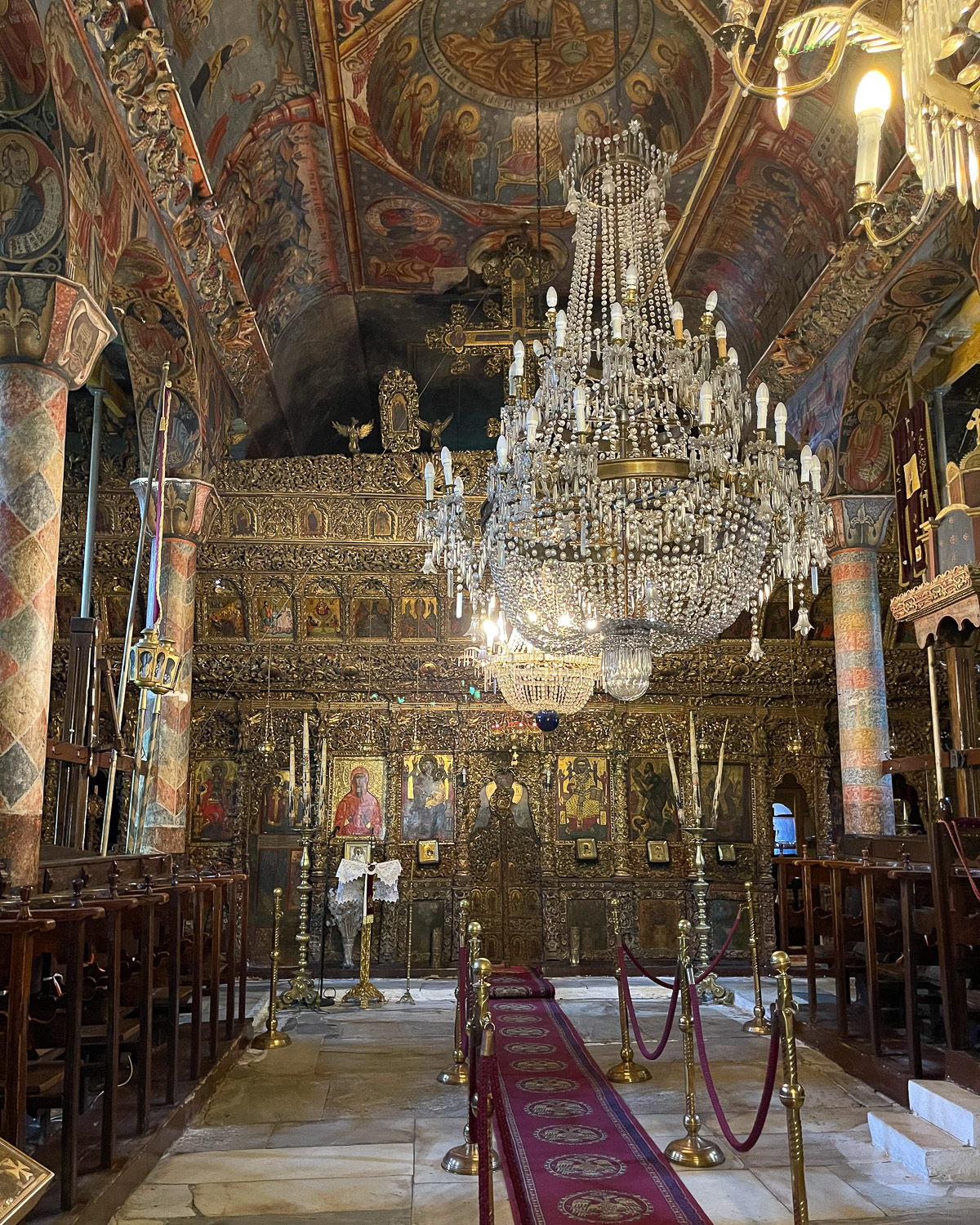
The 17th century church of Agioi Taxiarches in Milies, which you may visit on the Little Train of Pelion, is also well known for its lovely frescoes. In Makrinitsa, take a look at the old church in the central square if it’s open and you can also visit the Byzantine museum of Makrinitsa, which houses many beautiful icons and art from churches around the Pelion region.
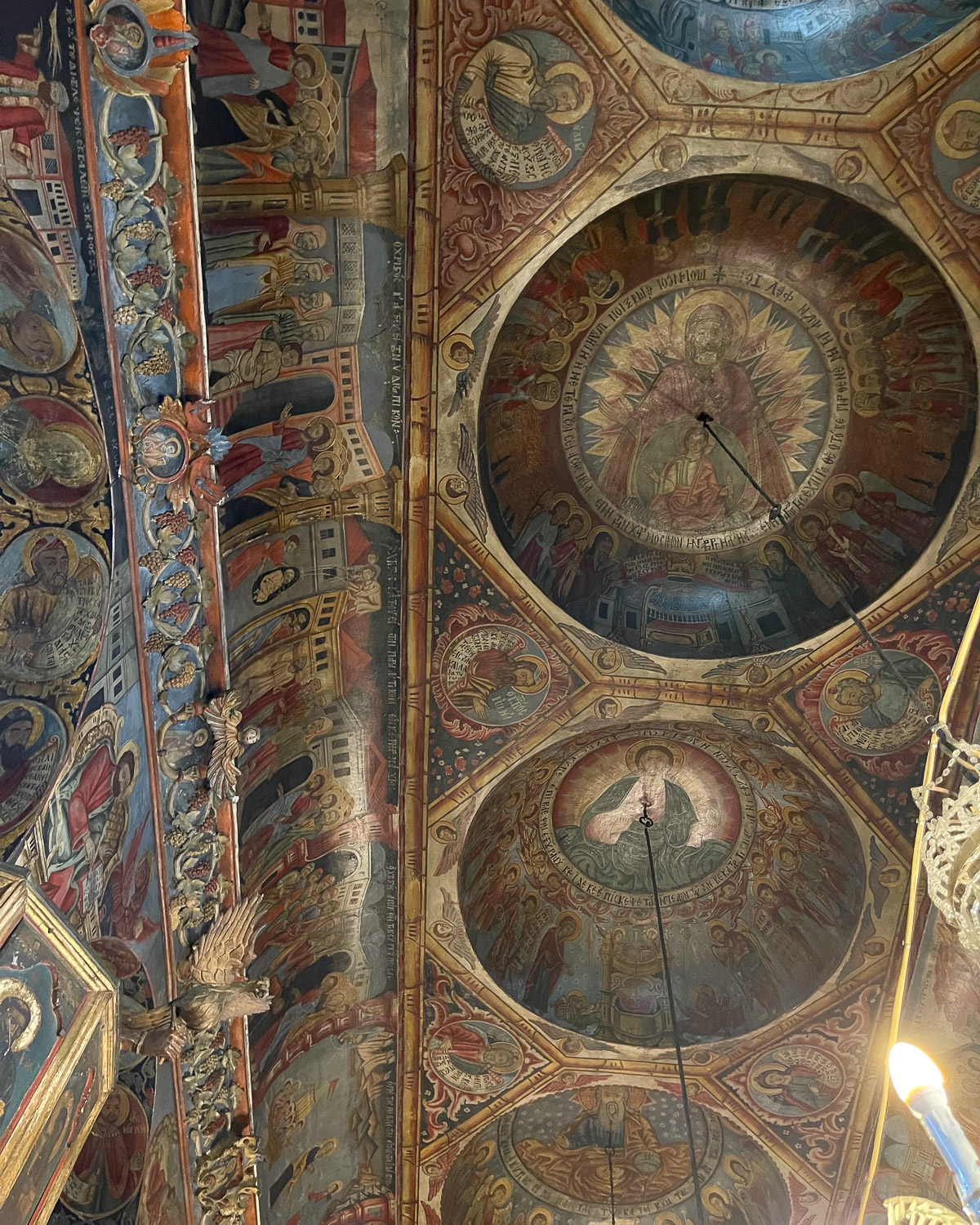
7. Hiking in the Pelion – along cobbled paths
If you are looking for hiking trails, there are plenty in the Pelion, and the region is especially popular in autumn for walking, when the leaves of the forest are turning golden and woodsmoke lingers in the air. Around the villages are cobbled paths known as kalderimis, that in the past were the main ways to get from village to village by walking or donkey. Some of these paths run between major villages and these are ideal if you’d like to go hiking for a couple of hours or more.
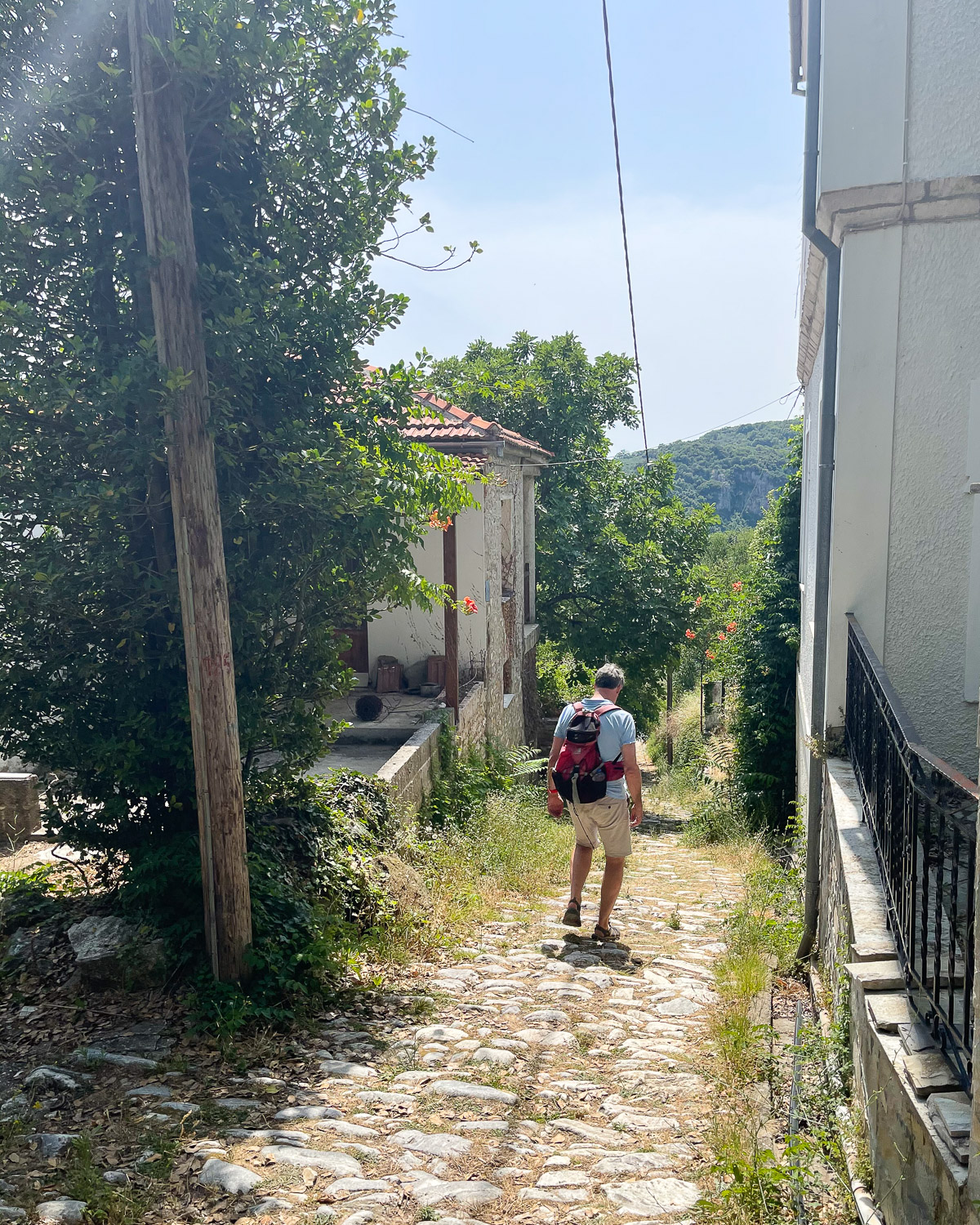
Kala Nera to Milies – I’ve already mentioned our hike up from Kala Nera to join the railway track of the Little Train of Pelion that runs all the way to Milies. If you time it right, you could hike up the trail and then catch the train back down or vice versa.
Tsagkarada to Damouchari – We saw the path running up the cliff side from Damouchari beach that takes you to the mountain village of Tsagkarada, known for its thousand year old plane tree. It would be fun to walk down from Tsagkarada to Damouchari, take a dip in the crystal water and have lunch in the beach cafe, before making the climb up the hill again.
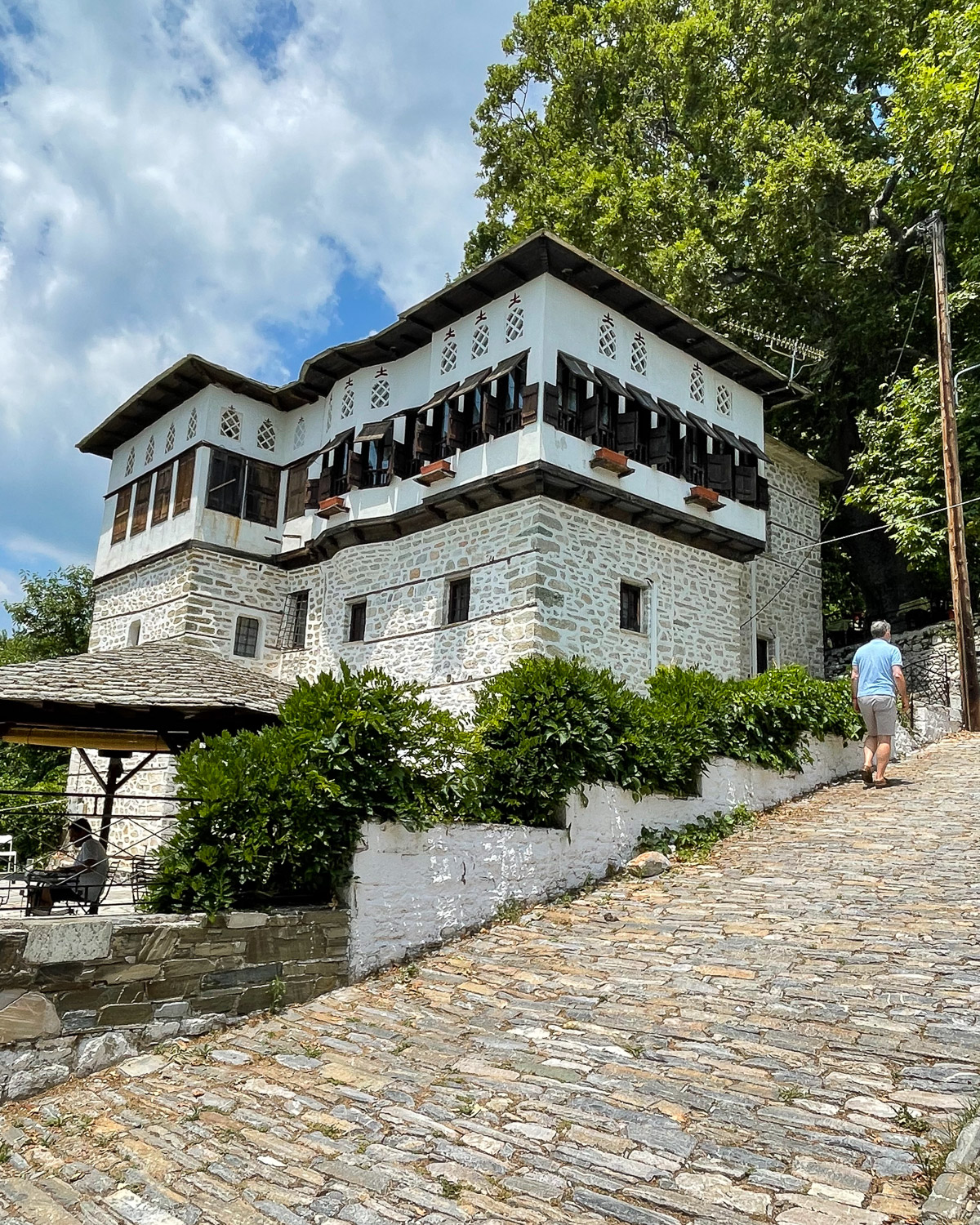
Zagora to Chorefto – This is similar in that it starts in the large mountain village of Zagora, which is famous for its apples and takes you down to its sea port of Chorefto. In the past every mountain village was connected to a sea port, since there were often ravines to either side that made moving along the coast more difficult.
There are many other walks and long distance trails that meander through forests and mountain villages. The best time of year for hiking is the spring and autumn, when the weather has cooled a little, as July and August are generally too hot, even in the mountains.
8. Enjoy the food specialties of Pelion
The varied climate of Pelion, from coastal to villages at higher altitudes of 550m, means that a wide range of produce can be grown. The area is especially known for growing fruit such as apples, apricots, and peaches, with figs and watermelon in summer. Autumn is the season for mushrooms, chestnut and plums, when wild boar is made into slow cooked mountain stews.
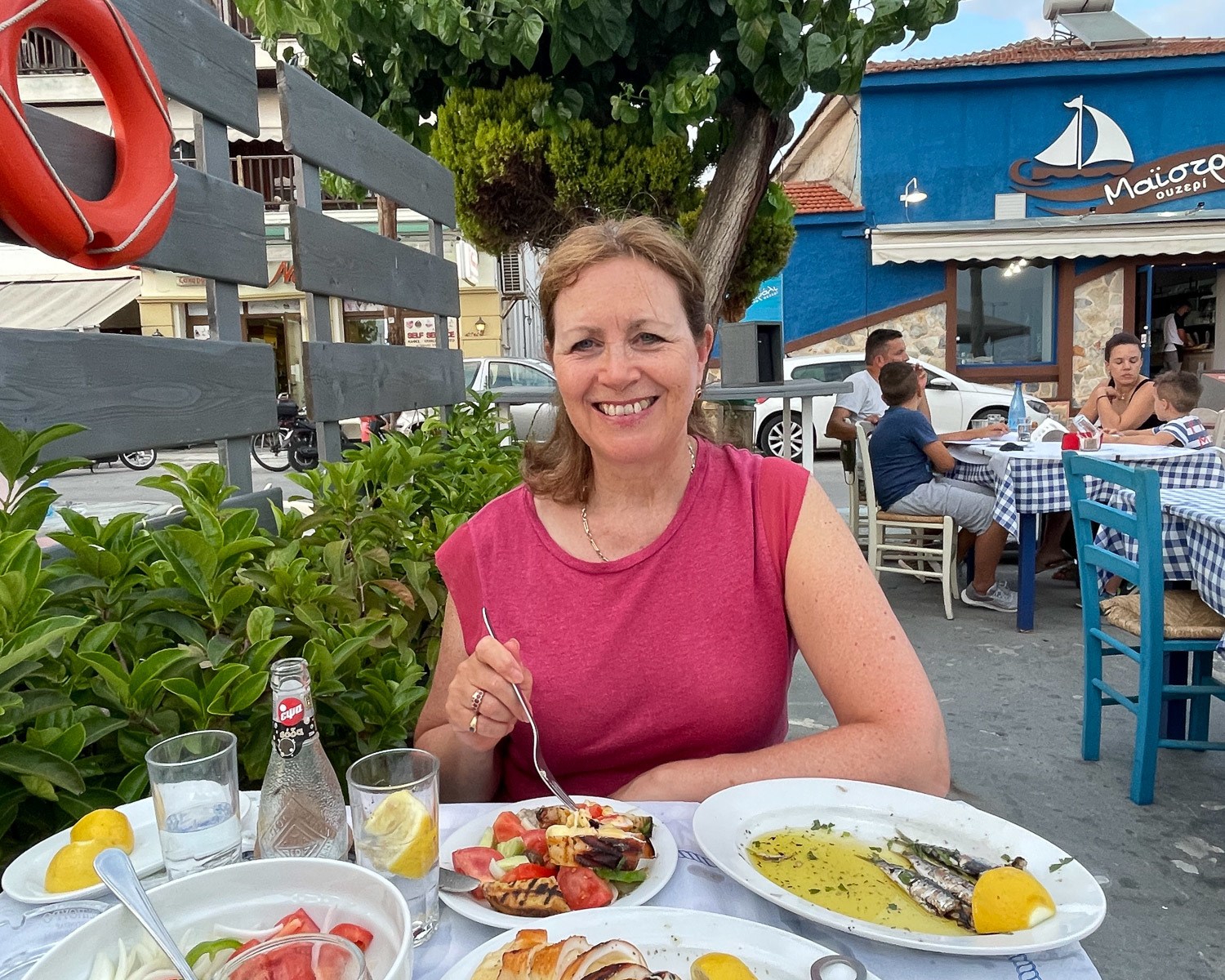
Traditionally the summer fruits are preserved in sugar syrup, and served as a ‘sweet spoon’ that’s offered to guests – you’ll see these on sale in many mountain villages. Other delicacies such as the rock samphire are pickled and made into a salad with tomatoes that we tried at the Kritsa gastronomy hotel in Portaria.
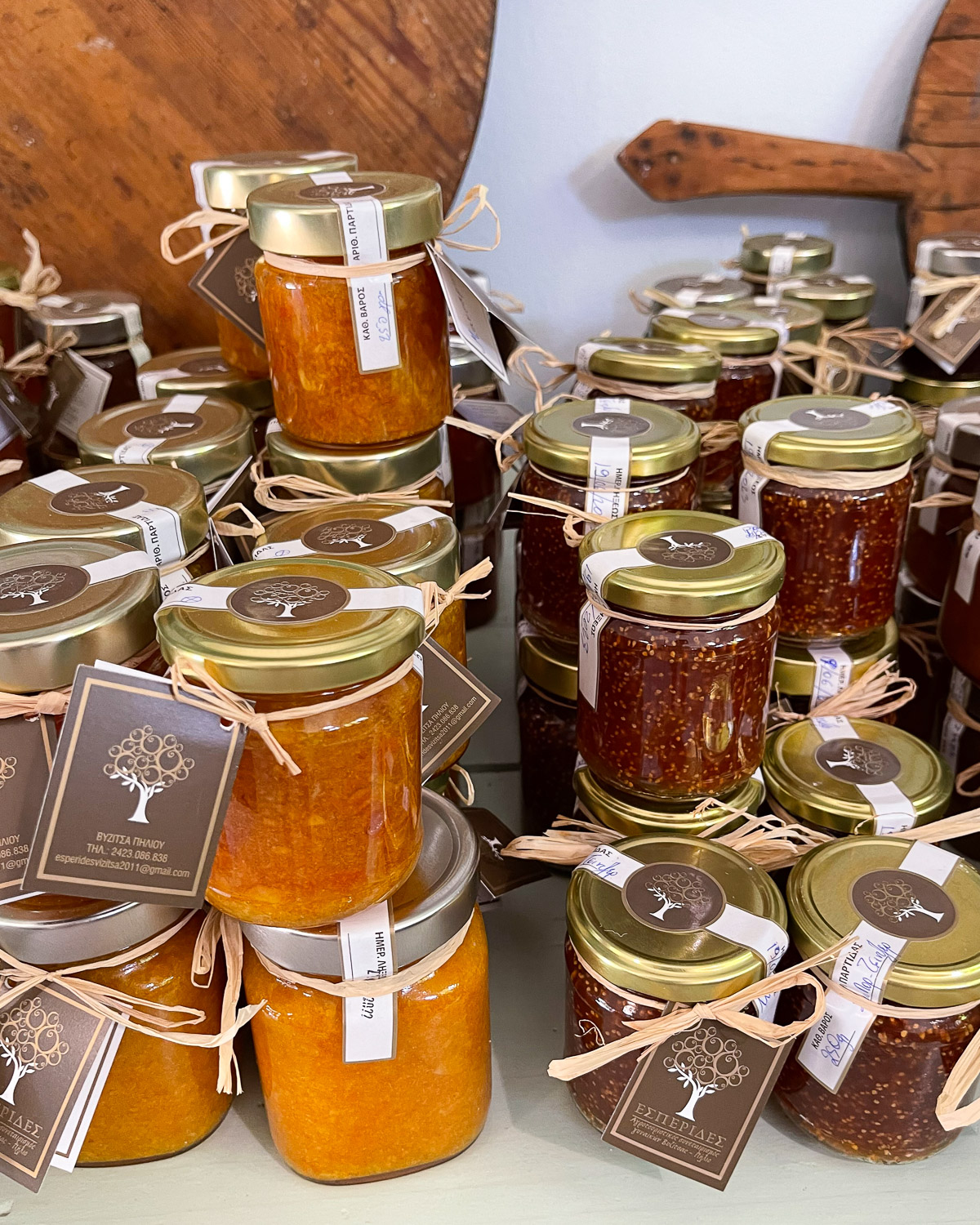
On the coast, you’ll find more typically Greek cuisine, with plentiful seafood, fish, octopus and sardines that are simply grilled or fried and preferably eaten with a view of the sea! A speciality of Volos, but found in other parts of the region is Tsipouro, the anise flavoured spirit that is served in small bottles and always offered with plates of snacks, so that you get a free meal along with the drinks.
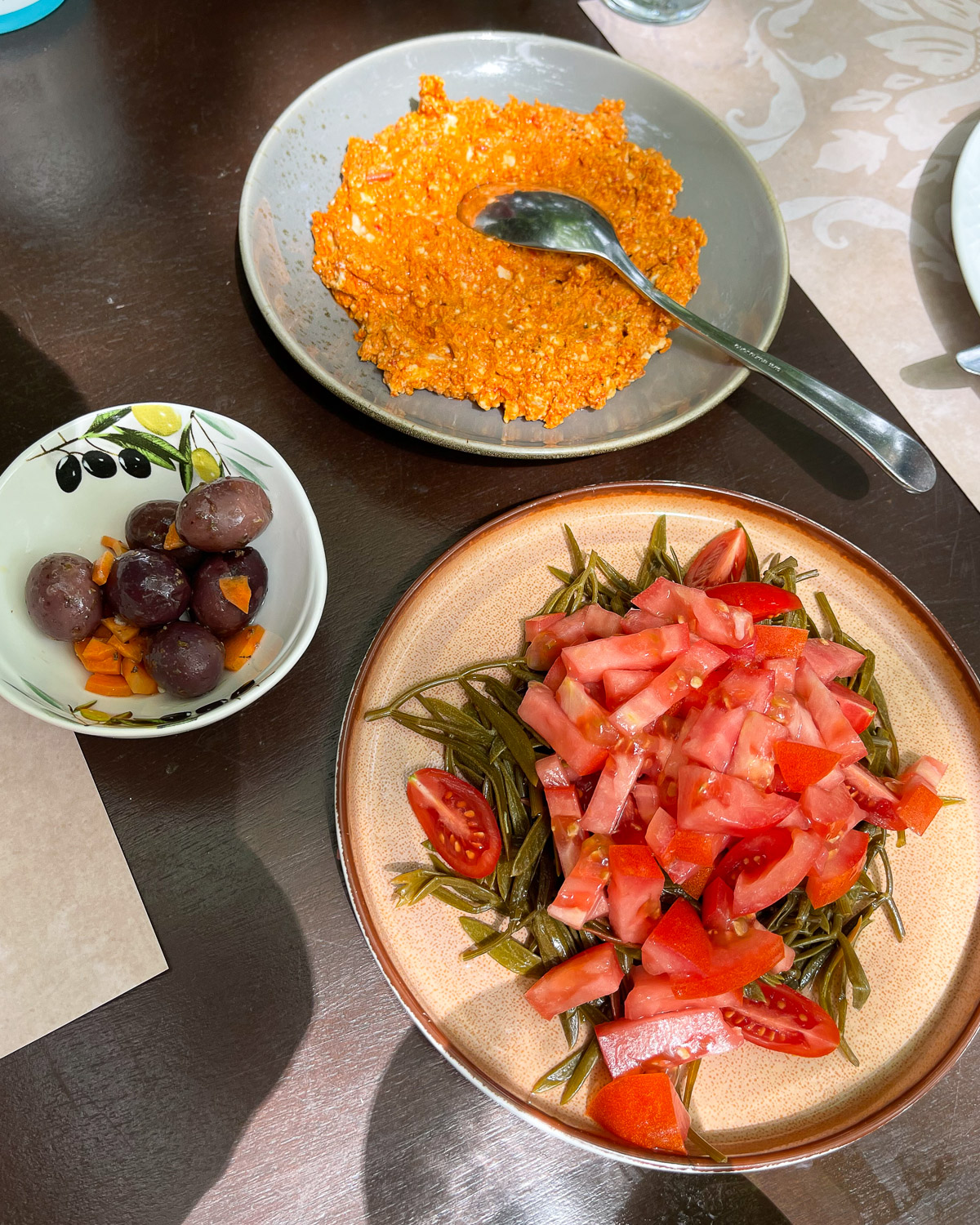
9. The seaside villages of the Pagasetic Gulf in Pelion
The Pelion peninsula makes an arm that curves around one side of the Pagasetic Gulf, with views towards the port city of Volos. This protected bay offers calm waters for swimming and some narrow sandy beaches. I generally think the beaches on the Aegean shores are wider and more charming. But still there are lots of pleasant seaside towns facing the Pagasetic Gulf, where cafes line the seafront and Greek holidaymakers flock in summer.
Agria – enjoy dinner and sunset views of Volos
The pretty seaside town of Agria is around 20 minutes drive from Volos, making it a popular choice for locals looking to escape the city at weekends. A picturesque harbour is lined with fishing boats and traditional tavernas and we stayed there for a few nights after visiting Volos to explore more of the Pelion.
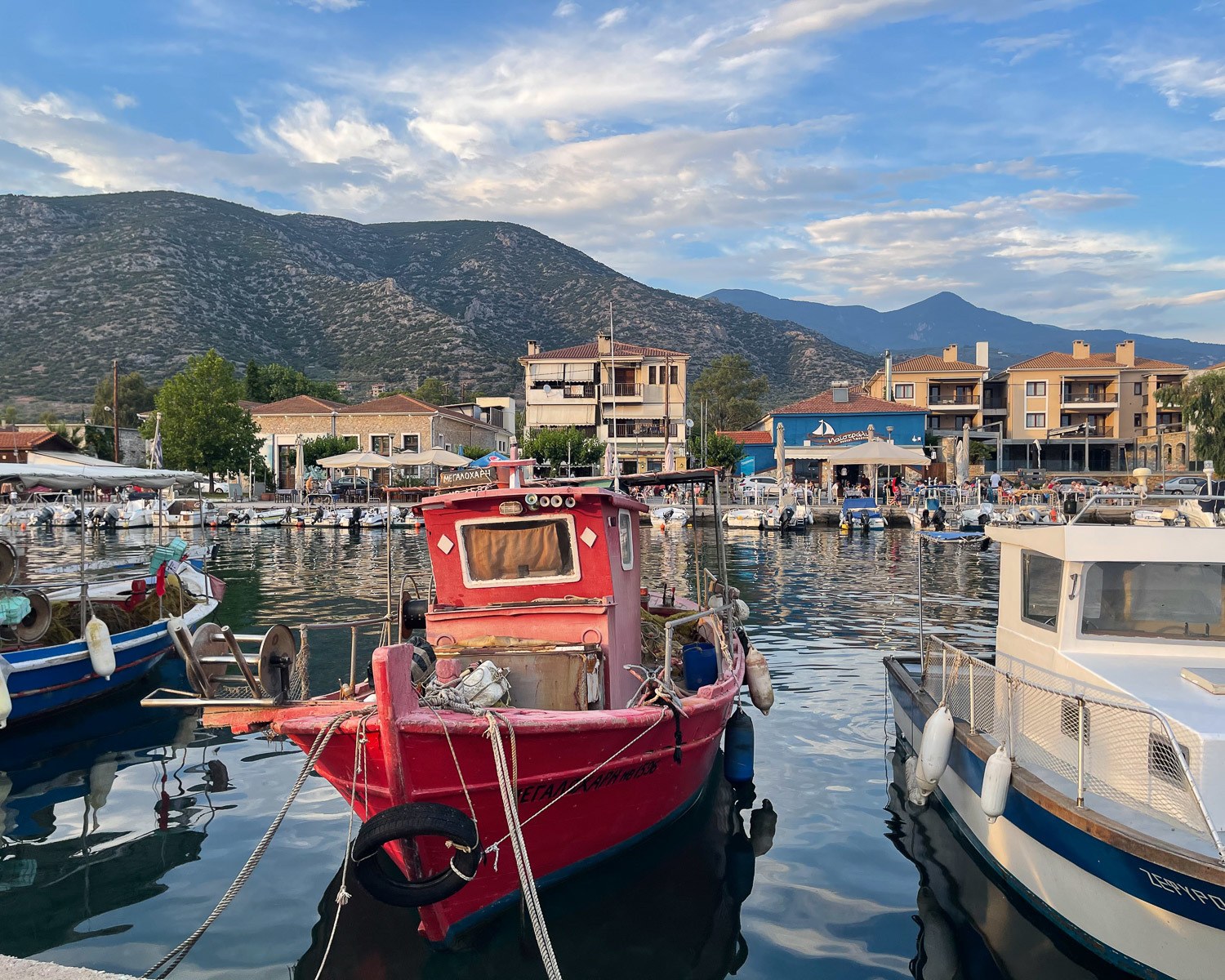
Many people drive out in the evening from Volos, to have dinner at one of the many of the restaurants lining the seafront and watch the sun setting over the city. There are numerous places to choose from but we had some delicious seafood at the Mastrali fish restaurant followed by an ice cream at the excellent Boukis ice cream shop next door.
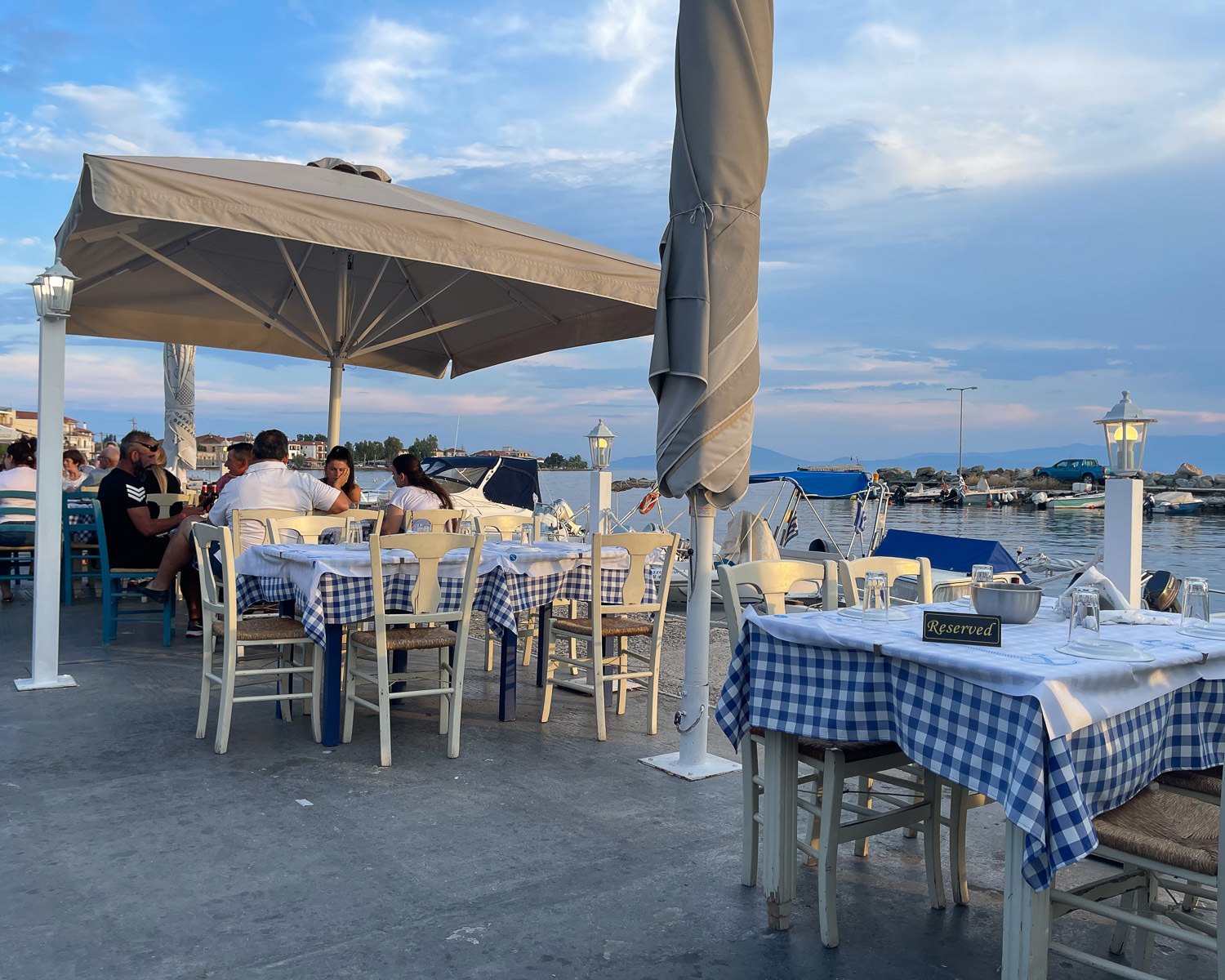
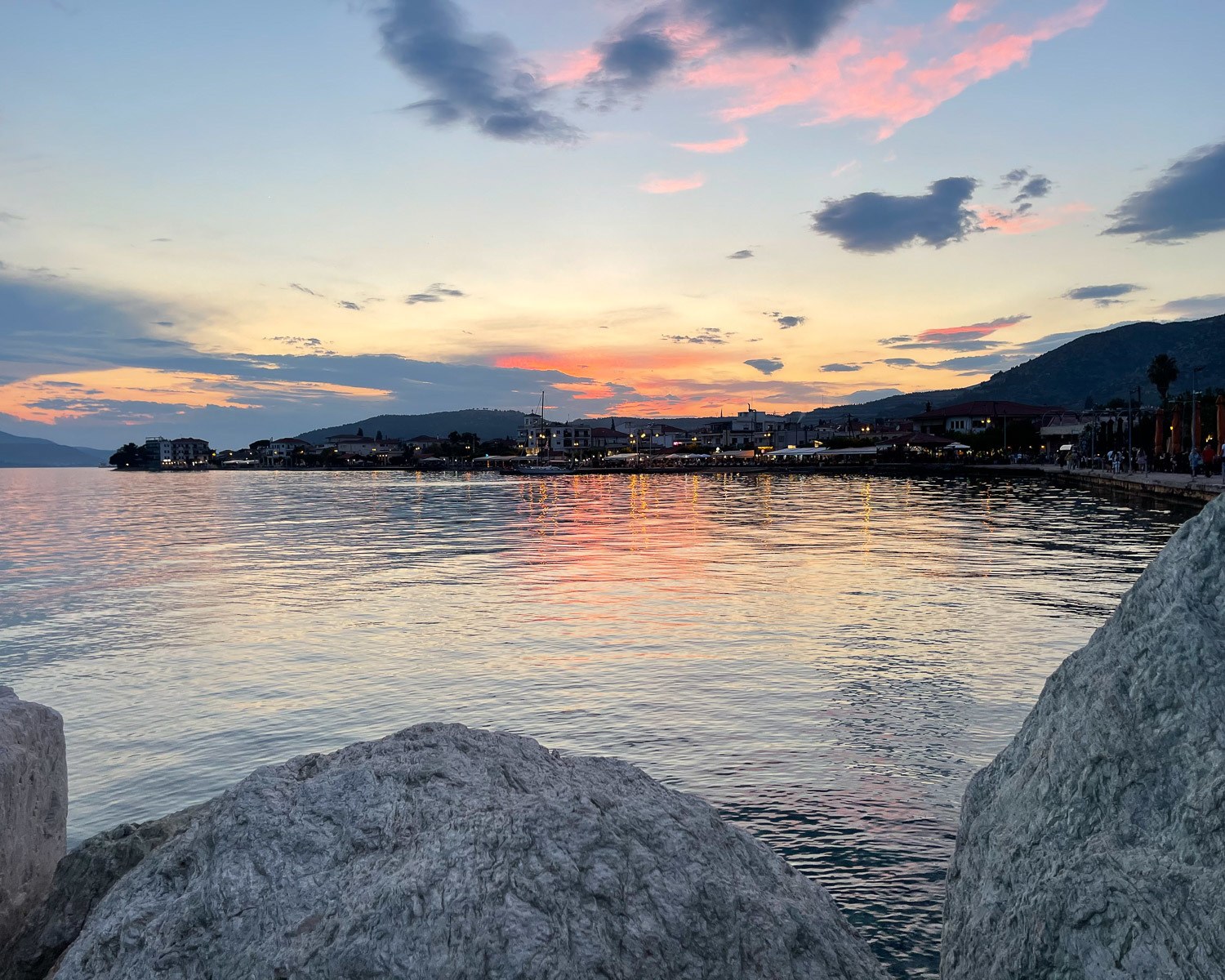
Afissos – a pretty seaside town
Further along the coast is the holiday town of Afissos, which is a great place to base yourself on the Pagasetic coast of the Pelion. From here you can easily explore much of the peninsula, drive up into the mountain villages and soak up the holiday charm of the seaside. Most of the development and accommodation is in traditional houses that are set up on the hillside, connected by narrow lanes and steps down to the seafront.
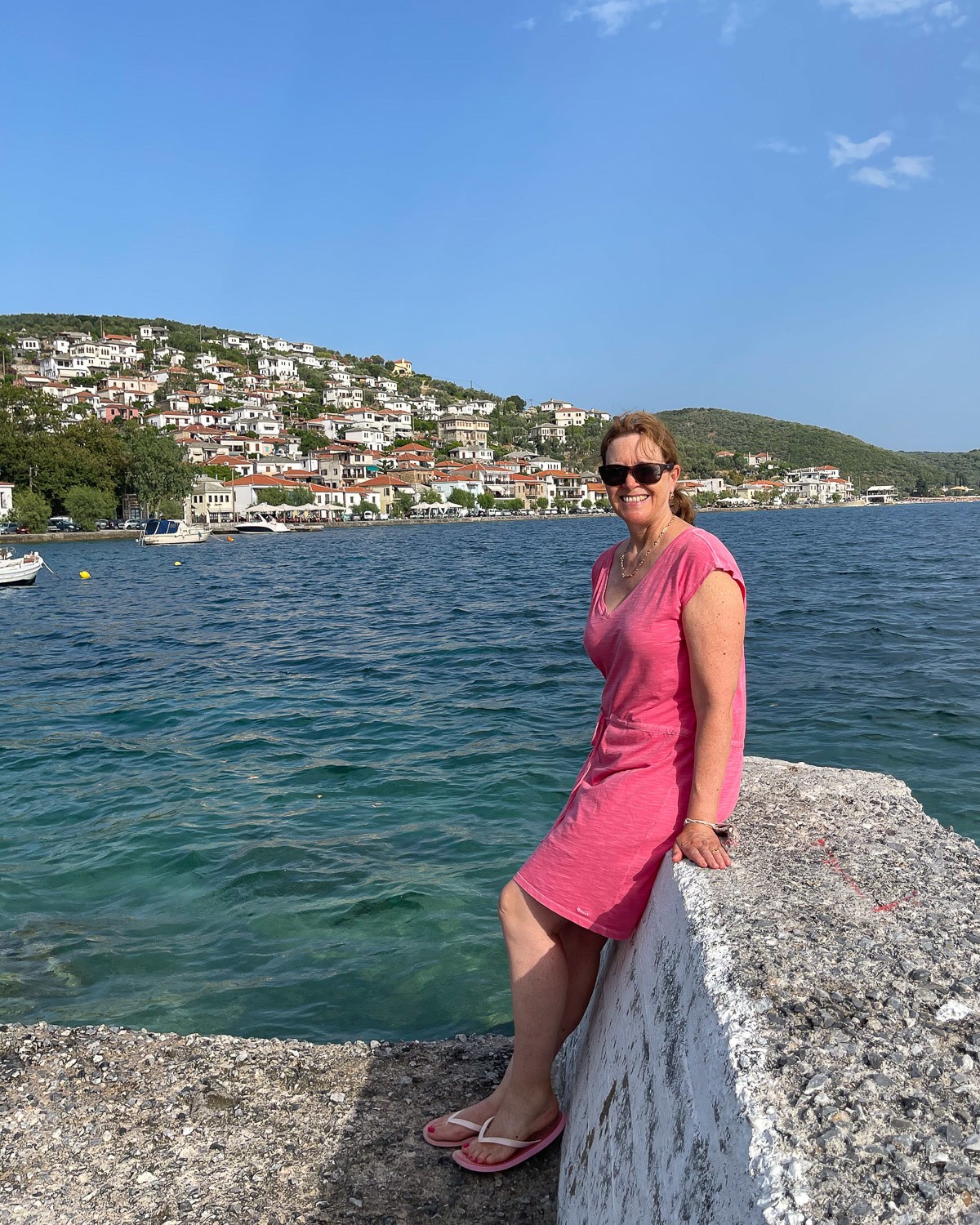
There’s a small square with taverna, several village shops and numerous restaurants along the seafront. In addition to this there are two sandy beaches at each end of the village, both with car parking, making this a popular weekend spot for locals from Volos.
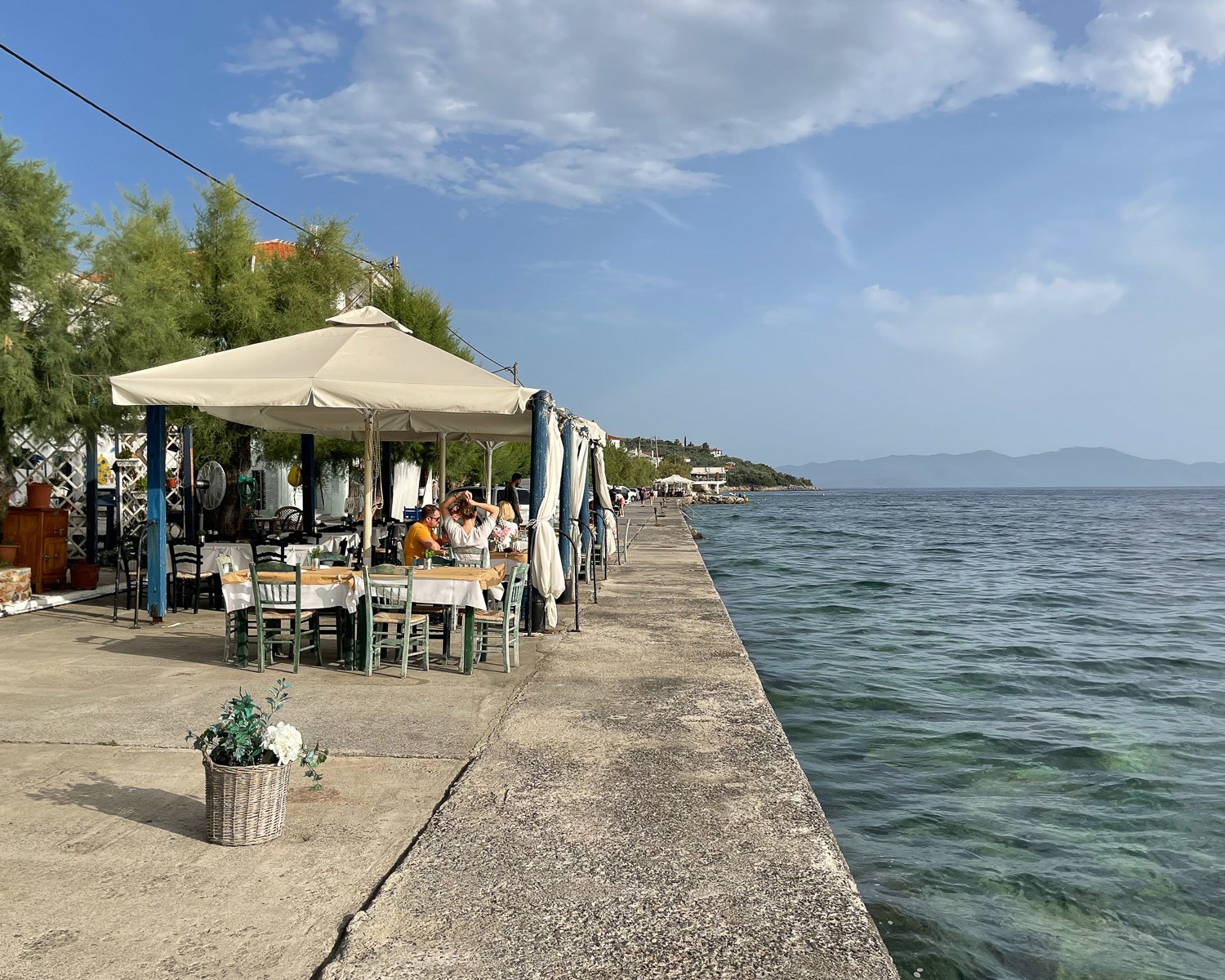
We booked this charming sea view guest house in Afissos and stayed for a few days, although be aware that access to much of the accommodation is via narrow lanes, so check there is parking available when you book.
More villages on the Pagasetic Coast of Pelion
As you drive along the coast road that skirts the western side of the Pelion, overlooking the Pagasetic Gulf, there are many more pretty villages that are worth a stop. Kala Nera is a very popular holiday spot and when we visited at the weekend, it was packed with Greek families enjoying a long lunch on the seafront.
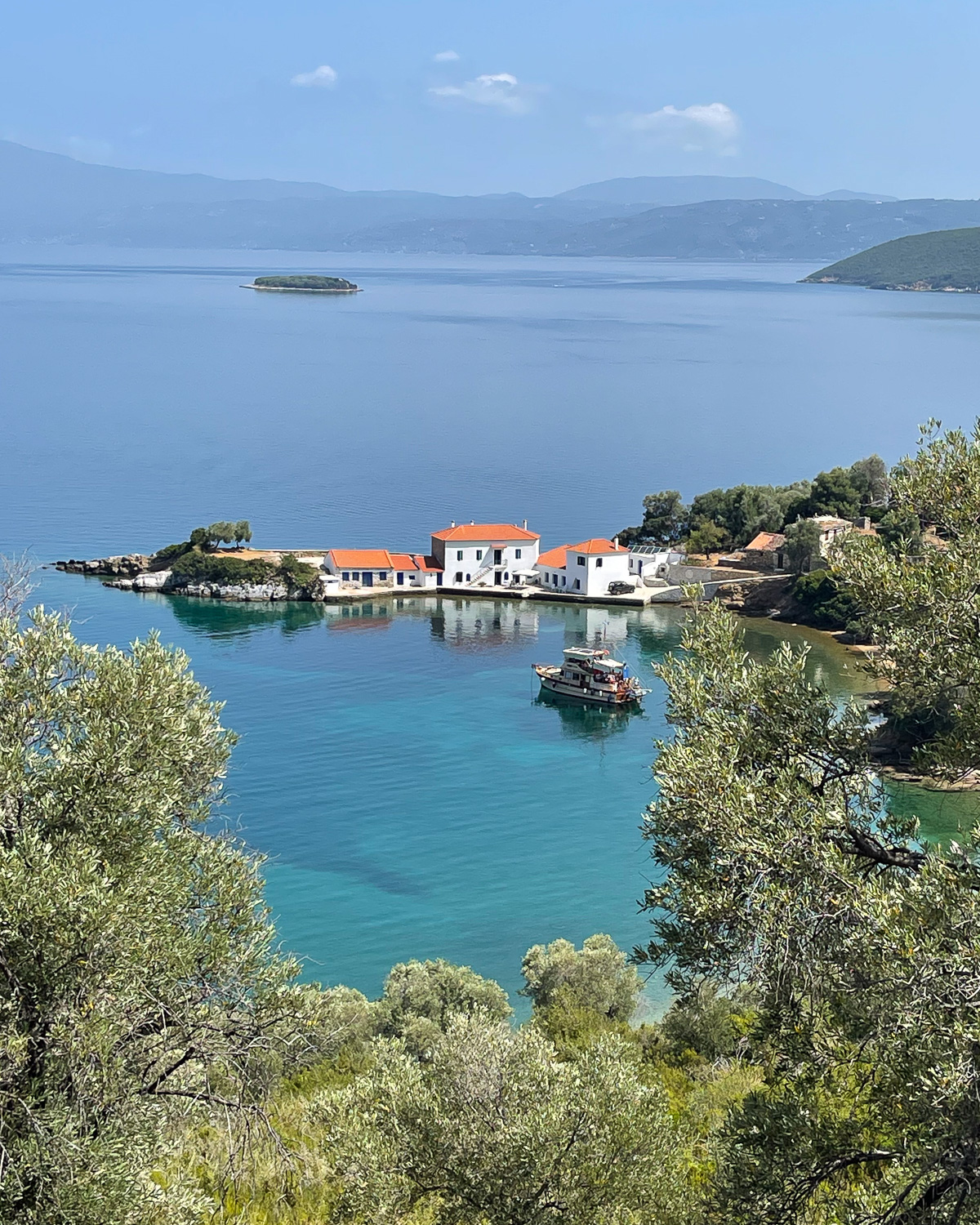
Chorto and Milina are other small coastal towns that you may visit as you head south along the peninsula. Past Milina, the coast curves around and forms a protected bay which is sheltered by an island, forming a safe natural harbour where yachts bob at anchor. Also worth a stop is the small cove at Tzastini, which is one of the most photographed beauty spots of the Pelion, and often visited by boat trips.
10. Pelion beaches on the Aegean coast
In order to enjoy the different landscapes of the Pelion, it makes sense to spend a few days in different places and on the Aegean coast we based ourselves at Agios Ioannis. From what we could see, the best Pelion beaches are to be found on the Aegean coast, where there are wide stretches of sand bounded by rocky coves and clear water for swimming.
Agios Ioannis – a pretty beach resort
Agios Ioannis is one of the most popular resorts on the Pelion’s Aegean coast and with good reason. The main resort is strung along a seafront promenade, with a beach that is sandy and stony in places, and a small port at one end where you can take a boat trip. This is where most of the beachside restaurants, food and souvenir shops and other amenities were to be found.
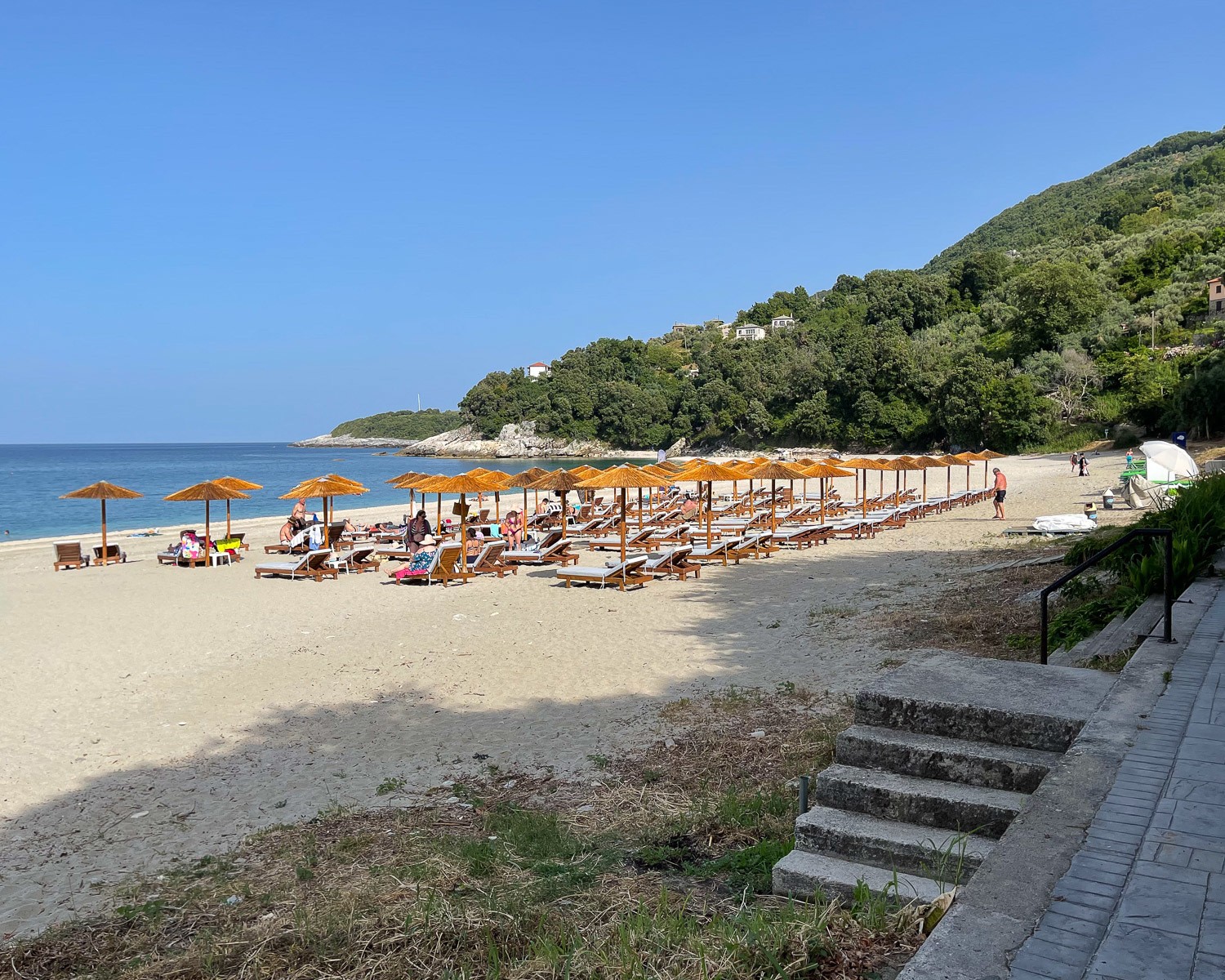
Crossing a river by the footbridge brings you to the adjoining Papa Nero Beach, which is a broad sandy stretch lined with holiday homes, guest houses and a couple of cafes. There’s a campsite at one end and it’s generally quieter on this beach, where we stayed in the delightful Ammos Papanero guest house.
From the end of Papa Nero beach, it’s possible to walk up a path and over the headland to Damouchari, a charming spot that was used as a location in the film Mamma Mia.
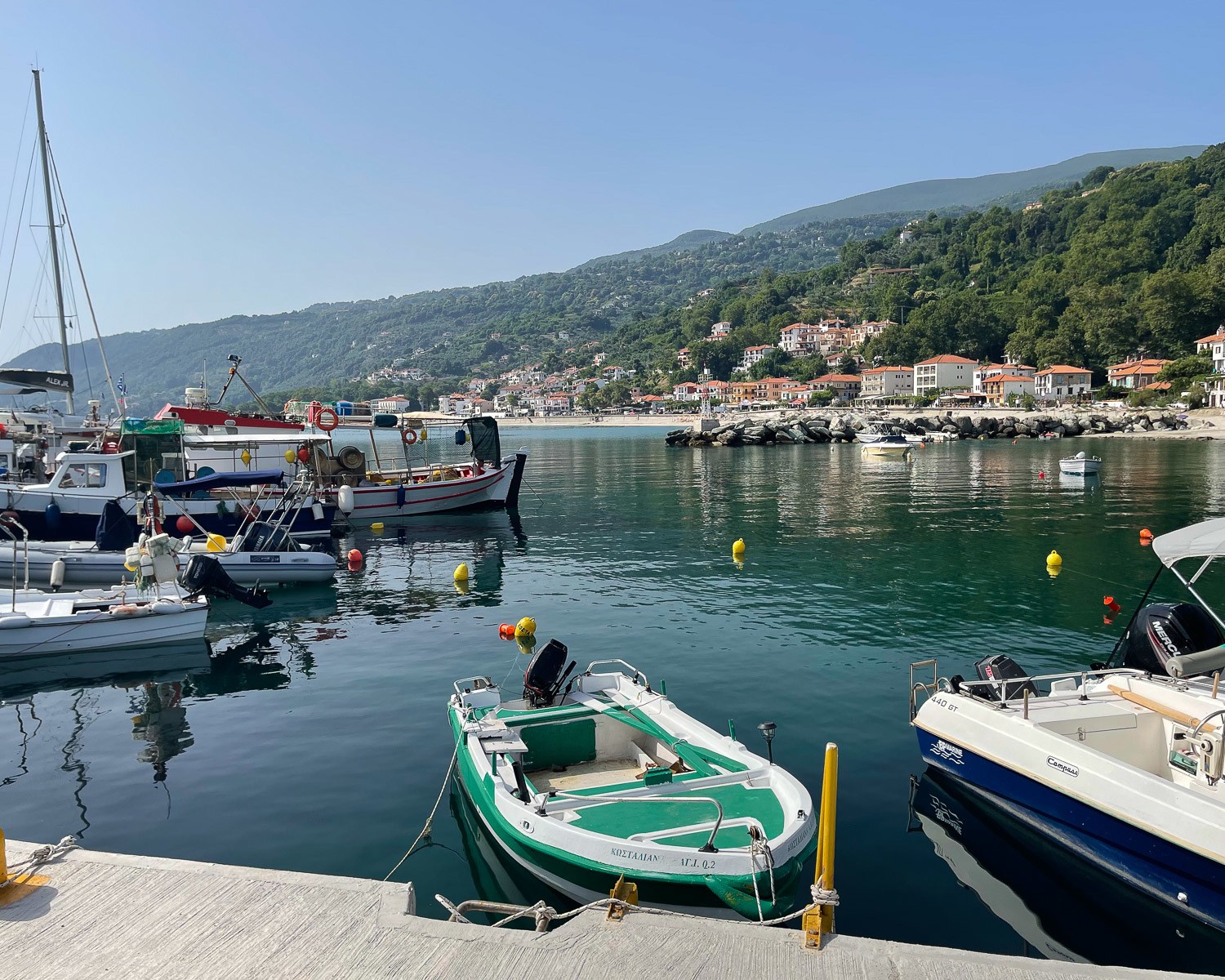
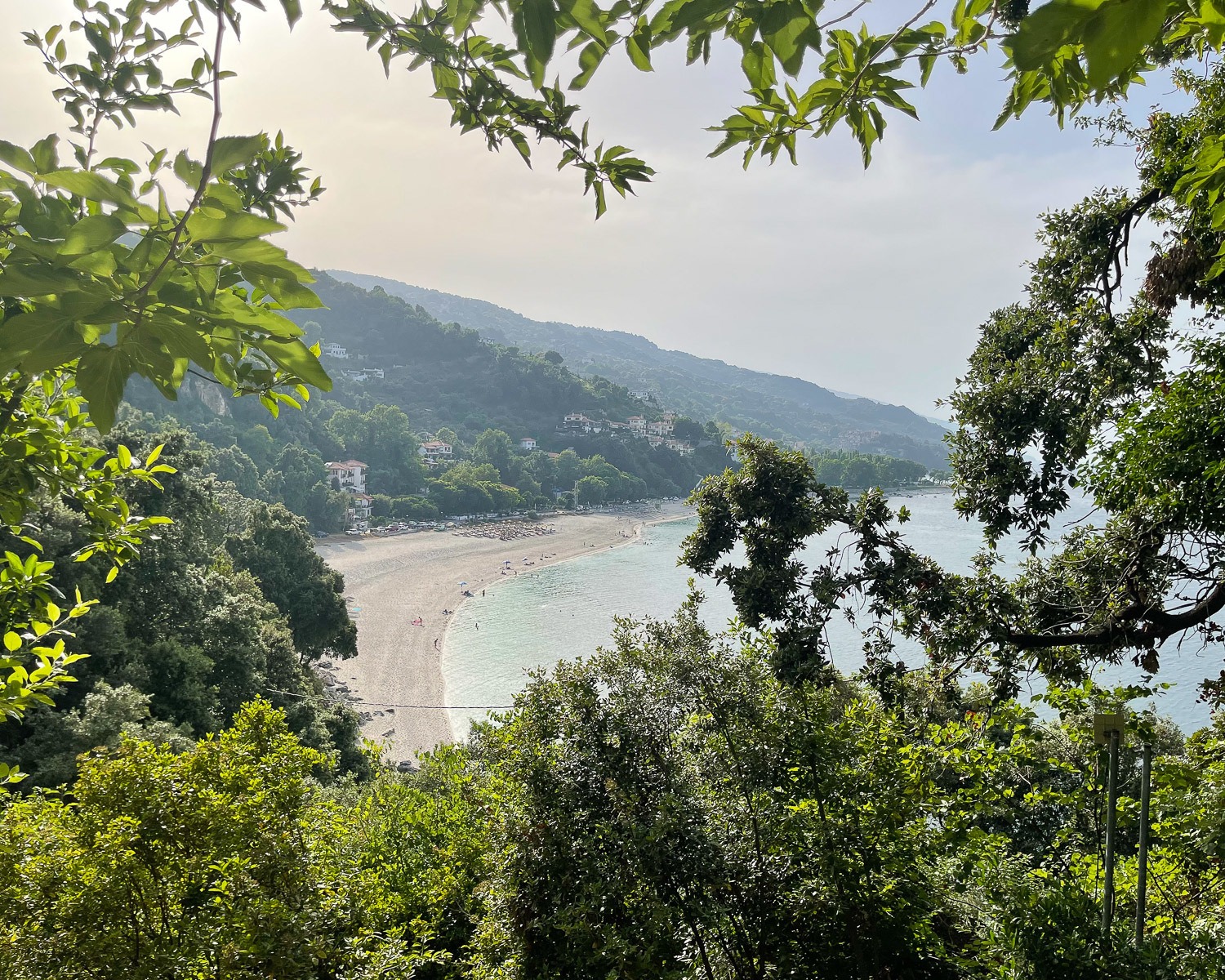
More beautiful beaches of the Pelion
Along the Aegean coast are numerous gorgeous beaches and this stretch of coast is typically more rocky than the Pagasetic coast. We enjoyed walking around the headland from Papa Nero beach to the clear, turquoise waters of Damouchari, which is known for its round, white stones. Along this eastern coast of Pelion are many more pretty beaches, such as Potistika which has a great restaurant and cafe Climax, where you can hang out if you find the sand too hot.

From Agios Ioannis it’s possible to take a boat trip which allows you to see many of the other beaches from the coast and stop for swimming at some of the less accessible, such as Limnionas beach. Another beach that’s considered one of the most beautiful in the Pelion is Fakistra, which is bounded by steep cliffs and requires a walk down a steep path to access it. There are many more gorgeous beaches along this coast, too many for us to visit, and all less crowded than those on the Pagasetic coast, since they are a bit less accessible.
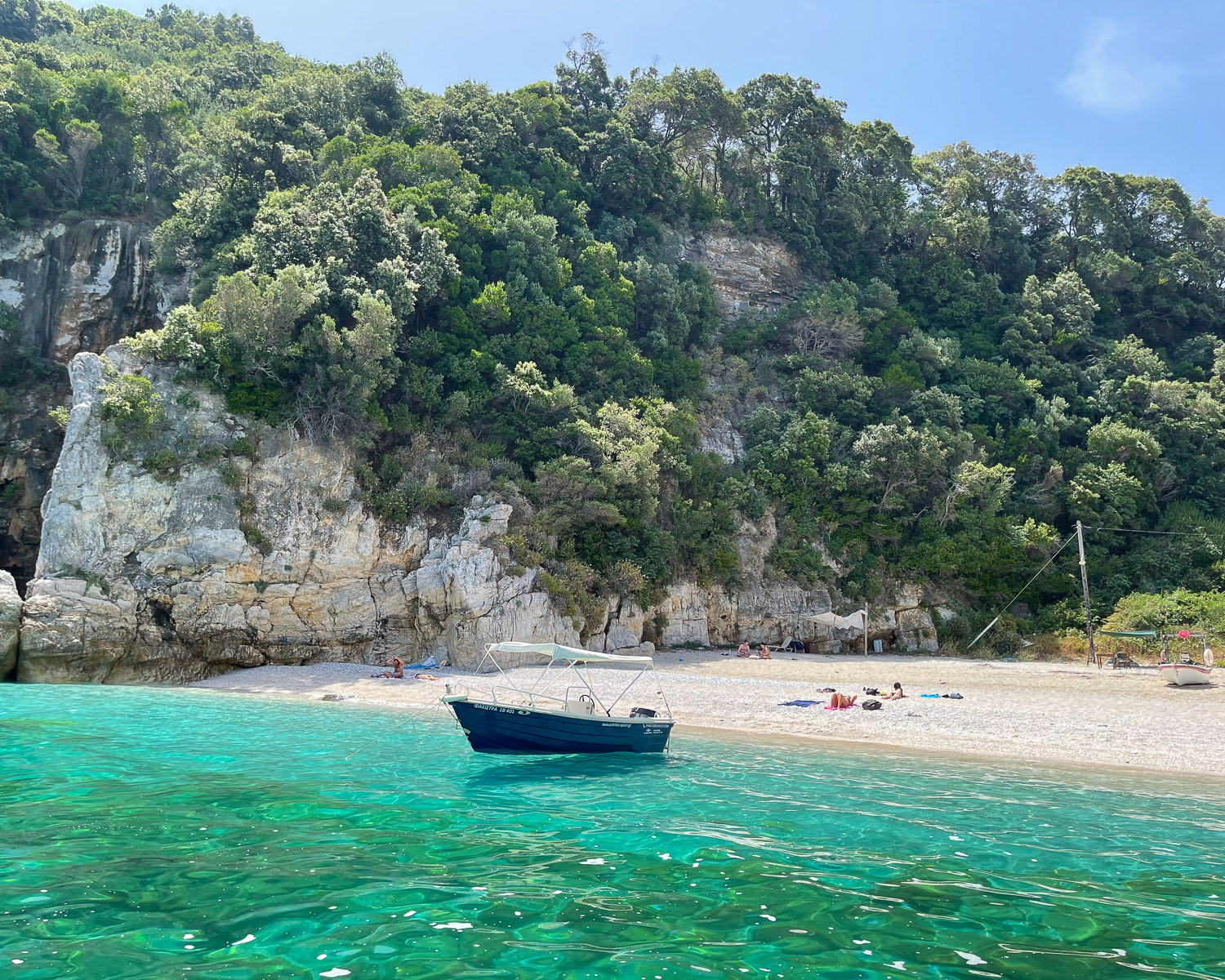
11. Take a boat trip along the Aegean coast of Pelion
One of the best ways to explore the long eastern coast line of the Pelion peninsula is on a boat trip or kayaking experience that will give you a different perspective on the secluded beaches and sea caves. We took a trip from Agios Ioannis that took us south along the coastline to pass by Damouchari harbour, used as a location for the Mamma Mia film. The boat passed other pretty beaches such as Fakirstra and Mylopotamos beaches that we viewed from the water, before stopping for a swim at the lovely Limnionas beach, which is best accessed from the sea.
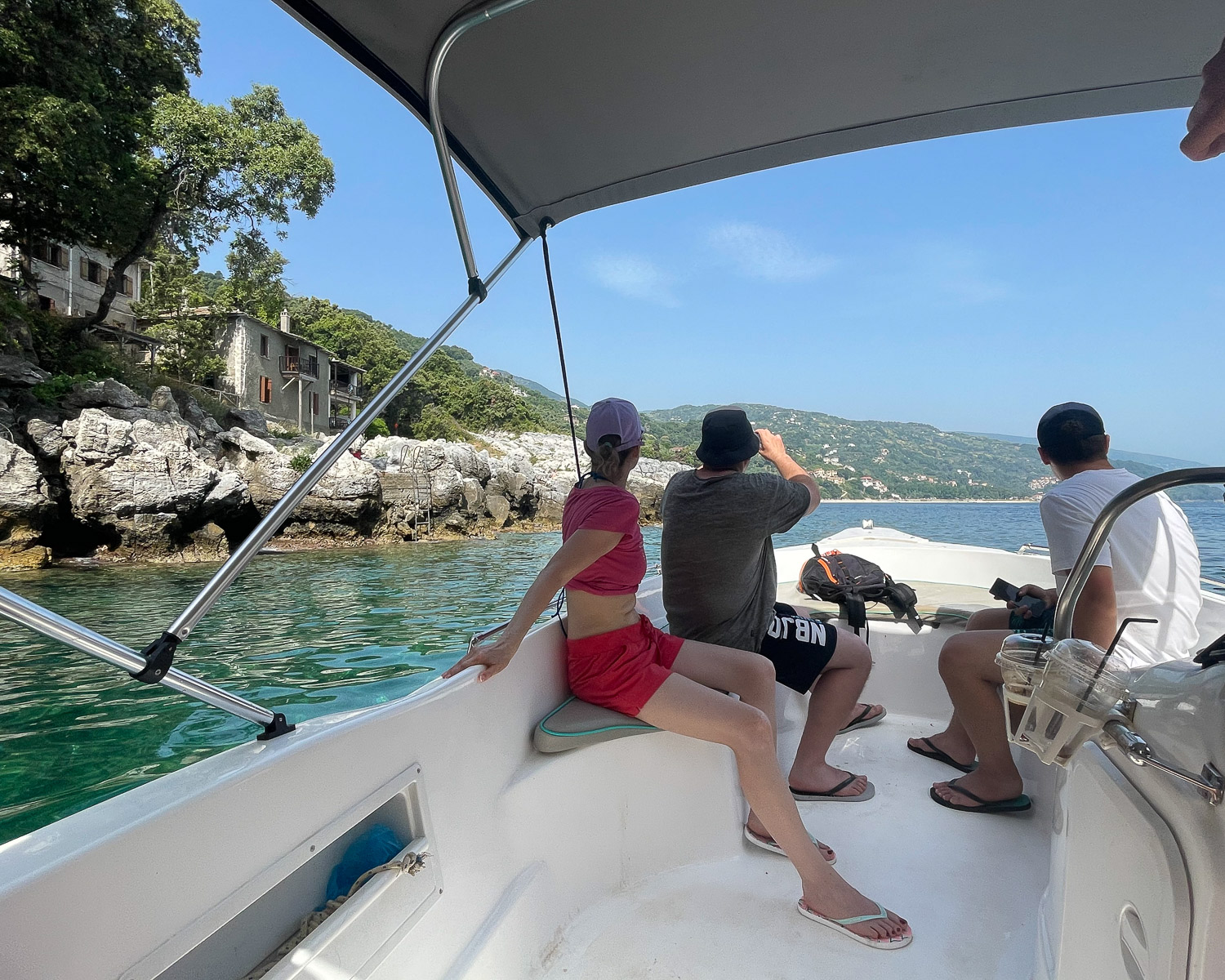
We also had a chance to swim in some of the sea caves where tiny bubbles tickle your body from the underground springs. We can highly recommend booking this Half day Mamma Mia boat trip which was one of the highlights of our visit to Pelion. A similar boat trip takes you northwards to see the famous Thesis sea caves – book a half day sea caves of Thesis boat trip. If you’d like to get active on the water, while exploring the gorgeous Aegean coastline of Pelion, then you might like to try a kayaking adventure – book this 2 hour guided sea kayaking short paddle which is family friendly or this 4 hour guided sea kayaking tour.
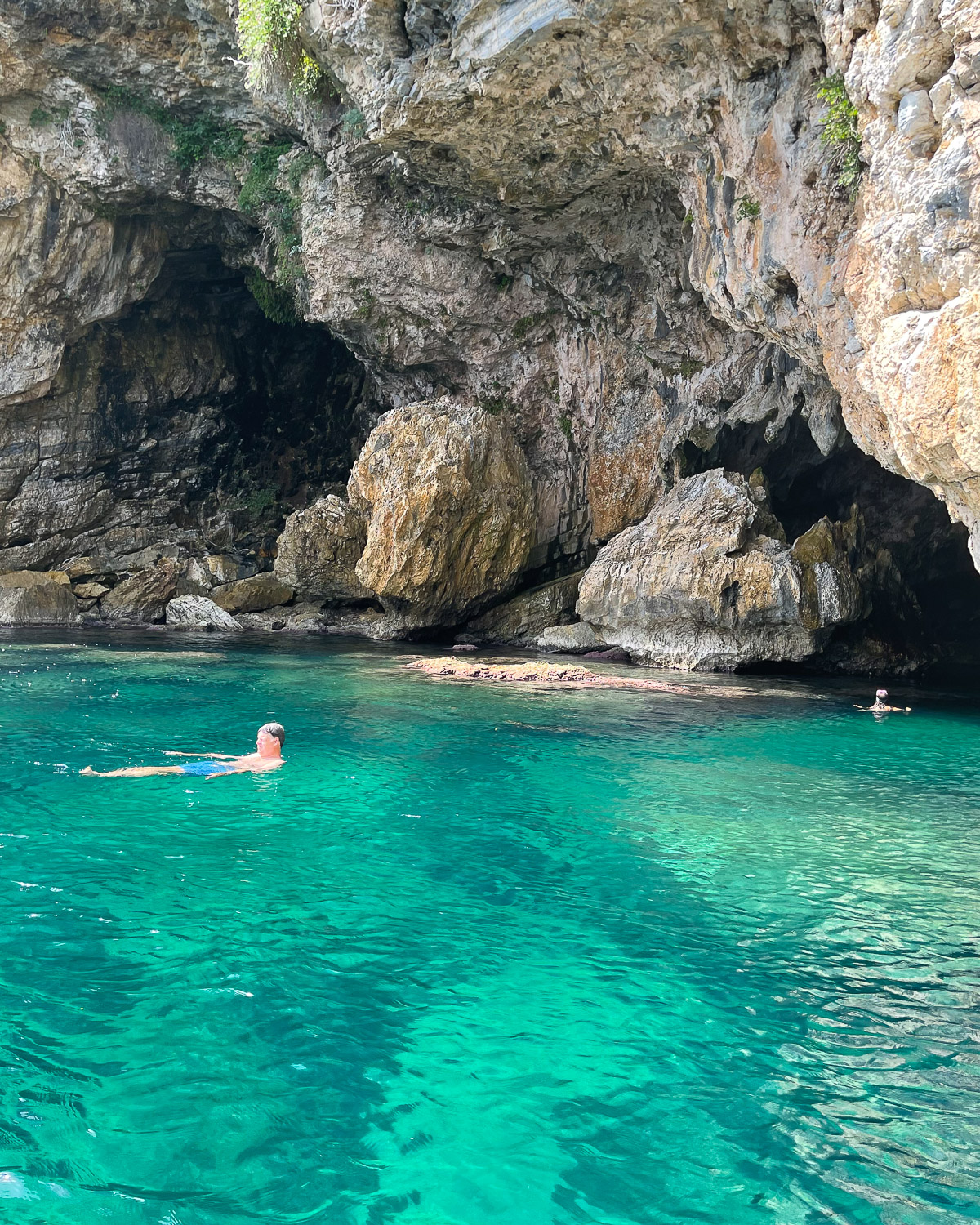
12. Mamma Mia film locations at Damouchari
While most of the scenes from the film Mamma Mia were filmed on the the Sporades islands of Skopelos and Skiathos, a few were filmed on the Pelion peninsula, at Damouchari. While staying at Agios Ioannis we walked around the headland to find the tiny fishing port and hamlet of Damouchari that features in a couple of the scenes. During the filming, the crew used a picturesque small guest house ‘Ghermaniko’ as their base on the harbour front – you can book it here if you’d like to stay there.
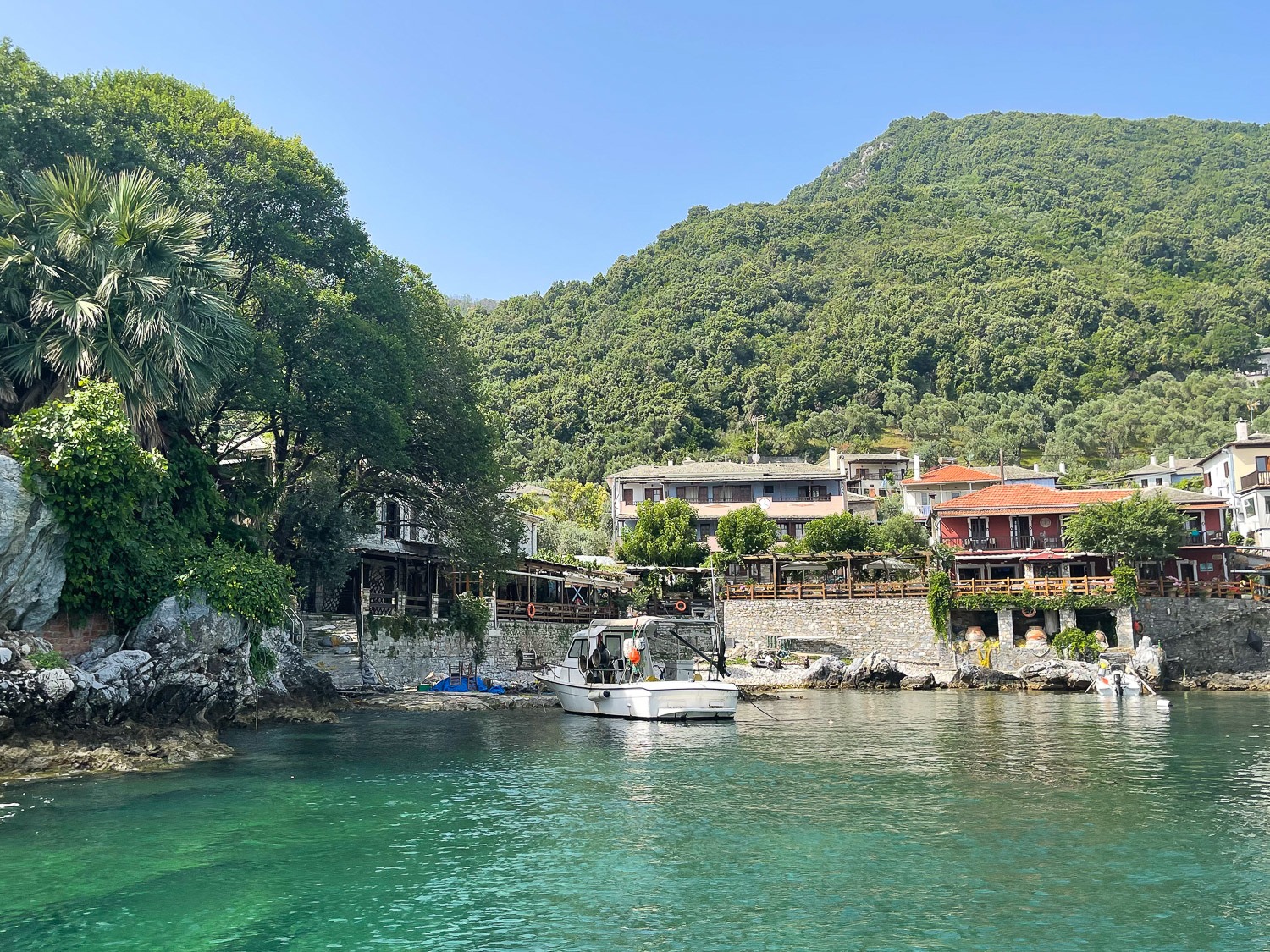
Damouchari Port
In the scene shot at Damouchari Port, Donna (played by Meryl Streep) arrives in her battered jeep down the dirt track to greet her two friends Rosie and Tanya who have just arrived on the ferry and together they relive their old Dynamo days. Later Donna and her friends are joined by ladies in the village, as they dance down from Villa Donna to the port. Finally they all jump off the jetty as they sing “Dancing Queen”, a sequence that used many local women as extras. You can read more in my article about all the Mamma Mia film locations in Greece
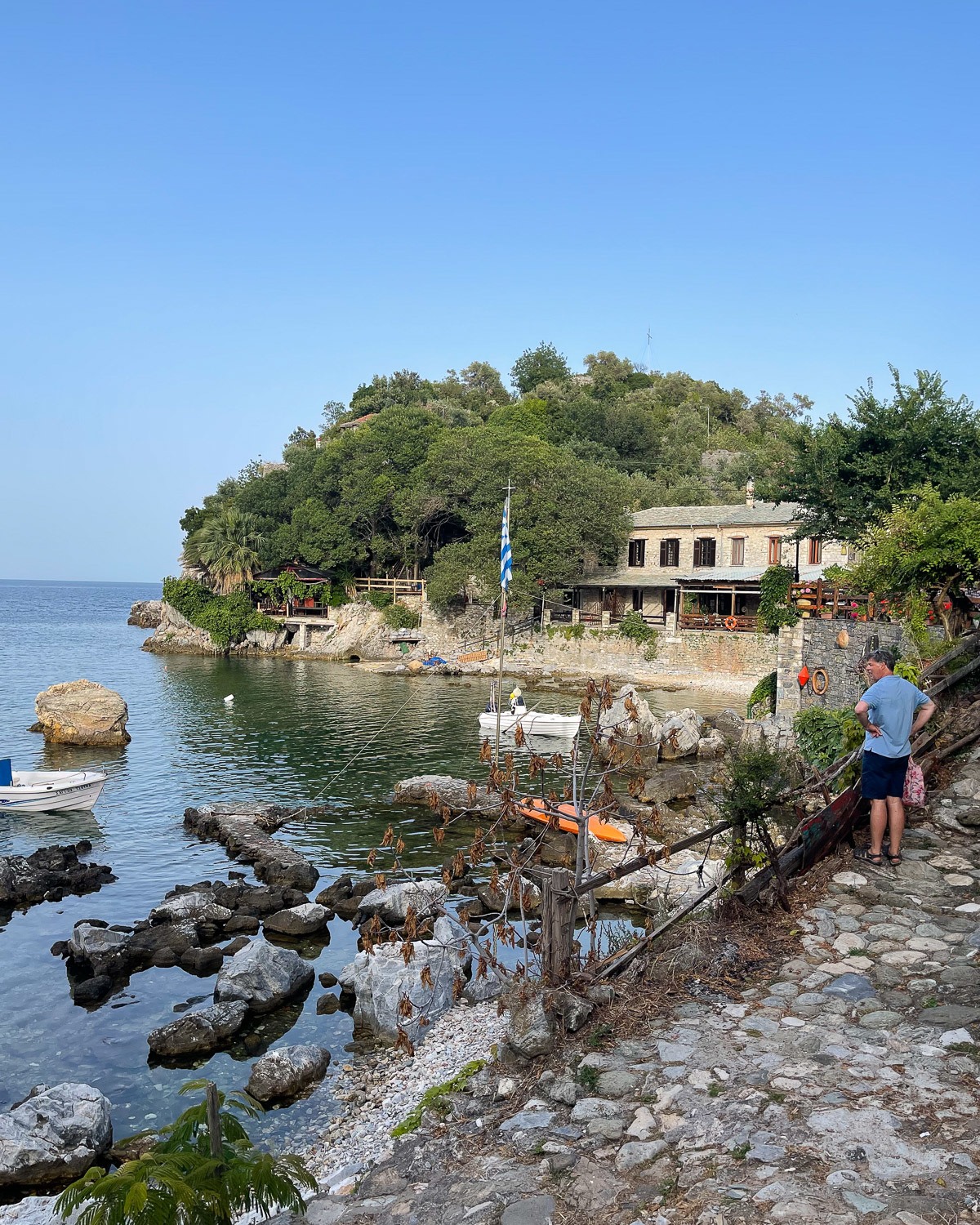
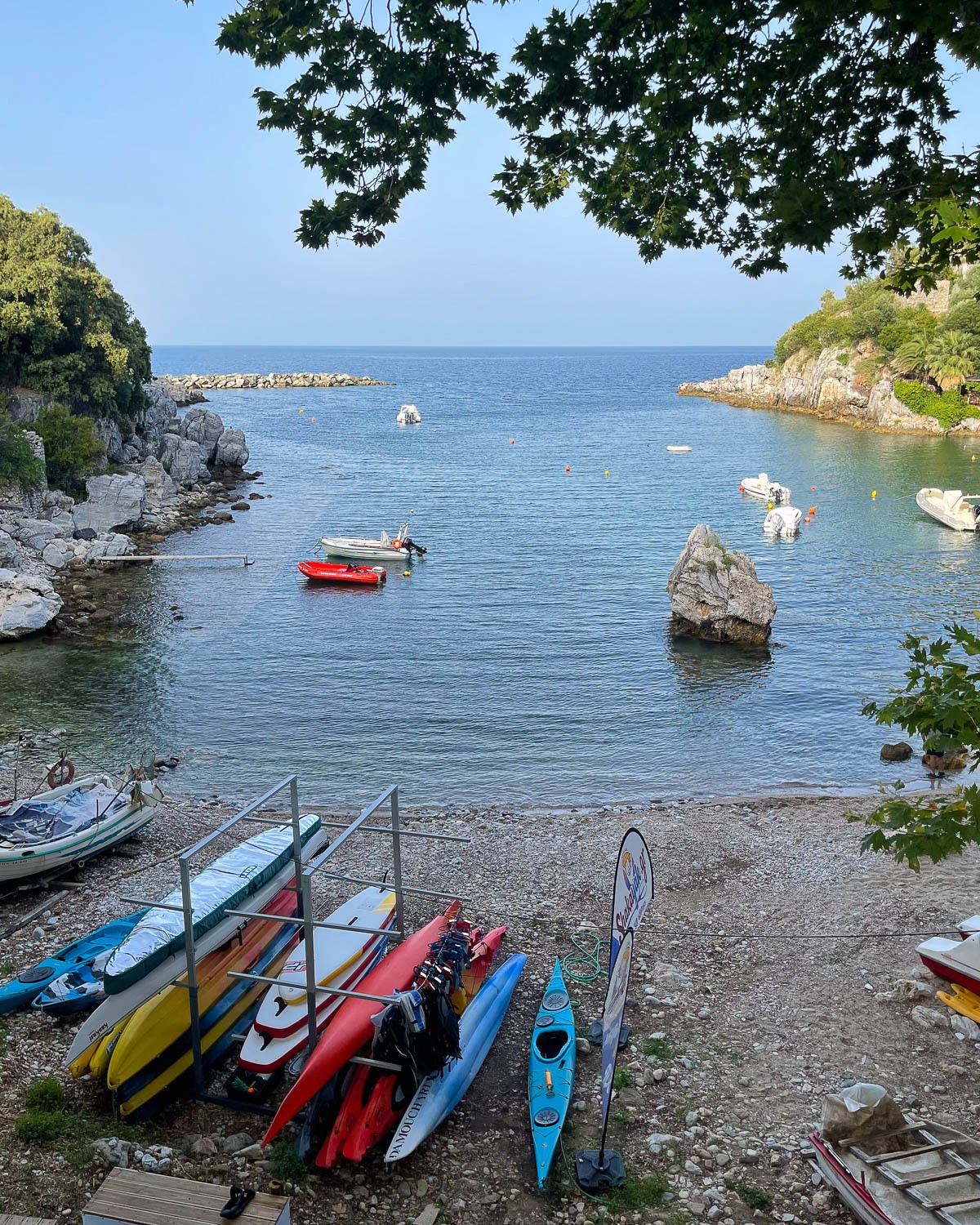
There’s no jetty in the small harbour now as it was built specially for the film and then dismantled to preserve the quiet character of the harbour. The production crew spent a month before the scenes were shot here, making sure that the charming cobbled streets of Damouchari looked just right to represent the pretty Greek island village on Kalokairi.
Damouchari Beach
A short walk past the port and through the cobbled streets of the hamlet brings you to the gorgeous Damouchari beach. Bordered by rocky cliffs on both sides, the beach is known for its round, white pebbles which makes for crystal clear water that invites you to swim.
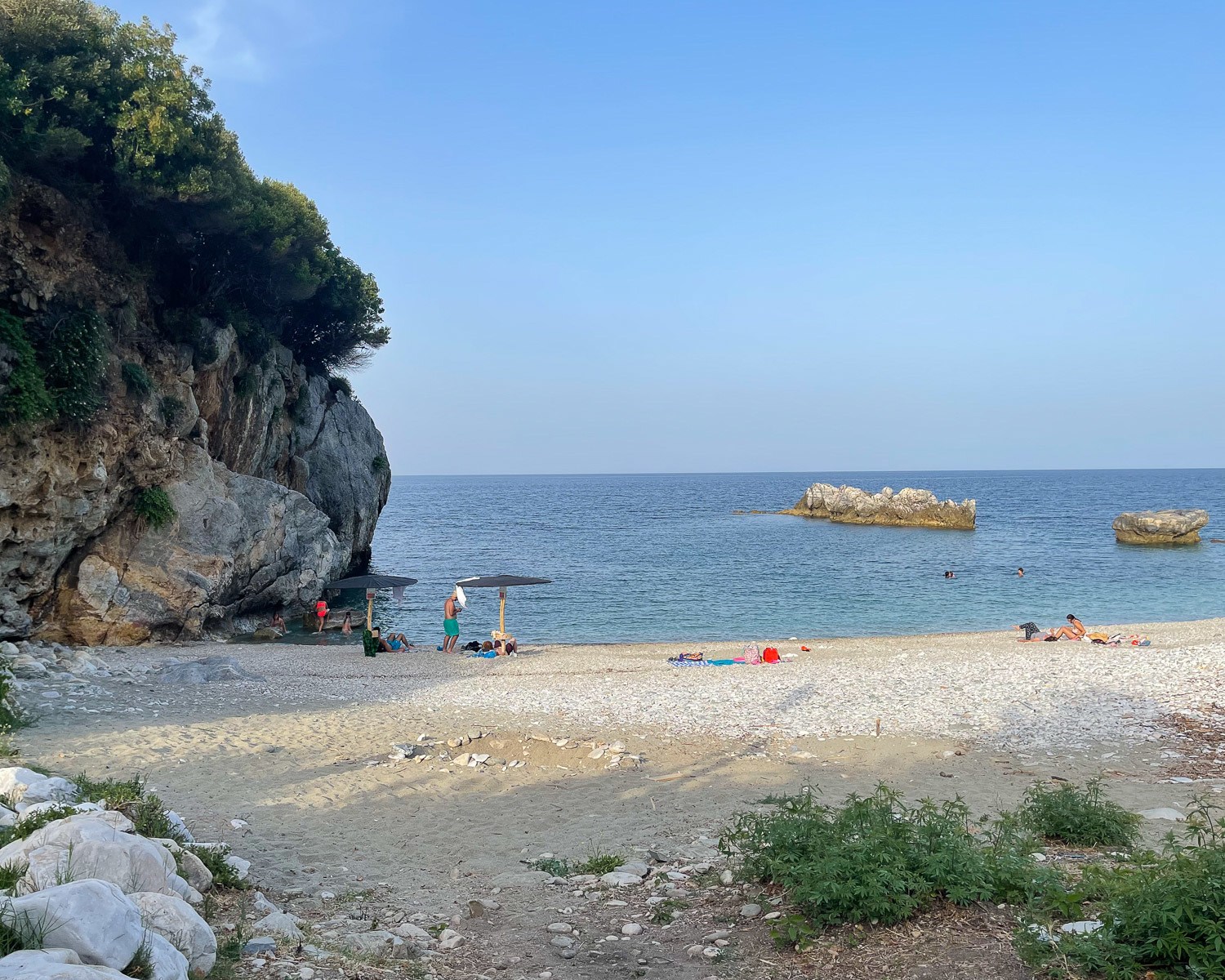
There’s a beach cafe here and walkers can continue along the footpath that leads up from the eastern end of the beach on an 8km hike to the mountain village of Tsagarada. You can also use the path to climb up a little way to the vantage point for photos looking down over the beach.
Read my article about all the Mamma Mia film locations in Greece
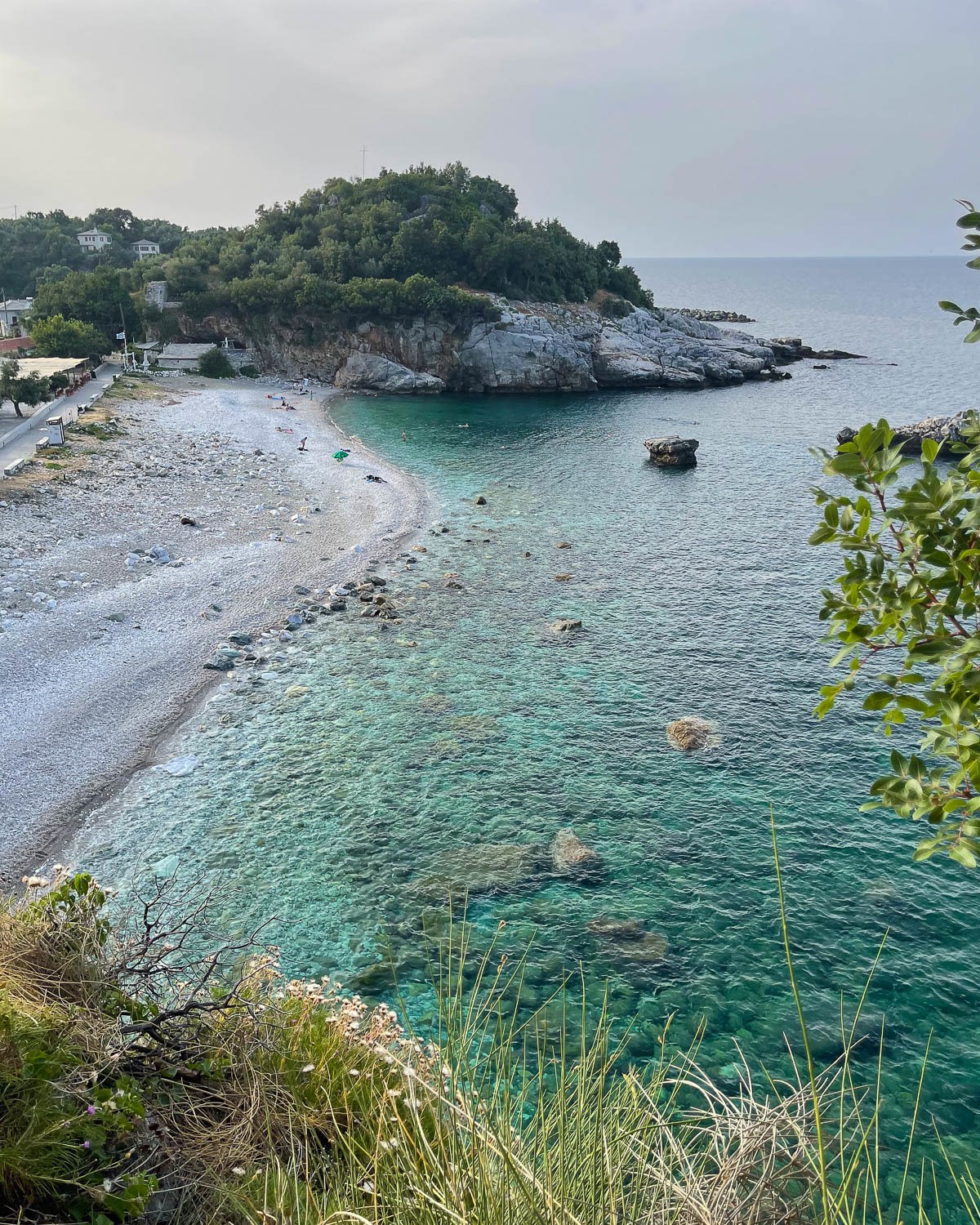
13. A boat trip to Trikeri island
At the tip of the Pelion peninsula, close to the islands of Skiathos and Skopolos, lies the island of Trikeri. This tiny island has no cars and just a couple of tavernas by the harbour that are open through the summer. Trikeri island can be reached by the water taxis and constantly cross the narrow straits, taking around 10 minutes, making this an ideal day trip.
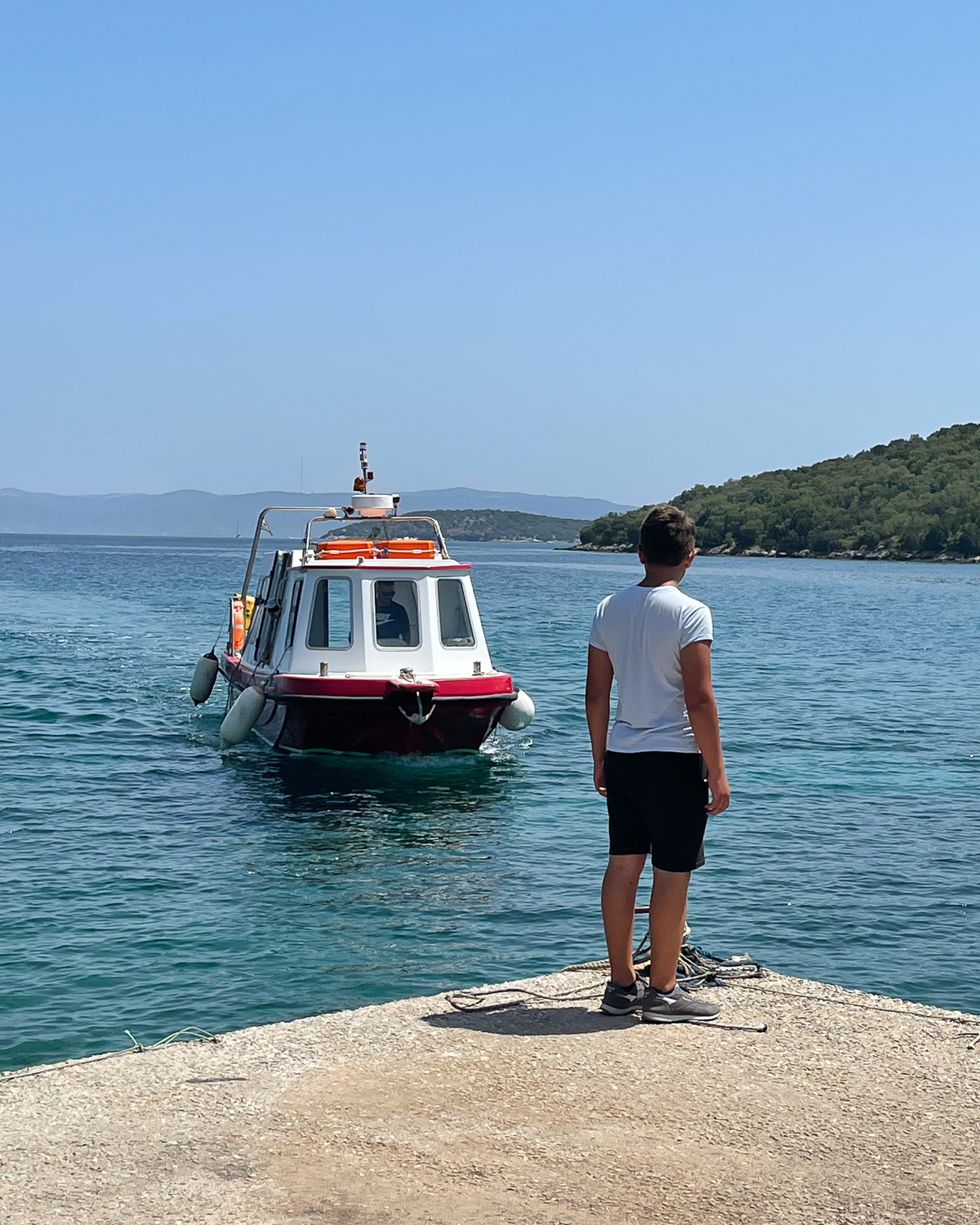
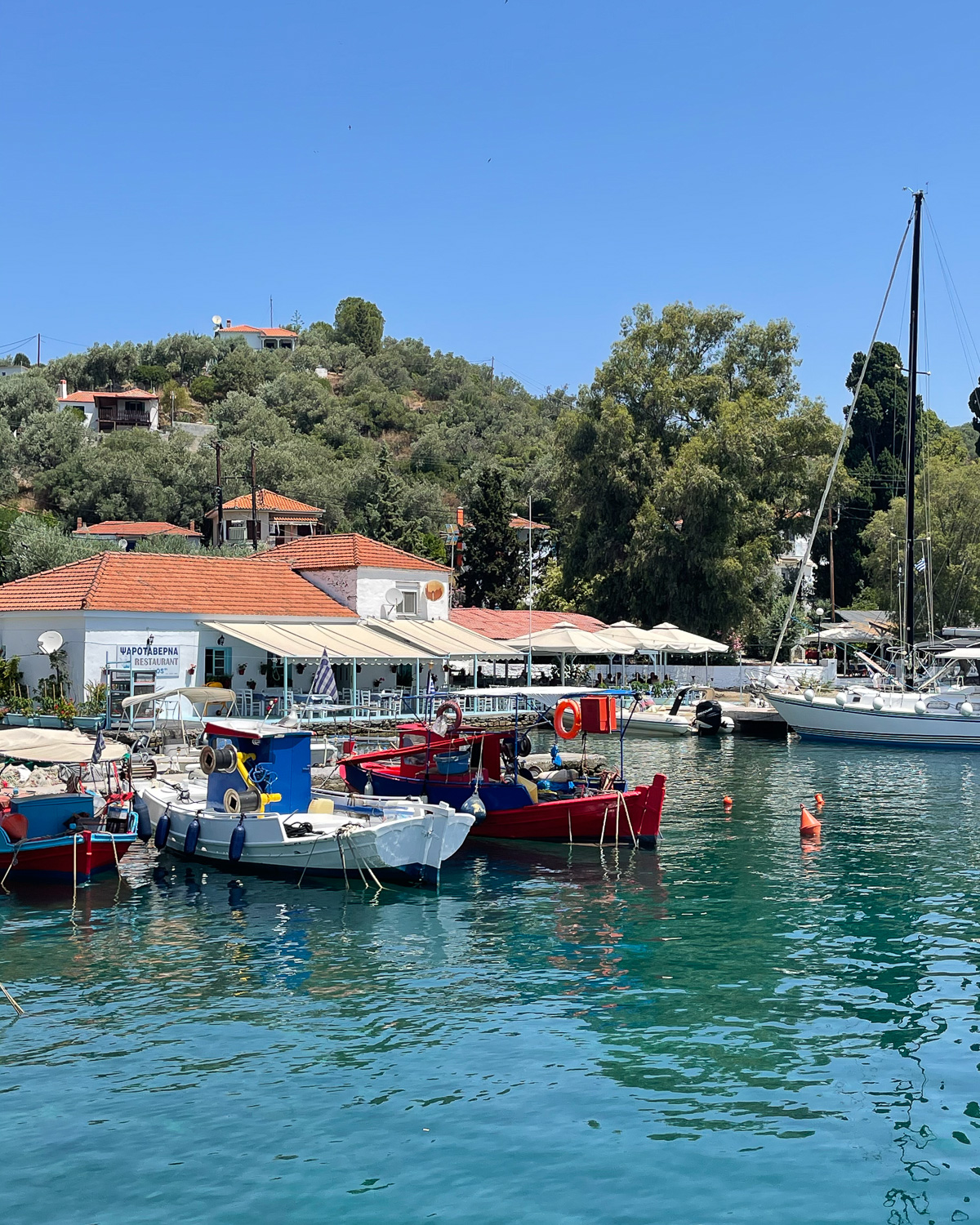
Once on the island we stopped for a snack of grilled octopus and Greek salad at the seafood taverna on the sea front, before a big party from one of the yachts that sail around the Sporades arrived and we left to explore the island. Following the main path we walked up to a large monastery that was founded in the 18th century but it was closed when we arrived. From there you can walk to a couple of quiet beaches that are good for swimming. It takes under an hour to cross the island, and we only passed a few other people as we explored this little piece of paradise.
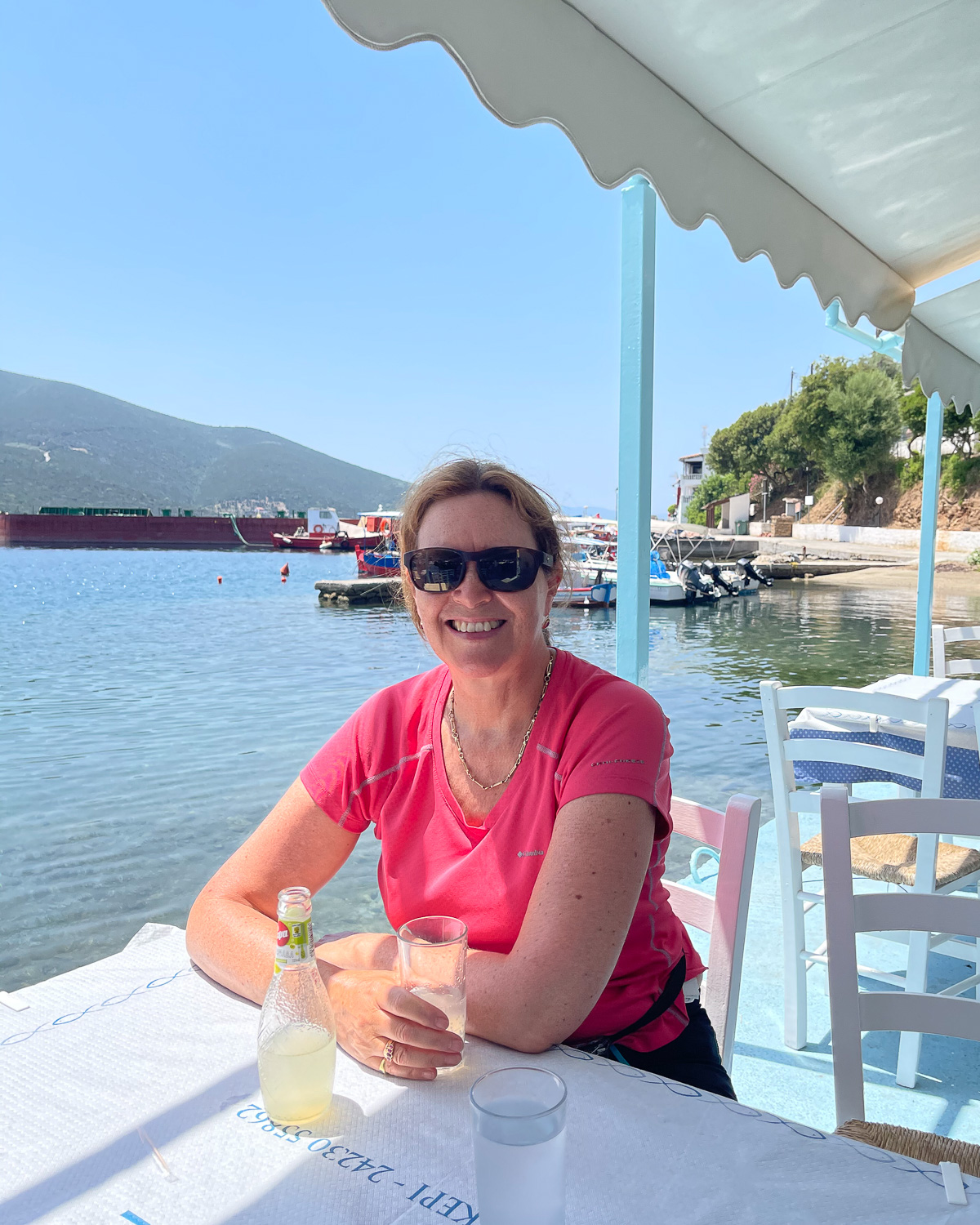
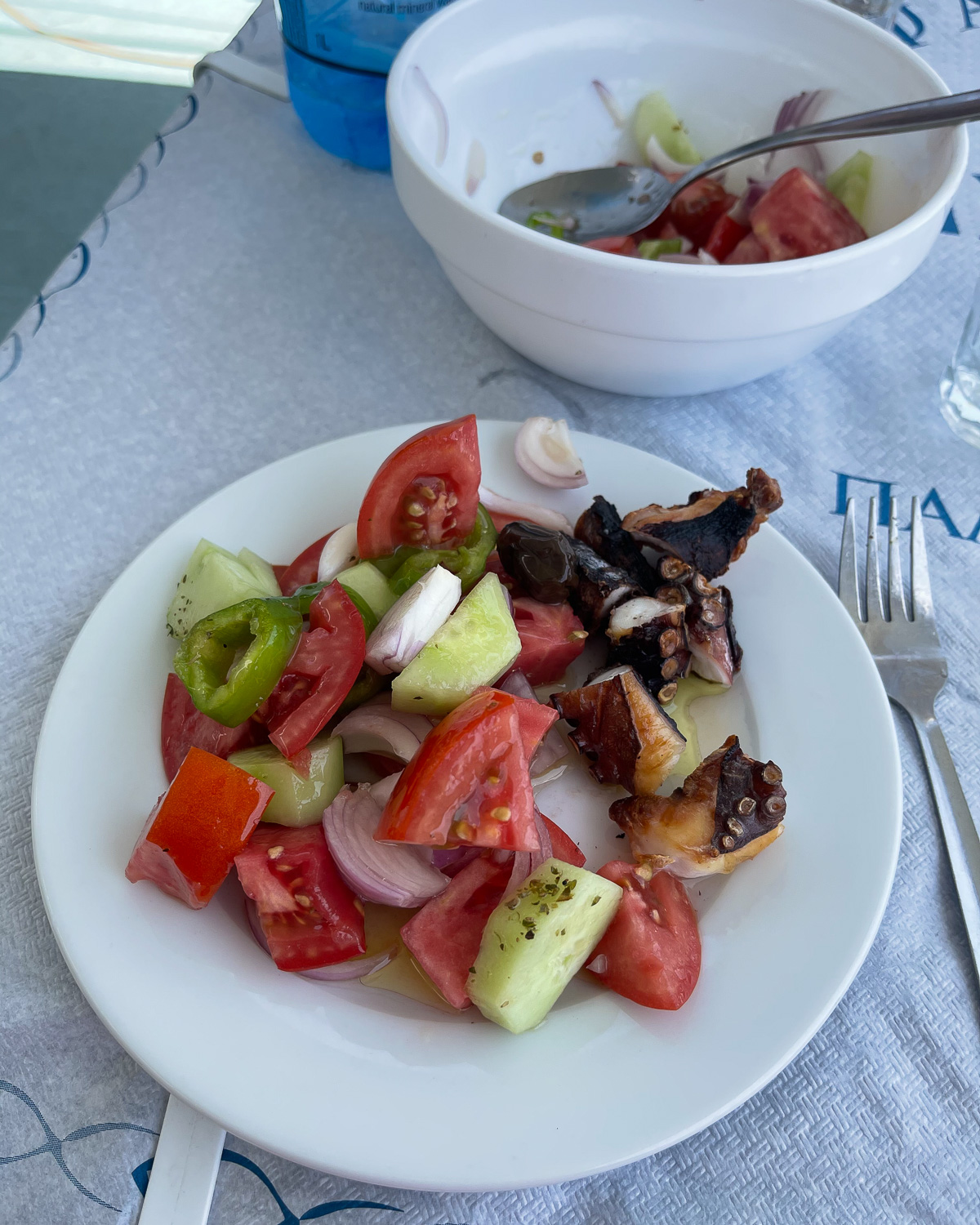
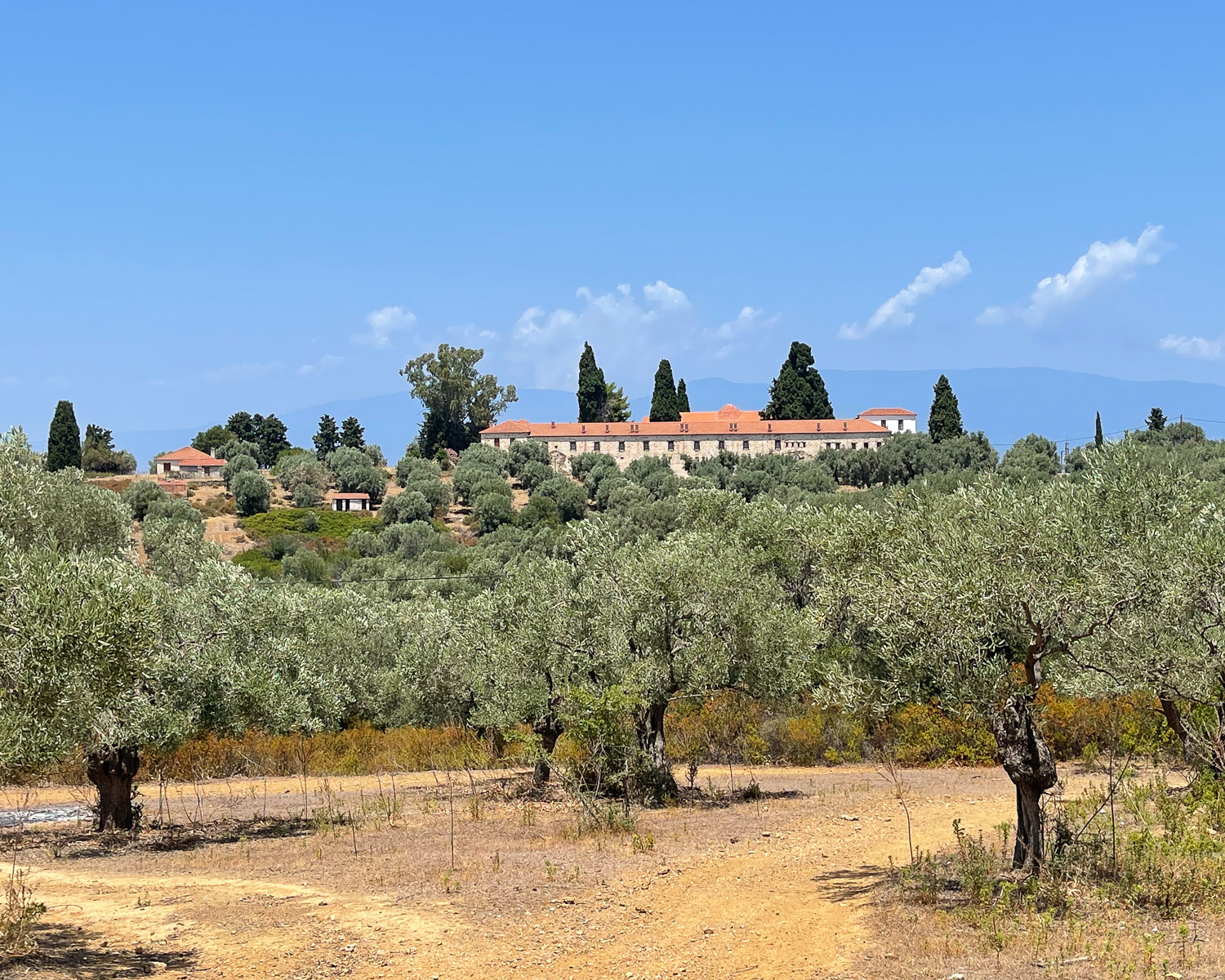
14. Kontos house – Theofilos museum of Anakasia
If you are driving up from Volos to Portaria or Makrinitsa, it’s worth stopping half way up the mountain at the Kontos House, also known as the Theofilos Museum, which is tucked away in the village streets of Anakasia. This traditional 3 story house was built in the 19th century and its interiors are covered with paintings by the folk artist Theofilos Hatzimihail, who was a friend of the owner.
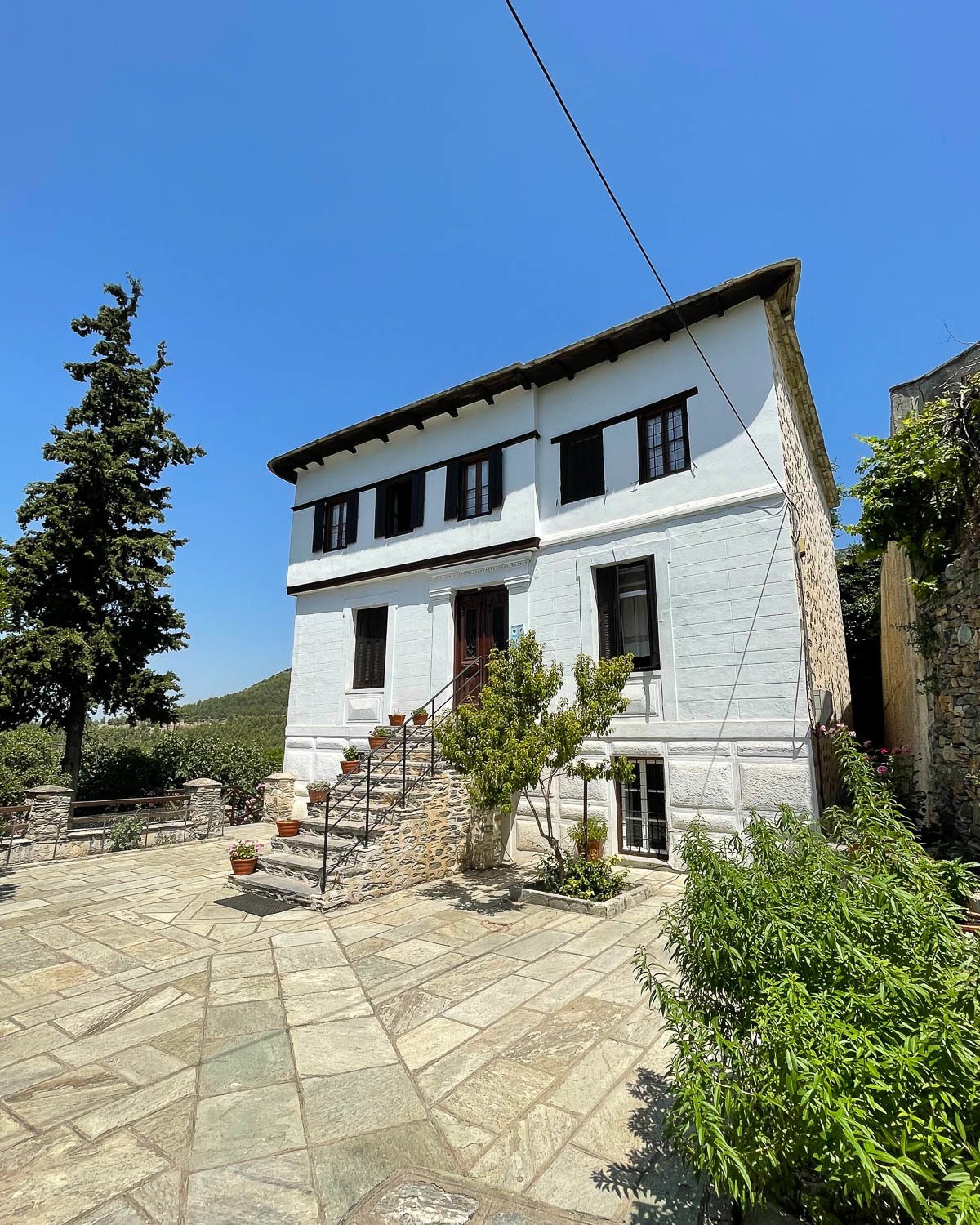
The 16 frescoes are beautiful examples of folk art, inspired by scenes from the Greek wars of independence and the gods of ancient Greek history. Theofilos was a talented folk artist who wandered around Volos and the Pelion for years at the end of the 19th century, scraping a living by painting shops and interiors, an eccentric lover of dressing up and inspired by Greek heroic past. Unfortunately photography is not allowed in the Museum, but it is free to visit, although best to check if it’s open before you make a special trip.
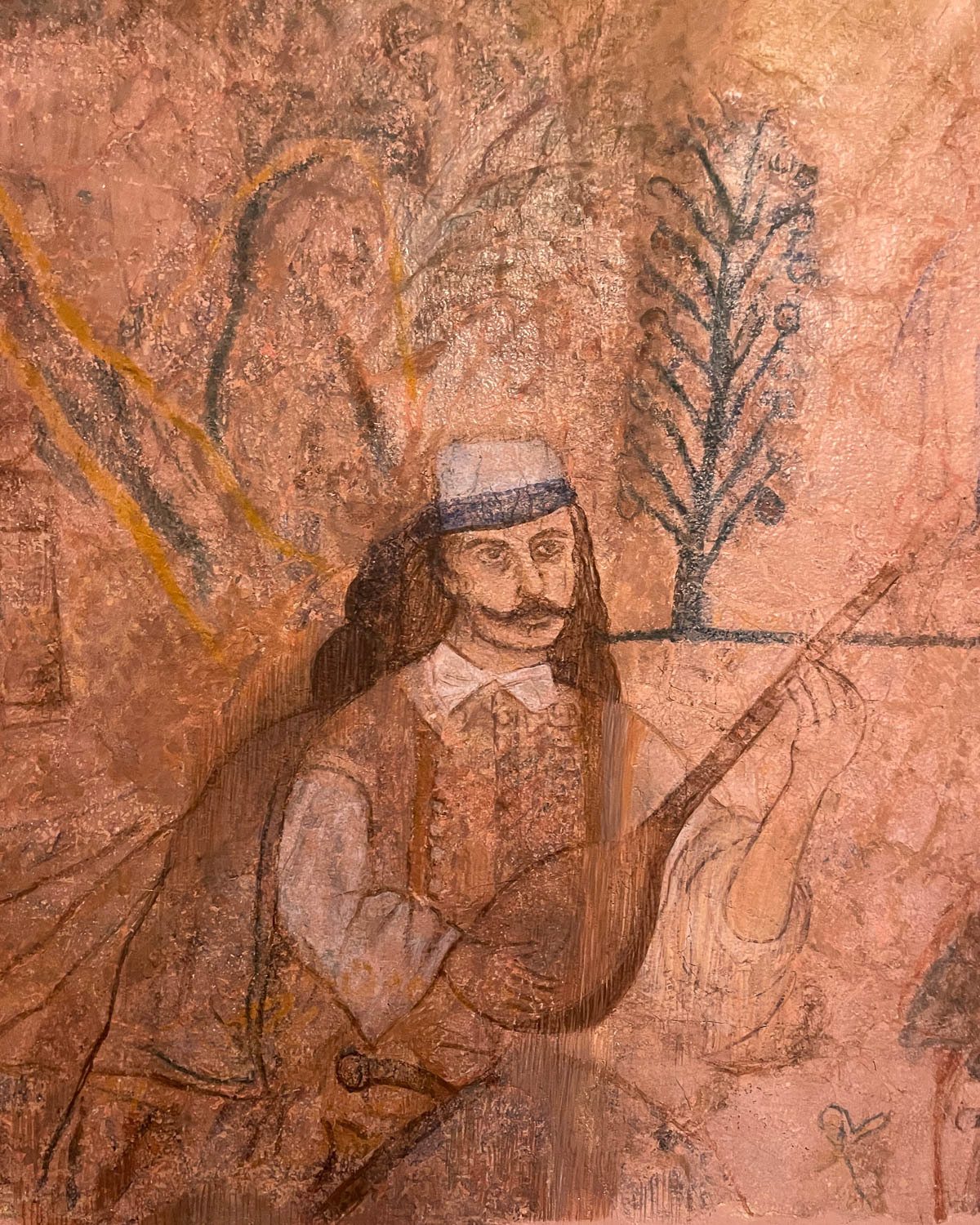
Where to stay in the Pelion
Hotel Aegli Volos
There are numerous hotels in and around Volos which make an ideal base to explore the city for a few days. The ones that we recommend for a pleasant break in Volos are;
Hotel Aegli has an enviable position, right on the harbour front and close to the bus station, train station and port (useful if you are connecting with the ferries to the Sporades). Two neo-classical buildings from the beginning of the 19th century, combine to enclose a glass covered central atrium.
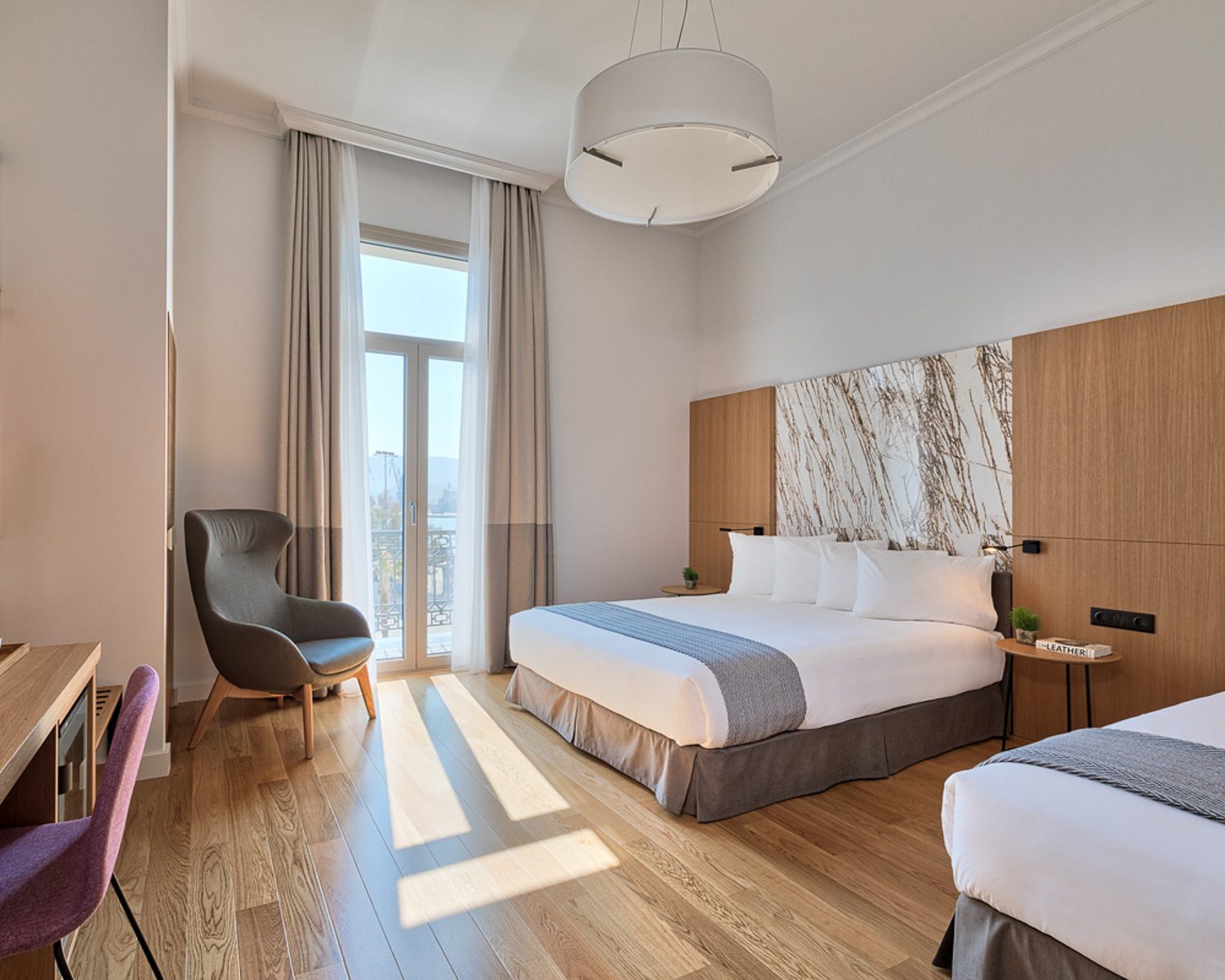
The 72 rooms and suites are contemporary in style, with views over the harbour and a buffet breakfast on offer. This would be an excellent choice of hotel for a city break in Volos if you want somewhere that’s stylish but very central. Check prices and book for Hotel Aegli.
Domotel Xenia Volos
While Volos is not really a resort town, the 5 star Domotel Xenia Volos is the closest thing you’ll get to a resort style hotel within the city. The hotel is located right on the seafront with views towards the Pagasetic Gulf, pleasant gardens and swimming pools, a spa and large car park.
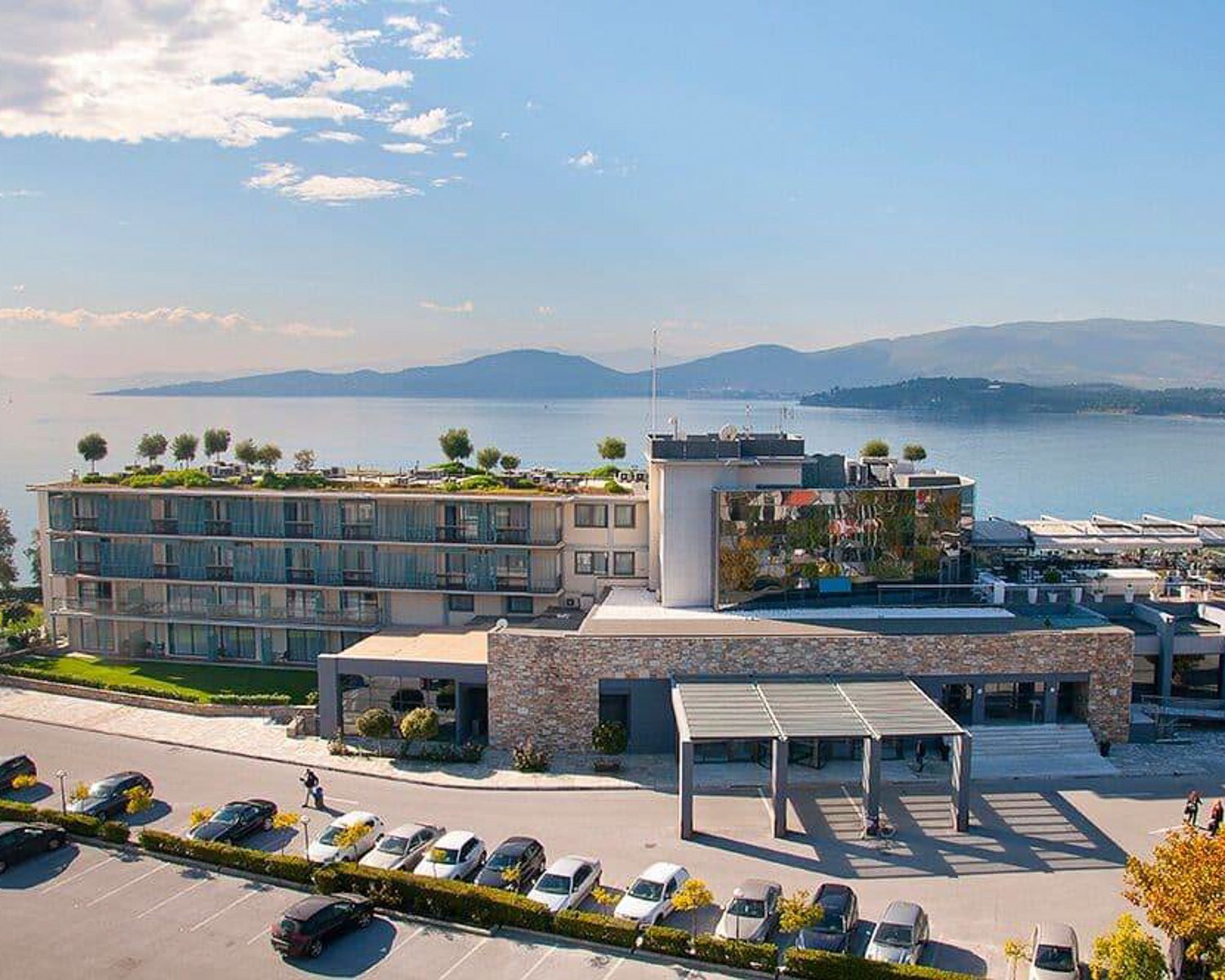
You are just a short walk from the harbour front, shopping and restaurants of Volos and this would be an excellent choice of hotel for those who like to combine relaxation with sightseeing. It’s also ideal for families, with pools, beach and lots of facilities. Check prices and book for Domotel Xenia Volos.
Where to stay in Makrinitsa Pelion
We stayed a couple of nights at Selina Centavrus Pelion in Makrinitsa. The hotel is part of a small international group that aims to appeal to nomadic travellers, offering a community and local connections as well as a great place to stay for a holiday. The decor here is stylish and contemporary, but with lots of reference in the wall murals and accessories to local crafts and traditions.
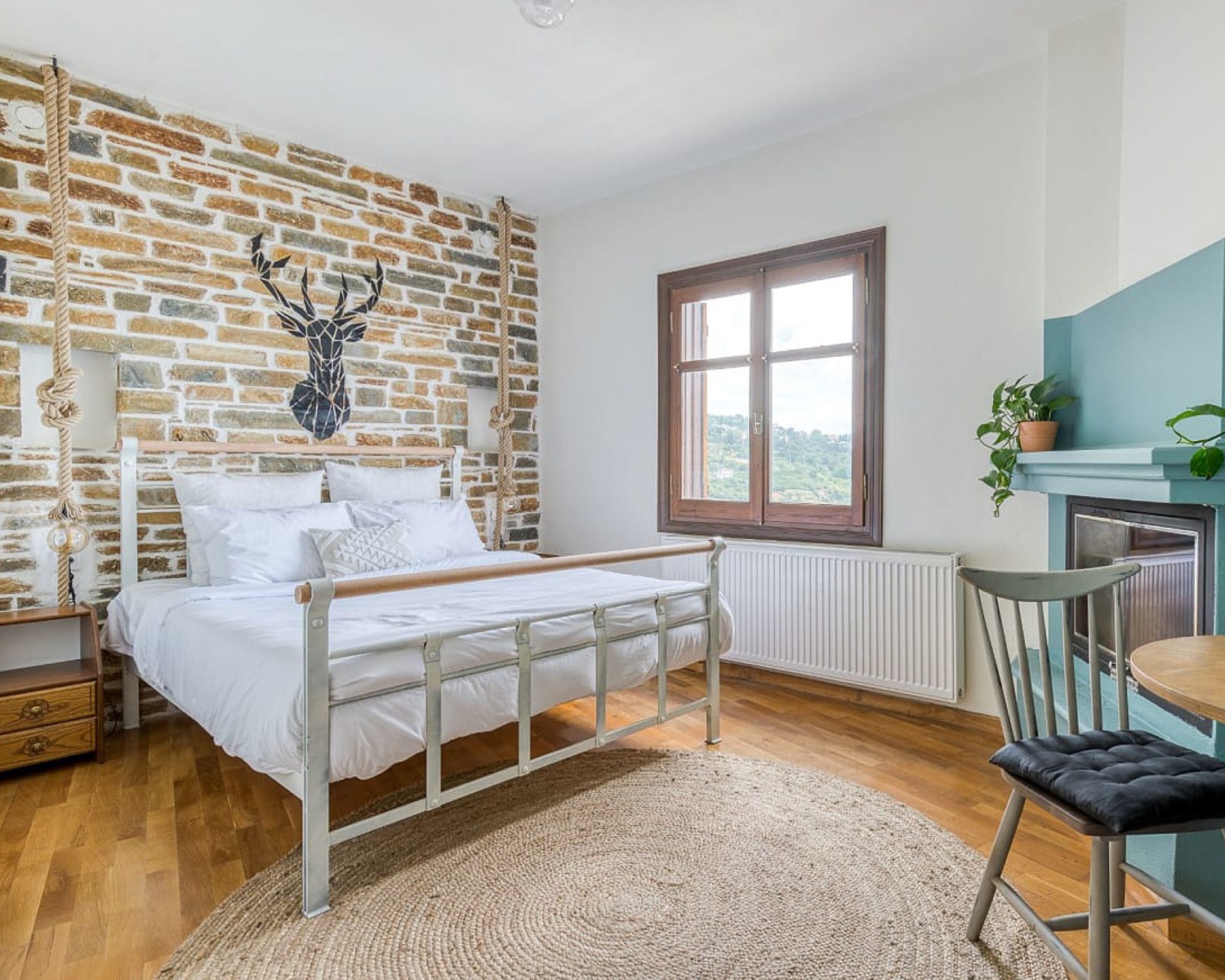
The hotel is made up of a collection of adjoining traditional houses, with its own parking garages. A short walk up the steep path above the hotel takes you to the central square of Makrinitsa. An excellent, healthy breakfast is on offer and the hotels also organises regular activities for their guests. Makrinitsa is a 35 minute drive from Volos so this makes a good second base to explore more of the Pelion. Check prices and book for Selina Centavrus Pelion.
Where to stay in Portaria Pelion
Kritsa Gastronomy Hotel is a charming, small hotel in the shady square in the centre of Portaria, which is a good alternative village to stay instead of Makrinitsa. The village is a 30 minute drive up the mountain from Volos, so this would make a good base to explore some of the Pelion villages.
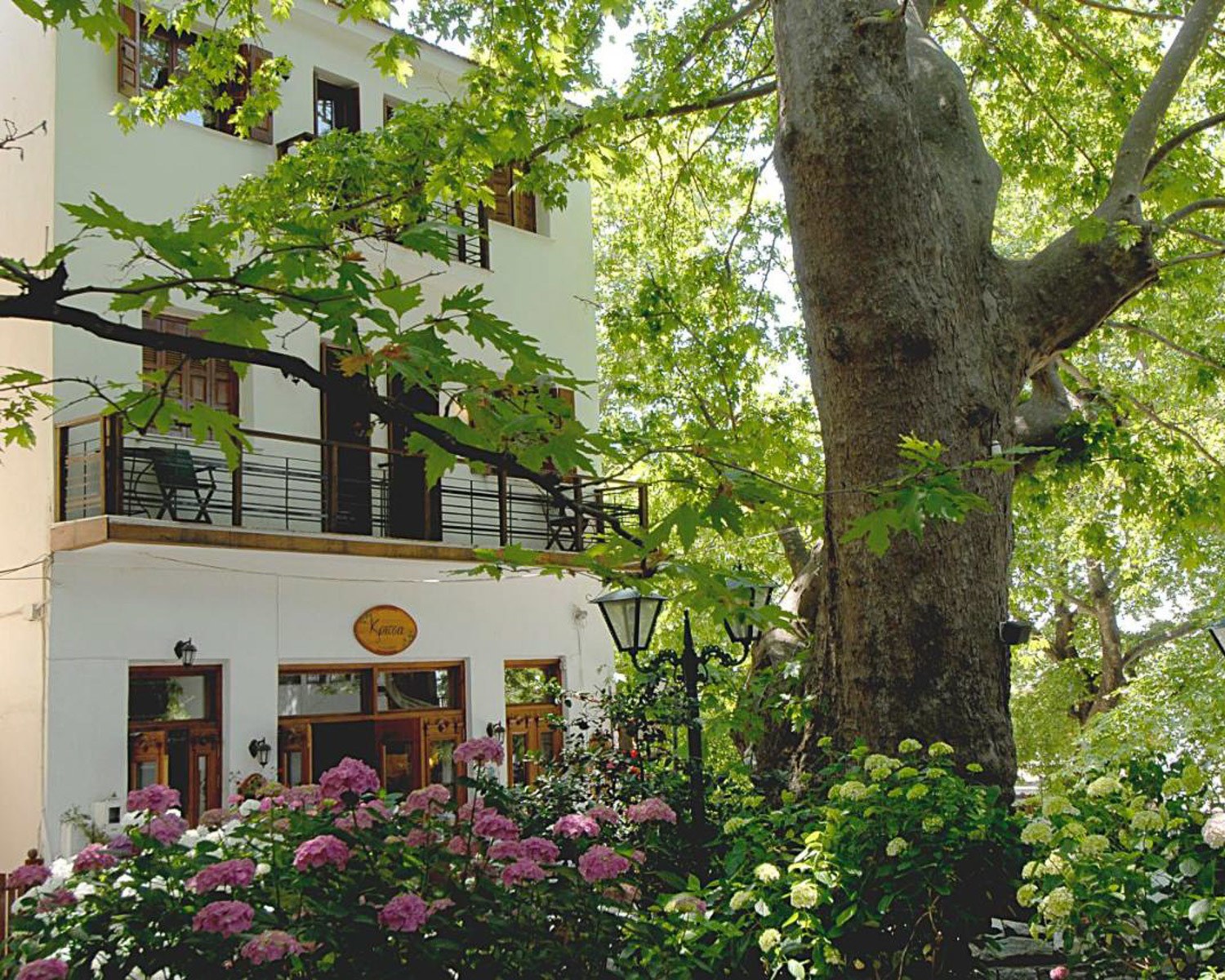
The rooms are traditional and comfortable, but the hotel has a strong reputation for its local cuisine and also has a car park nearby, which is a big benefit since parking can be tight in the mountain villages. Even if you don’t stay here, we can highly recommend it as a stop for lunch or dinner to taste some regional dishes. Check prices and book for Kritsa Gastronomy Hotel.
Where to stay in Afissos, Pelion
We booked Agnanti Hotel apartments in Afissos, which offered simple but comfortable accommodation and stayed for a few days. The property offers a number of studio apartments, so you have a bedroom with kitchenette and a terrace or outside seating area. Our room was stylish and well equipped, with views over the town and sea.
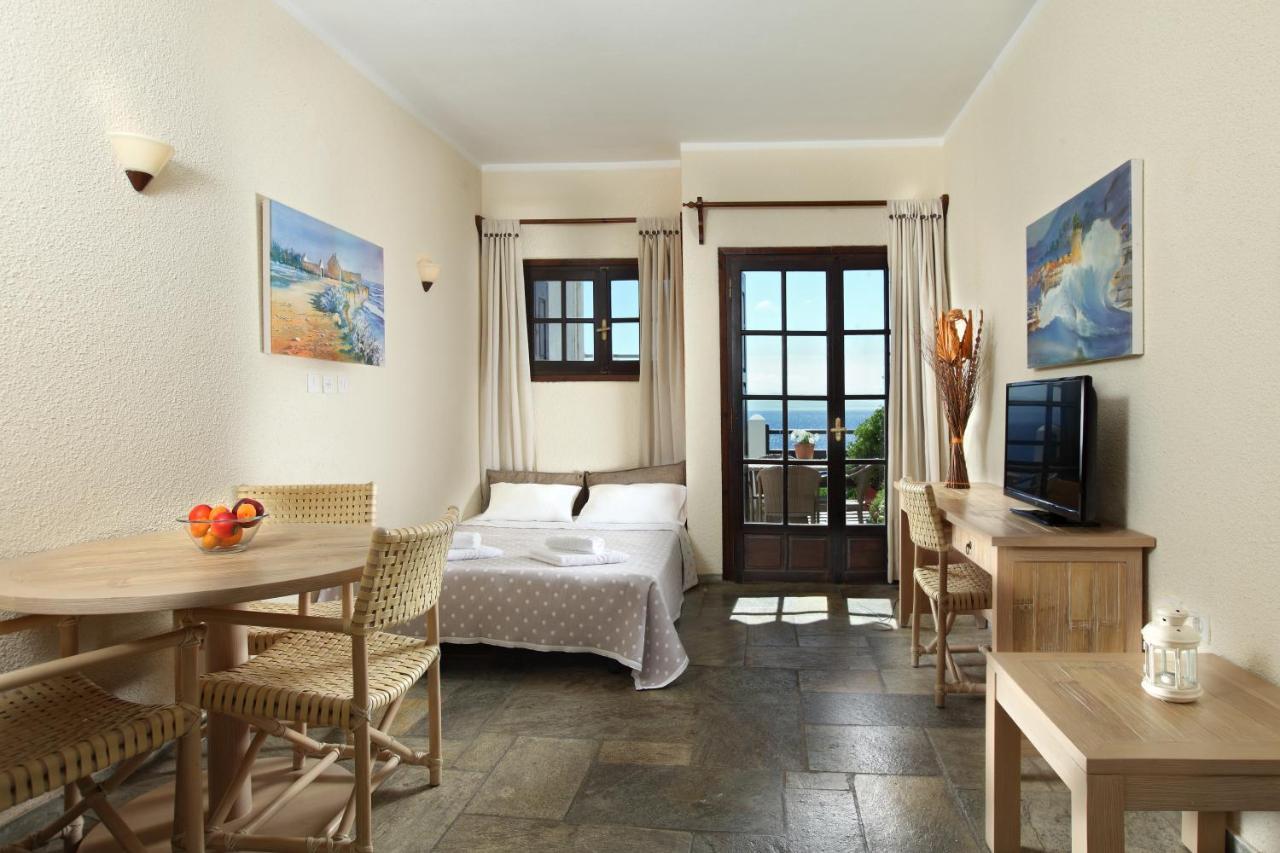
It was a short walk down steps and narrow lanes to the seafront, where we enjoyed a morning swim from the sea wall. This hotel has dedicated parking, although driving along the narrow lane to reach the property was a little nerve racking, something we gradually got used to when travelling around the Pelion! Check prices and book for Agnanti Hotel apartments
Where to stay in Agios Ioannis, Pelion
One of our favourite places to stay was the delightful Ammos Papanero guest house on Papa Nero Beach at Agios Ioannis. The accommodation was simple and comfortable, just a small studio room with a kitchenette. But the huge geranium filled terrace and sea views made this a wonderful place to stay in summer and the owner was incredibly welcoming and helpful. Check prices and book for Ammos Papanero guest house
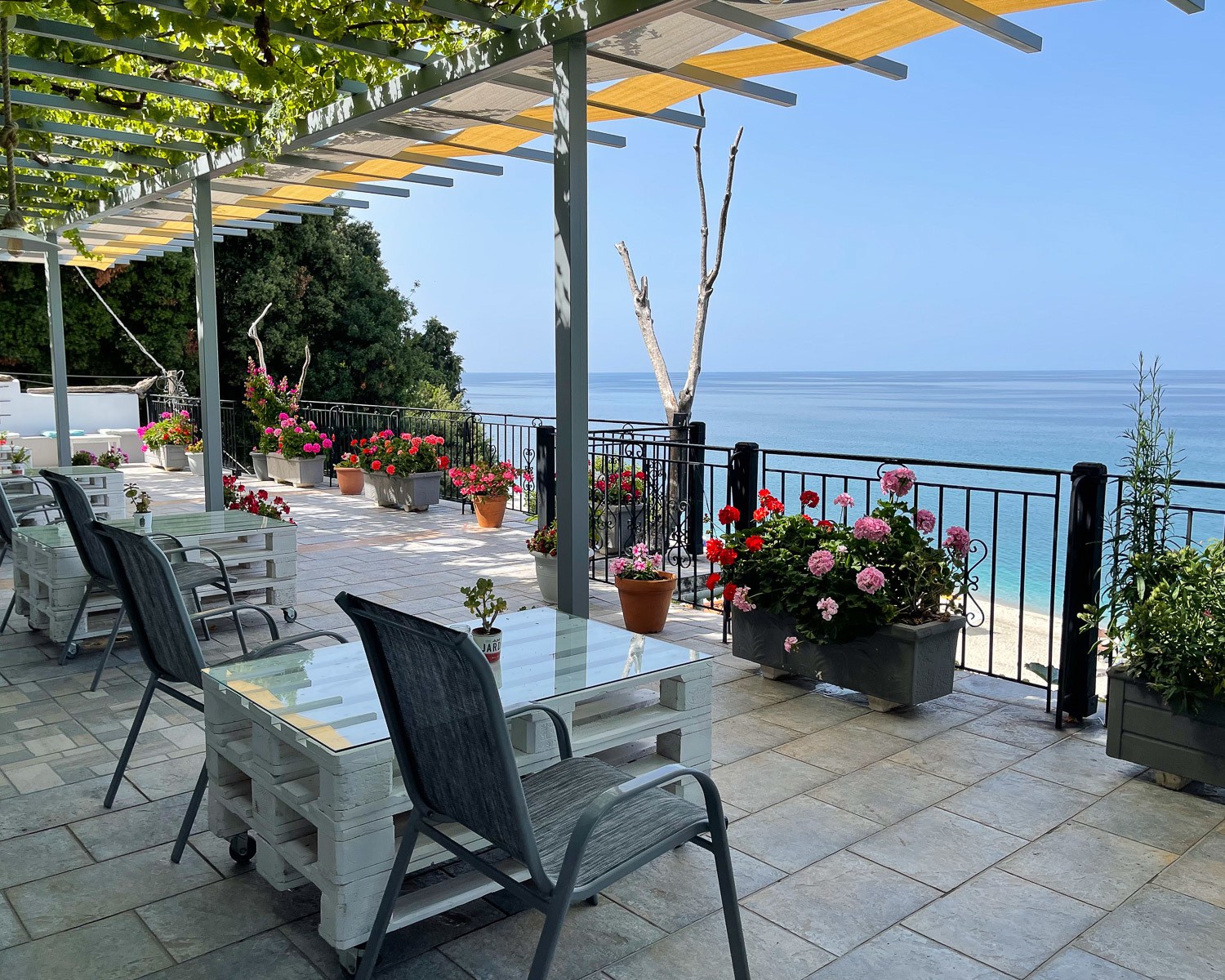
How long should I stay in Pelion?
The explore the Pelion Peninsula at a leisurely pace, I’d recommend taking at least a week and up to 2 weeks if you have time and want to combine sightseeing with beach time and relaxation.
The gateway city of Volos requires at least 2 full days to see the main sites, soak up the atmosphere of the harbour and square and spend some time at Alykes beach. You don’t really need a car in the centre of Volos as most things can be visied on foot or by hiring a bike.
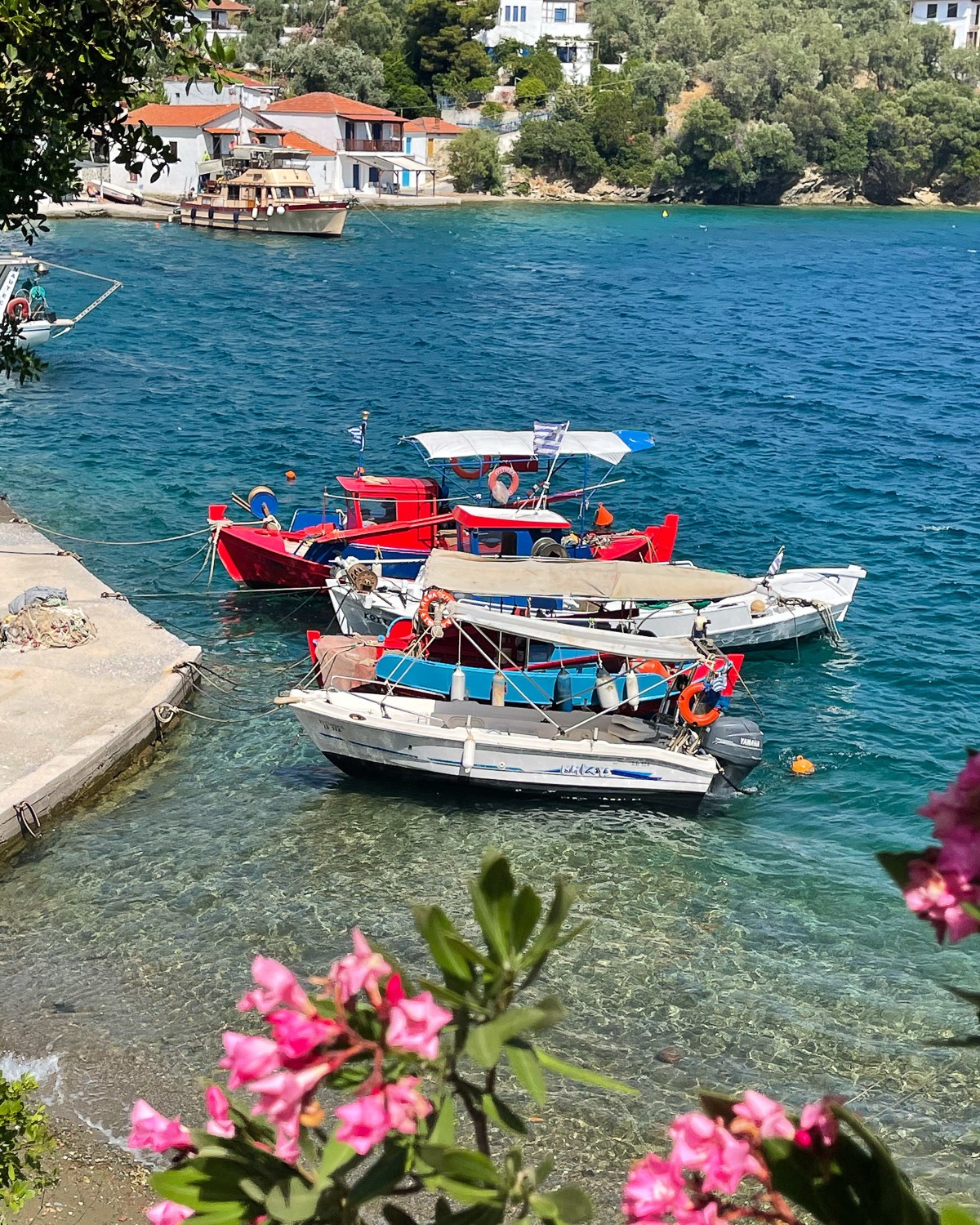
A third day in Volos can be spent exploring some of the areas close to the city, such as the mountain villages of Makrinitsa and Portaria, which can be easily reached in a day trip by bus or car. To fully explore the rest of the Pelion I’d recommend hiring a car and renting accommodation at a couple of different locations. Ideal spots for accommodation are the beautiful coastal locations of Agria, Afissos and Agios Ioannis or in one of the historic mansion hotels in the mountain villages.
After 2-3 days based in Volos, a trip of 5-7 days will enable you to get a feel for the essence of the Pelion peninsula and you may want to add on a couple of days for extra time to relax at the end of your holiday. If you have even more time, why not catch a ferry from Volos for a few days on one of the Sporades islands, such as Skiathos, Skopolos or Alonissos?
Map of Volos and the Pelion peninsula
You can find all the places mentioned in this article in this handy map of Volos and the Pelion.
How to get around Pelion Greece
Flights – there is an airport at Volos which is mainly used for summer charter flights. Alternative airports in Greece are Athens (4 hours by car/ bus) or Thessaloniki (3 hours by car/ bus).
Bus – From other parts of mainland Greece, bus is probably the best way to reach Volos as a starting point for your tour of the Pelion. We took the inter-city bus from Athens, which runs several times a day and takes 4 hours, with a rest stop at the service station at the halfway point. The inter-city bus from Thessaloniki to Volos also runs regularly and takes around 3 hours. Both buses can be booked online in advance at the KTEL website or tickets can be bought on the day at the bus station. Look out for the buses that run direct which are the quickest.
From Volos, there are some buses that run between the major villages of the Pelion, and these could be an option if you prefer to take public transport, although the buses may not be very frequent. If you want to see the most of the Pelion, and have maximum flexibility, we recommend hiring a car to get around.
Train – you can also travel to Volos from Athens by train and from other towns within the region of Thessaly. Because the train does not go direct to Athens, but requires a change, the journey is longer and also a bit more expensive than the bus. Other than the “Little train of Pelion” which is mainly aimed at tourists taking a day trip, there are no train routes around the Pelion.
Car – Once you have visited Volos and the places that are close to the city with good public transport links, we recommend hiring a car to explore the rest of the Pelion peninsula. There are a number of car hire offices located within walking distance of the bus and train stations, clustered together near Plateia Riga Fereou. To find the best car hire deals, we recommend checking on Holiday autos and booking well ahead if you visit in high season. https://www.holidayautos.com/car-hire/greece/#/searchcars We hired from Green Motion in Volos and were happy with their service.
Ferry – Volos is linked with numerous ferries from the Sporades islands and there is an international airport on Skiathos, so this is an alternative way to reach Volos, especially if you want to combine city sightseeing with island beaches. Ferries between Volos and the Sporades islands are operated by Hellenic Seaways, Anes Ferries and Aegean Flying Dolphins.
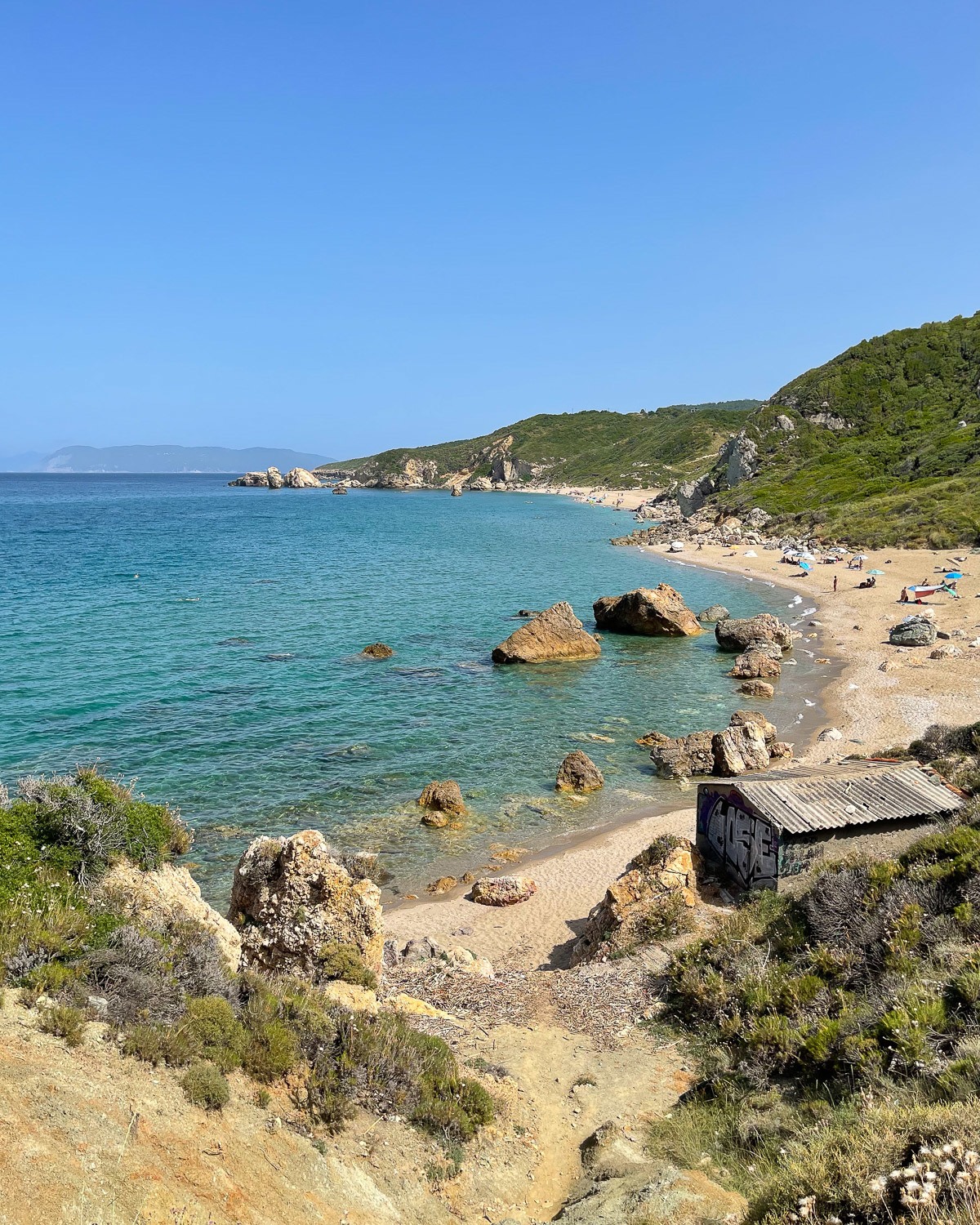
Pin it

This article is originally published at Heatheronhertravels.com

